
Anna Magnani
Irving Penn
James Baldwin
Sister Cortia Kent
Agnes Varada
Donald Judd
Letizia Battagli
Eli Reed
Sylvia Plachy
Paolo Pellegrin
Renzo Piano
Teju Cole
Sonia Delauney
Luis Barragon
Lee Freidlander
Bodys Isek Kingelez
Tarsila Do Amaral
Alexey Brodivitch
Michaelangelo Antonioni
Georgia O’Keefe
Alvin Ailey
Franciose Truffaut Guy Richie Susan Meiselas
Zuzana Licko
Peter Zumthor
Annie Albers
Jean-Luc Dodard
OP
2 10 18 26 34 42 50 58 66 74 82 90 98 102 108 118 124 132 140 148 156 164 172 180 188 196 204 212 PAGE i | PERSONS OF INTEREST | ISSUE 1
TABLE OF CONTENTS | PAGE ii O Lina Wertmuller Massimo Vignelli Zaha Hadid Akira Kurosawa Isamu Nogusch Francis Ford Coppola Seydou Keita Diana Vreeland Helen Levitt Gertrude Stein Lisette Model Bridget Riley Barbra Kruger Shirin Neshat Roy deCarava Doug Wheeler Elaine & Saul Bass Twyla Tharp Gilles Peress Varvara Stepanova Camile Walala Richard Serra Alexander Rodchenko John Cohen Frida Kahlo John Cage Bernice Abbott Carrie Mae Weems 220 228 236 244 252 258 262 270 278 286 294 298 302 310 318 326 334 342 350 358 366 374 382 390 398 408 416 424
ANNA MAGNANI
ACTRESS
Born in Rome, she worked her way through Rome’s Academy of Dramatic Art by singing at night clubs. During her career, her only child was stricken by polio when he was 18 months old and remained disabled. She was referred to as “La Lupa”, the “perennial toast of Rome” and a “living she-wolf symbol” of the cinema. Time described her personality as “fiery”, and drama critic Harold Clurman said her acting was “volcanic”. In the realm of Italian cinema, she was “passionate, fearless,
and exciting,” an actress whom film historian Barry Monush calls “the volcanic earth mother of all Italian cinema.” Director Roberto Rossellini called her “the greatest acting genius since Eleonora Duse”. Playwright Tennessee Williams became an admirer of her acting and wrote The Rose Tattoo (1955) specifically for her to star in, a role for which she received an Academy Award for Best Actress, becoming the first Italian ever - and first non English speaking woman - to win an Oscar.
In 1933, Magnani was acting in experimental plays in Rome when she was discovered by Italian filmmaker Goffredo Alessandrini. [5] The couple married the same year. Nunzio Malasomma directed her in her first major film role in The Blind Woman of Sorrento (La Cieca di Sorrento, 1934). Goffredo Alessandrini directed her in Cavalry (Cavalleria, 1936). For director Vittorio De Sica, Magnani starred in Teresa Venerdì (1941). De Sica called this Magnani’s “first true film”.
PAGE 2 | PERSONS OF INTEREST | ISSUE 1
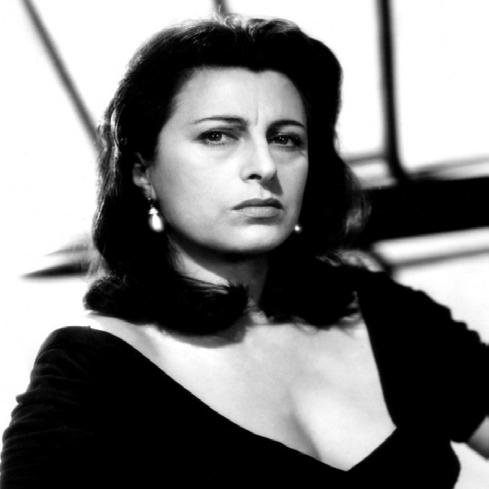
ANNA MAGNANI | PAGE 3
ANNA MAGNANI, CIRCA 1950 TAKEN BY BUD FRAKER
ANNA MAGNANI, “WILD IS THE WIND”

PAGE 4 | PERSONS OF INTEREST | ISSUE 1

ANNA MAGNANI | PAGE 5


 MOVIE POSTER FOR MAMMA ROMA
MOVIE POSTER FOR MAMMA ROMA
 ANNA MAGNANI IN ANGELINA
ANNA MAGNANI IN ANGELINA
Irving Penn was an American photographer known for his fashion photography, portraits and still lifes. Born in Plainfield, New Jersey, to Russian immigrant parents, Penn studied under the acclaimed photographer and designer Alexey Brodovitch at the Philadelphia Museum School of Industrial Art. He then relocated to New York where he worked as an assistant to Brodovitch at Harper’s Bazaar, creating illustrations for a year. In 1941 he dedicated himself to painting for an entire year, traveling through
the southern United States and living in Mexico. Penn’s work initially had an ideal outlet on the pages of Vogue, where it was finely reproduced and widely disseminated. However, in the early 1950s, the editors began to feel that Penn’s photographs were too severe for the magazine, that they “[burned] on the page.” As a result, his assignments were reduced and he turned to advertising. Penn welcomed the challenges this new field offered, particularly in the areas of still life photography, and experimented
with strobe lights to produce dynamic images that revolutionized the use of photography in advertising. Penn’s creativity flourished during the last decades of his life. His innovative portraits, still life, fashion, and beauty photographs continued to appear regularly in Vogue. During his lifetime, he established The Irving Penn Foundation, which grew out of the studio and whose devotion to Penn’s legacy is derived from contact with his remarkable spirit.
IRVING PENN
PHOTOGRAPHER
PAGE 10 | PERSONS OF INTEREST | ISSUE 1
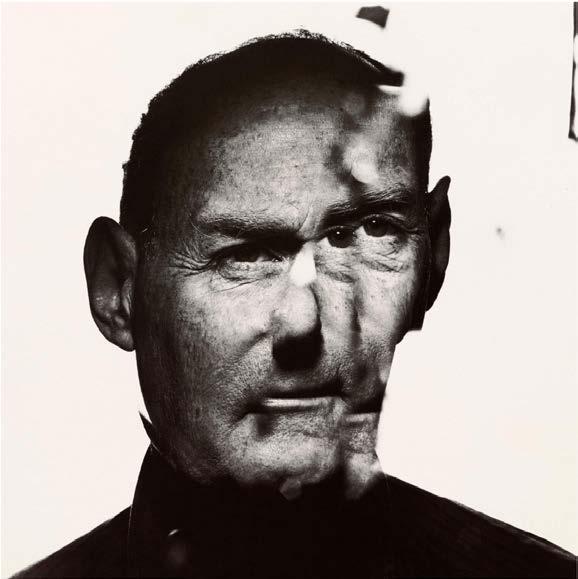 IRVING PENN, IRVING PENN: CRACKED MIRROR, NEW YORK, 1986
IRVING PENN, IRVING PENN: CRACKED MIRROR, NEW YORK, 1986
 Black and hite Portrait of Jean Patchett Shot for Vogue in 1949
Black and hite Portrait of Jean Patchett Shot for Vogue in 1949

PAGE 15
 UNKNOWN PHOTOGRAPHER, IRVING PENN AT WORK IN CUZCO, 1948. © THE IRVING PENN FOUNDATION
UNKNOWN PHOTOGRAPHER, IRVING PENN AT WORK IN CUZCO, 1948. © THE IRVING PENN FOUNDATION

PAGE 17
BALL DRESS BY OLIVIER THEYSKENS FOR NINA RICCI, NEW YORK, 2007
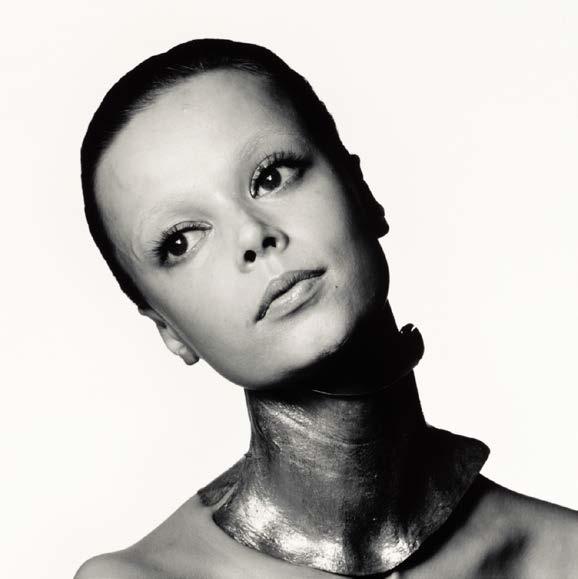
1969
MOUCHE WITH GOLD NECK BAND, PARIS,
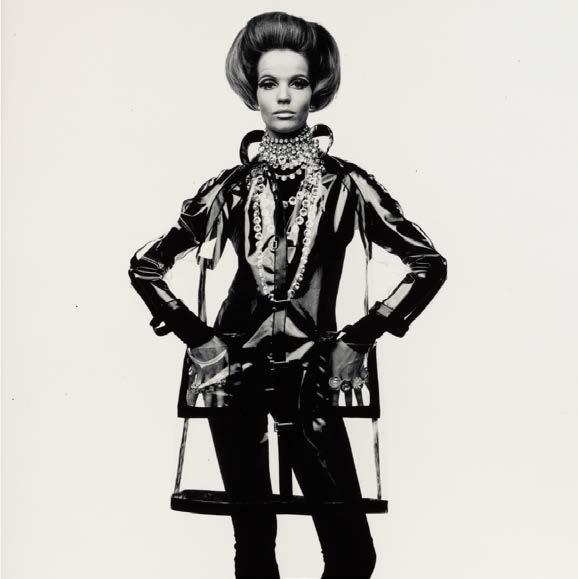
(VERUSCHKA), NEW YORK, 1965
TRANSPARENT RAINCOAT
JAMES BALDWIN

WRITER | CIVIL RIGHTS ACTIVIST
James Baldwin was born in Harlem in 1924. The oldest of nine children, he grew up in poverty, developing a troubled relationship with his strict, religious stepfather. As a child, he cast about for a way to escape his circumstances. As he recalls, “I knew I was black, of course, but I also knew I was smart. I didn’t know how I would use my mind, or even if I could, but that was the only thing I had to use.” By the time he was fourteen, Baldwin was spending much of his time in libraries and had found his passion for writing.
During the last ten years of his life, he produced a number of important works of fiction, non-fiction, and poetry. He also turned to teaching as a new way of connecting with the young. By 1987, when he died of stomach cancer at age 63, James Baldwin had become one of the most important and vocal advocates for equality. From Go Tell It on the Mountain to The Evidence of Things Not Seen (1985), James Baldwin created works of literary beauty and depth.
PAGE 18 | PERSONS OF INTEREST | ISSUE 1

| PAGE 19
JAMES BALDWIN
JAMES BALDWIN BY TED THAI

PAGE 20 | PERSONS OF INTEREST | ISSUE 1

Neither love nor terror makes one blind: indifference makes one blind.
—JAMES BALDWIN
PAGE 22 | PERSONS OF INTEREST | ISSUE 1
COLLECTION
OF THE SMITHSONIAN NATIONAL MUSEUM OF AFRICAN AMERICAN HISTORY AND CULTURE, GIFT OF THE BALDWIN FAMILY
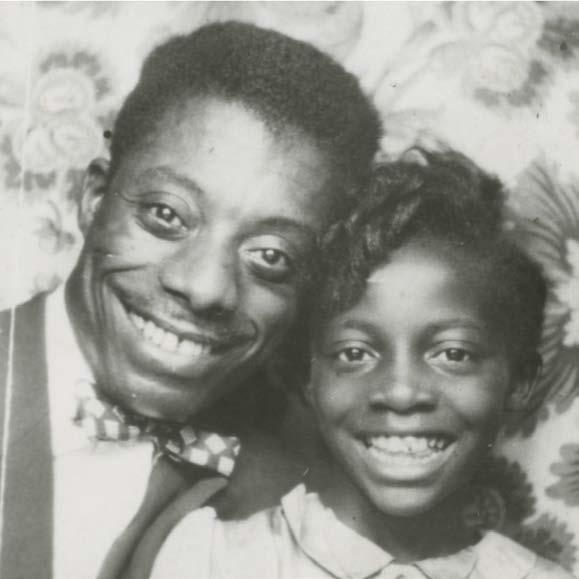
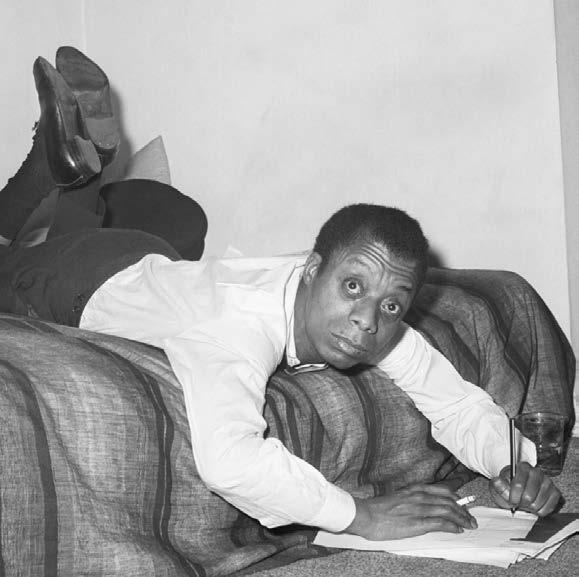 James Baldwin, 1963
James Baldwin, 1963
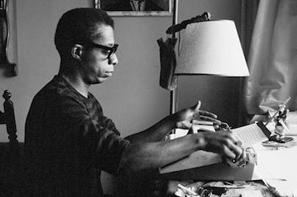
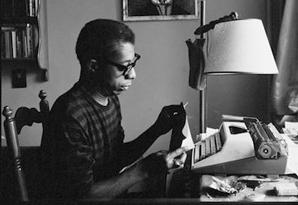
BALDWIN | PAGE 25
JAMES
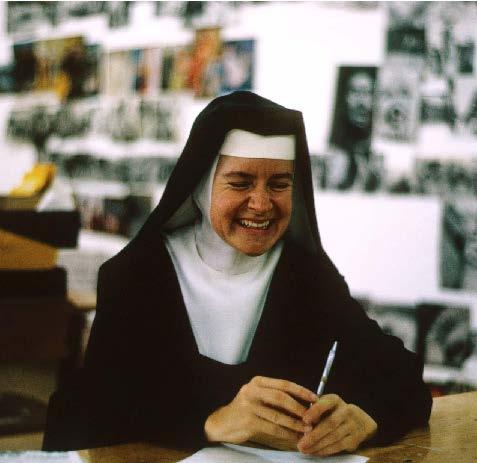
PAGE 26 | PERSONS OF INTEREST | ISSUE 1
ANNA MAGNANI, CIRCA 1950 TAKEN BY BUD FRAKER
SISTER CORITA KENT
GRAPHIC DESIGNER
Corita Kent (1918–1986) was an artist, educator, and advocate for social justice. At age 18 she entered the religious order Immaculate Heart of Mary, eventually teaching and then heading the art department at Immaculate Heart College. During the course of her career, her artwork evolved from using figurative and religious imagery to incorporating advertising images and slogans, popular song lyrics, biblical verses, and literature. Throughout the ‘60s, her work became increasingly political, urging viewers to
consider poverty, racism, and social injustice. In 1968, she left the order and moved to Boston. After 1970, her work evolved into a sparser, introspective style, influenced by living in a new environment, a secular life, and her battles with cancer. She remained active in social causes until her death in 1986. At the time of her death, she had created almost 800 serigraph editions, thousands of watercolors, and innumerable public and private commissions. After a cancer diagnosis in the early 1970s, she entered an
extremely prolific period in her career, including the Rainbow Swash design on the LNG storage tank in Boston, and the 1985 version of the United States Postal Service’s special Love stamp. In recent years, Corita has gained increased recognition for her role in the pop art movement. Critics and theorists previously failed to count her work as part of any mainstream “canon,” but in the last few years there has been a resurgence of attention given to Kent. She social commentary promoted love and tolerance.
SISTER CORITA KENT | PAGE 27

PAGE 28 | PERSONS OF INTEREST | ISSUE 1 PIG-PEN, SERIGRAPH, 1967
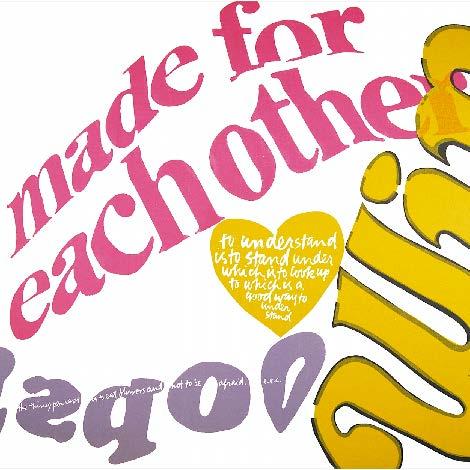
MAD FOR EACH OTHER, SERIGRAPH, 1967
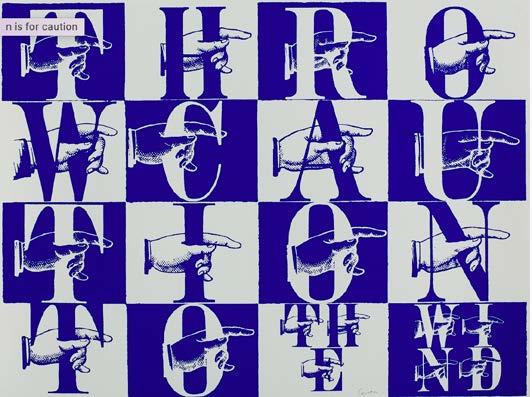
PAGE 30 | PERSONS OF INTEREST | ISSUE 1 N IS FOR CAUTION, SERIGRAPH, 1968

P
IS FOR PALM, SERIGRAPH, 1968

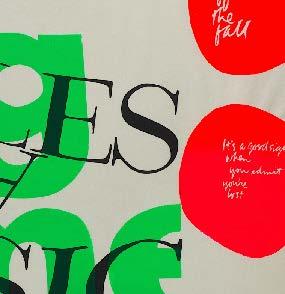
1966
APPLES ARE BASIC, SERIGRAPH,
AGNES VARDA
FILM MAKER
Agnès Varda was born in Belgium and a french film director, screenwriter, artist, and photographer. She was the third sibling out of 5 children. She legally changed her name to Agnès when she was 18. Her family lived on a boat in Sète all together. Varda attended Lycée et collège Victor-Duruy and graduated with a bachelor’s degree in Literature and psychology. While in Paris she had a bad time settling and it was an “excruciating” time for her. Her films were focused on documentary realism, women’s issues, and other societal
commentary. Her sets were made all indoors and she was very experimental. She used amateur actors which was very uncommon at the time. Varda’s first film was La Pointe Courte (1955). Notable films include Vagabond (1985), Kung Fu Master (1988). Varda intended on being a museum curator but attended Vaugirard School of Photography instead. Her cinematic work and photographic work are heavily intertwined. She worked as a stage photographer and then got hired by Théâtre National Populaire.
After her reputation grew she was hired as a photojournalist all around Europe. Her protagonists were marginalized members of society. She was inspired by auteur theory and used her camera as a “pen”. She was heavily involved in the French New Wave Movement. Rather than separating the fundamental roles that contribute to a film (such as cinematographer, screenwriter, and director), she believed that all roles should work together simultaneously to create a more cohesive film, and all elements of the film contribute
PAGE 34 | PERSONS OF INTEREST | ISSUE 1
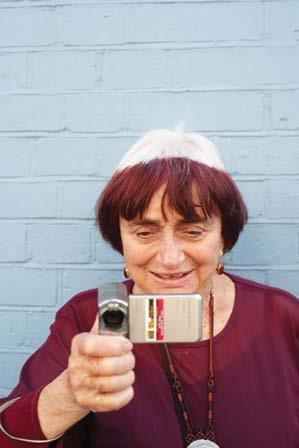
AGNES VARDA | PAGE 35
AGNES VARDA WITH CAMERA

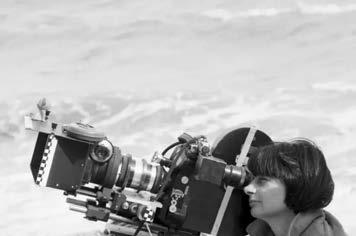

AGNES VARDA | PAGE 37
AGNES VARDA DOCUMENTARY, AGNES VARDA WITH BUDDHIST, AGNES VARDA WITH CAMERA
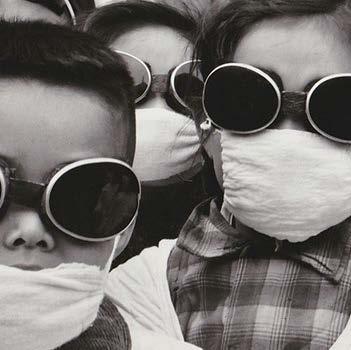 CHILDREN WITH GOGGLES AND MASKS
CHILDREN WITH GOGGLES AND MASKS
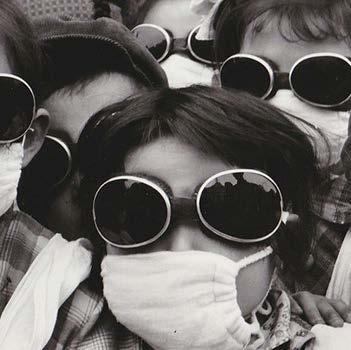
TWO PEOPLE ON A BEACH. A CHILD RUNNING

PAGE 40 | PERSONS OF
ISSUE 1
INTEREST |
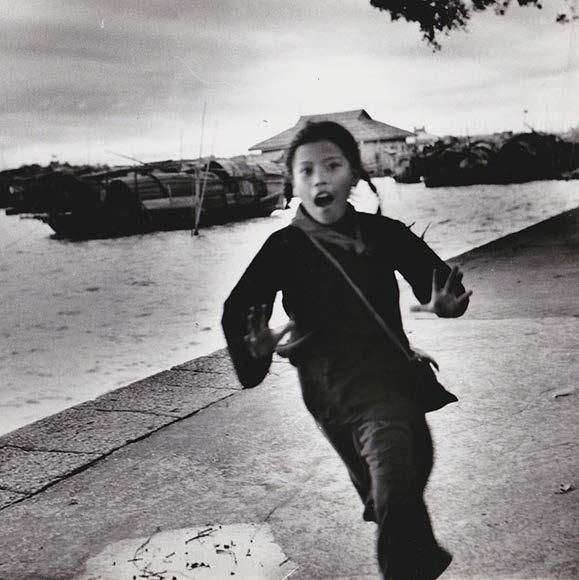
DONALD JUDD

ARCHITECT
Donald Judd was an American Minimalist artist born in 1928 in Missouri. Judd was an army engineer from 1946-1947 and in 1948 enrolled in the College of William and Mary. He transferred to Columbia University where he graduated with a bachelor degree in philosophy and worked towards a master’s degree in art history. He bought a five-story cast iron building on Spring Street and used that as his residence and studio. He began as an expressionist painter. From 1950s-1961 he started to explore the medium of
woodcut where he became more and more abstract. By 1963 he established his shapes and what he worked with using ‘stacks’, ‘boxes’, and ‘progressions’. He used repeated forms to explore space and the use of space and desired autonomy and clarity for the object in the environment. He mainly used metals, plywood, concrete, and plexiglass. His art was exhibited in many museums including the Jewish Museum, Whitney Museum, etc. He started having more personal gallery shows in his building in SOHO.
PAGE 42 | PERSONS OF INTEREST | ISSUE 1

DONALD JUDD | PAGE 43
Donald Judd distorded image

PAGE 44 | PERSONS OF INTEREST | ISSUE 1


PERSON’S NAME | PAGE 45
DONALD JUDD ARCHITECTURE, DONALD JUDD IN CONCRETE ROOM
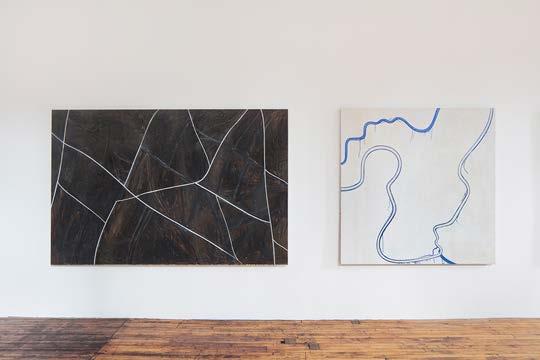
PAGE 46 | PERSONS OF INTEREST | ISSUE 1
DONALD JUDD PAINTINGS IN GALLERY, DONALD JUDD PAINTING
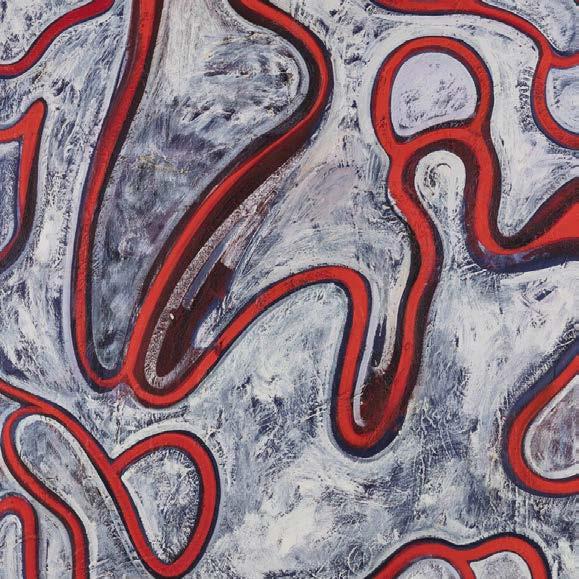



PERSON’S NAME | PAGE 49 DONALD JUDD SCULPTURES
Letizia Battaglia is an Italian photographer and was born in Palermo, Sicily. She took up photojournalism after her divorce. She had to support three daughters and was able to sell her articles better if she added pictures. In 1974 she met her partner Franco Zecchin and worked for the left wing newspaper L’Ora. She documented the control and torture the mafia had over italian society. She captured a lot of deaths caused by the Mafia. She wanted to document the Mafia to show how they negatively affected so-
ciety. She was worried that she would get assassinated by the Mafia because she was exposing their corruption. On top of the Mafia she became involved in Women’s and environmental issues. She stopped taking pictures and became heavily involved in politics. She had a seat on the Palermo city council for the Green Party. the police searched Battaglia’s archives and found two 1979 photographs of Andreotti with an important Mafioso, Nino Salvo, he had denied knowing Aside from the accounts of turncoats,
these pictures were the only physical evidence of this powerful politician’s connections to the Sicilian Mafia. Battaglia herself had forgotten having taken the photograph. Its potential significance was apparent only 15 years after it was taken. Her other ventures included a women’s magazine, a publishing house and a photography school She had 8 major gallery exhibitions. She also had 4 films. Battaglia received 4 awards including Cornell Capa Infinity Award, Dr. Erich Salomon award, etc.
LETIZIA
BATTAGLIA
PAGE 50 | PERSONS OF INTEREST | ISSUE 1
PHOTOGRAPHER
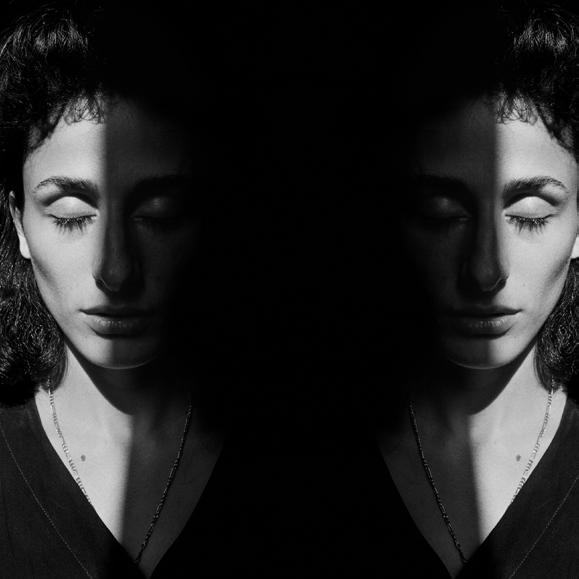
LETIZIA BATTAGLIA REFLECTED

PAGE 52 | PERSONS OF INTEREST | ISSUE 1
GIRL IN BALLROOM, PERSON IN MASK WITH GUN
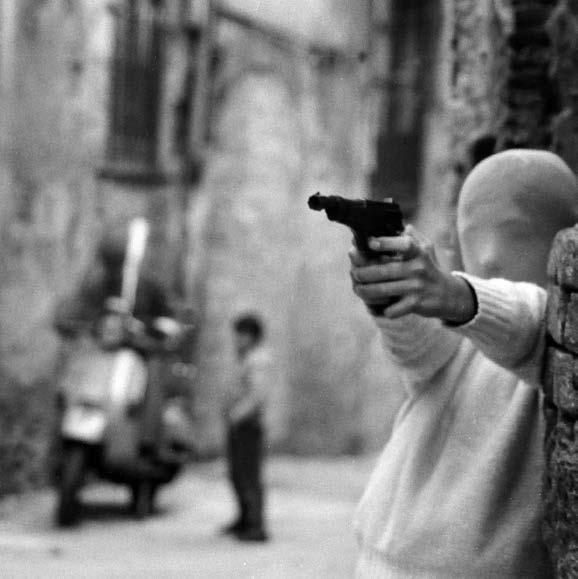 —LETIZIA BATTAGLIA
—LETIZIA BATTAGLIA
PAGE 54 | PERSONS OF INTEREST | ISSUE 1
The mafia is stronger than ever, it’s just different.
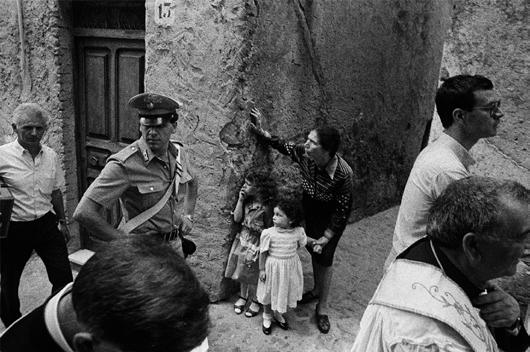
BATTAGALIA | PAGE 55
LEITIZIA
MOTHER HOLDING CHILDREN WHILE COP WALKS BY
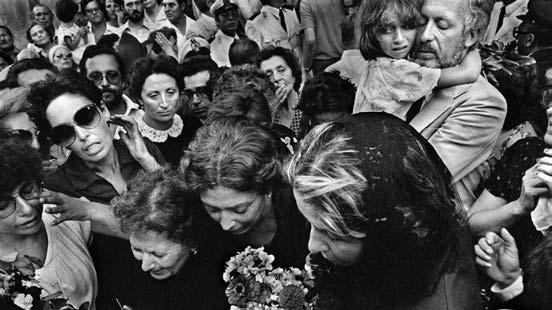
PAGE 56 | PERSONS OF INTEREST | ISSUE 1

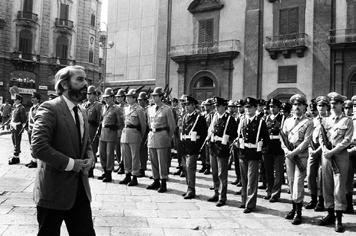
PERSON’S NAME | PAGE 57
STYLE
CAPTION
WOULD BE LIKE THIS FOR EACH IMAGE
ELI REED

PHOTOGRAPHER
Eli Reed was an American photographer and photojournalist born in 1946 in New Jersey. He was the first full-time black photographer and worked at Magnum Agency. He took his first photograph at age 10. He is mostly self-taught but credits his mentor Donald Greenhaus. He graduated from Newark School of Fine and Industrial arts studying illustration. He became a freelance photographer in 1970. Magnum associated with him and his success with the documentation of the wars in Central America, Lebanon,
etc. He became a full member of Magnum in 1988. He started making photographs of films and actors in 1992. He taught in numerous places including Miami University, New York University, Columbia University, etc. He has received many awards including W. Eugene Smith Grant in Documentary Photography, Kodak World Image Award for Fine Art Photography, Leica Medal of Excellence, etc. His most recent award being 2011 Lucie Foundation Award for Documentary Photography popular books
PAGE 58 | PERSONS OF INTEREST | ISSUE 1
ELI BROWN DISTORTED
IMAGE

JUDD | PAGE 59
DONALD
TWO KIDS IN A POOL, THREE FAMOUS ACTORS

PAGE 60 | PERSONS OF INTEREST | ISSUE 1

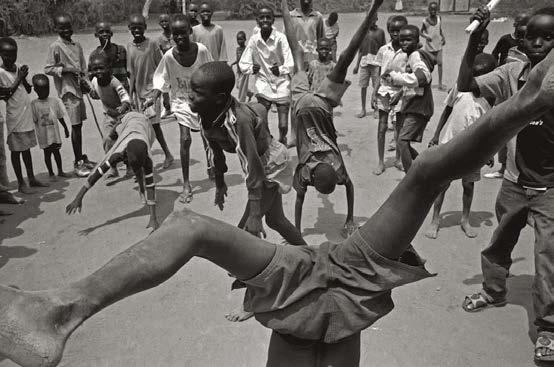
PAGE 62 | PERSONS OF INTEREST | ISSUE 1
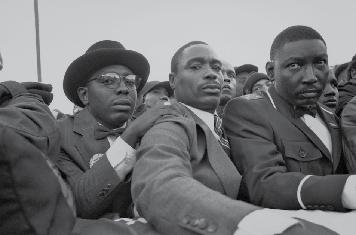

ELI REED | PAGE 63
PEOPLE DOING HANDSTANDS IN A CIRCLE, GUY ON SIDE OF BOXING RING, THREE MEN

CLOSE UP OF A MAN
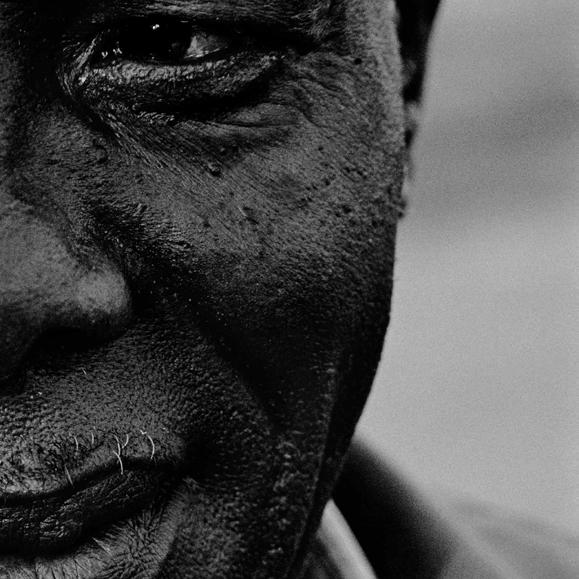
SYLVIA PLACHY
PHOTOGRAPHER
Sylvia Plachy, born in Budapest, lives in New York. She has had her own shows at the Minneapolis Institute of Arts, the Whitney Museum at Philip Morris in New York, the Queens Museum, and in galleries in Homer, Budapest, Paris, Rome, Berlin, Tokyo, New York, Manchester, Madrid, Perpingnon and Pingyau. Formerly staff photographer for
The Village Voice, she is now a contributing photographer at the New Yorker. Her photographs have appeared in the New York Times, Fortune, Grand Street, New York Magazine and in many other magazines. She is a Guggenheim fellow and the recipient of Lucie Award. Her photographs are in private collections and also in the MoMA in NY, the
Houston Museum of Fine Arts, and the SF Museum.
Ms. Plachy has had six books published: Signs And Relics, 2000; Red Light, 1996; Unguided Tour, 1990, winner of the Infinity Award for best publication; Self Portrait With Cows Going Home, 2004, winner of the Golden Light Award for best book; De Reojo/Out Of The Corner Of My Eye, 2007.
PAGE 66 | PERSONS OF INTEREST | ISSUE 1
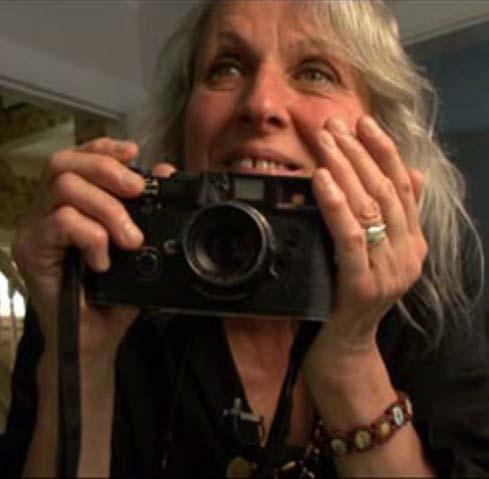
| PAGE 67
SYLVIA PLACHY
PORTRAIT OF SYLVIA PLACHY


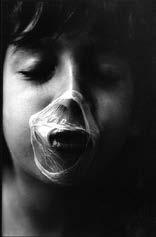
PAGE 68 | PERSONS OF INTEREST | ISSUE 1 TOP LEFT: YOUNG ADIREN BRODY; BOTTOM LEFT: ADRIEN BRODY AS RICHIE RUDE, 1998 GULL BITE, 1982
BOTTOM RIGHT: GRANDMA AND GRANDPA, 1979
TOP RIGHT: GABRIELLE, 1981;

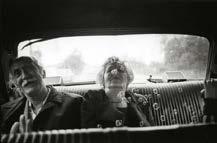
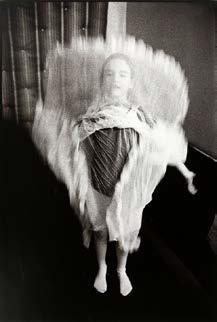
| PAGE 69
SYLVIA PLACHY
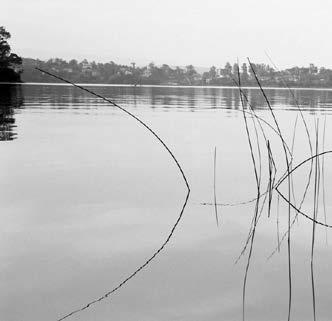

PAGE 70 | PERSONS OF INTEREST | ISSUE 1
LEFT: NEW YORK CITY, SEPT 11, 2001; ABOVE: LAKE KIVU, DEMOCRATIC REPUBLIC OF CONGO, 2005
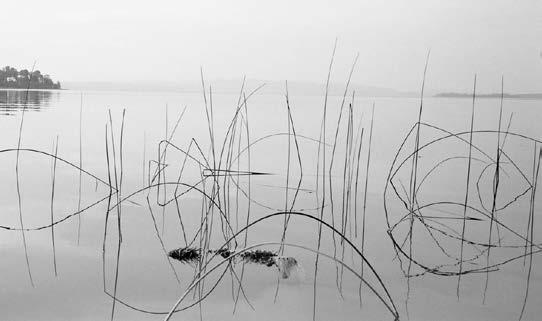
SYLVIA PLACHY | PAGE 71
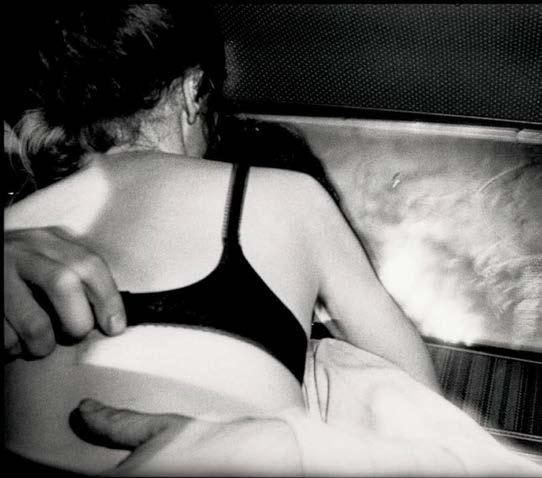
PAGE 72 | PERSONS OF INTEREST | ISSUE 1
LEFT: BACKSEAT, 1980; TOP RIGHT: LULU, 1972; BOTTOM RIGHT: LOVE IN THE AFTERNOON, 1982
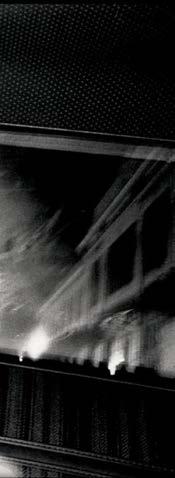


| PAGE 73
SYLVIA PLACHY
Paolo Pellegrin is one of the world’s leading photojournalists who has documented many of this generation’s major disasters and conflicts, from revolutions to wars to tsunamis. Pellegrin wishes his work to “create a bridge…to use photography to say something that goes beyond the surface, that vibrates, that resonates.” This approach has lead him to photograph in Lebanon, Iran, Palestine, Romania, Afghanistan, Libya, Cuba, the United States, Mali, Egypt, Algeria, Haiti, Tunisia, and Indonesia.
Pellegrin was born in 1964 in Rome. He studied architecture at L’Università la Sapienza, Rome, before studying photography at L’istituto Italiano di Fotografia. Between 1991 and 2001 Pellegrin was represented by Agence VU in Paris. He was a contract photographer for Newsweek for ten years.
He has been published in many leading publications including TIME magazine, The New York Times, Newsweek and the New York Times Magazine, where he has photographed more than
ten cover stories with reporter Scott Anderson. Pellegrin is a winner of many awards, including ten World Press Photo awards and numerous Photographer of the Year awards, a Leica Medal of Excellence, an Olivier Rebbot Award, the Hansel-Meith Preis, and the Robert Capa Gold Medal Award. In 2006, he was assigned the W. Eugene Smith Grant in Humanistic Photography.
PAOLO PELLEGRIN
PAGE 74 | PERSONS OF INTEREST | ISSUE 1
PHOTOGRAPHER
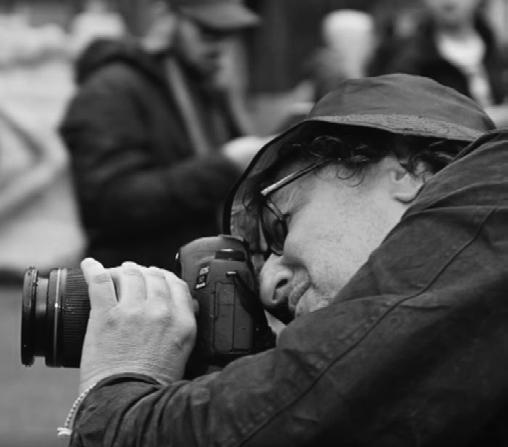
PELLEGRIN | PAGE 75
PAOLO
PORTRAIT OF PAOLO PELLEGRIN

PAGE 76 | PERSONS OF INTEREST | ISSUE 1
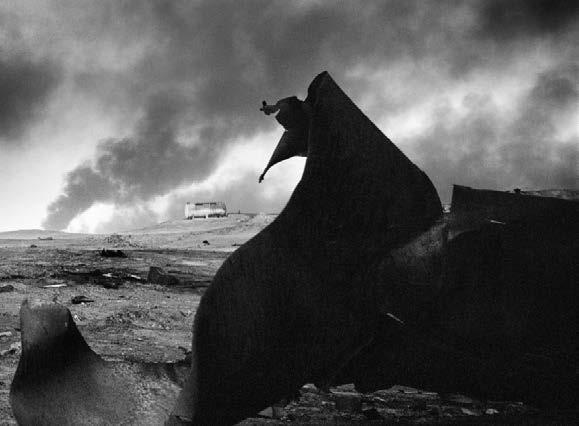
PELLEGRINI | PAGE 77
PAOLO
BLACK SMOKE RISES ABOVE THE BURNING OIL FIELDS AROUND QAYYARAH, SOUTHEAST OF MOSUL, MOSUK, IRAQ, 2016

ABOVE: KURDISH PESHMERGA MOURN THE DEATH OF A COMPANION, KILLED BY AN ISIS SNIPER. MOSUL, IRAQ, 2016
LEFT: GUANTÁNAMO BAY U.S. NAVAL BASE & DETENTION CENTER. CUBA, 2012 BELOW: ARMED CIVILIANS PATROL A VILLAGE NEAR MASCARA BY NIGHT TO PROTECT IT FROM RADICAL ISLAMIC FACTIONS, ALGERIA, 2001
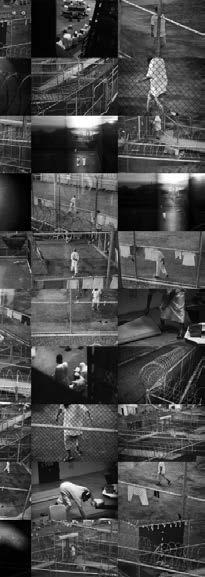

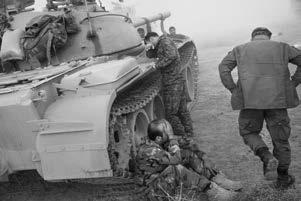
PELLEGRINI | PAGE 79
PAOLO
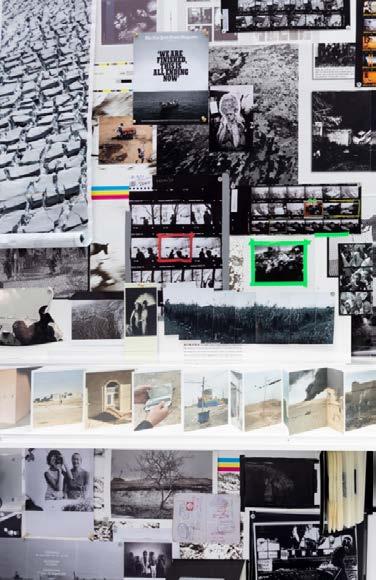
PAGE 80 | PERSONS OF INTEREST | ISSUE 1
UN’ANTOLOGIA EXHIBIT, 2018-2019 IMAGE BY VINCENZO LABELLARTE
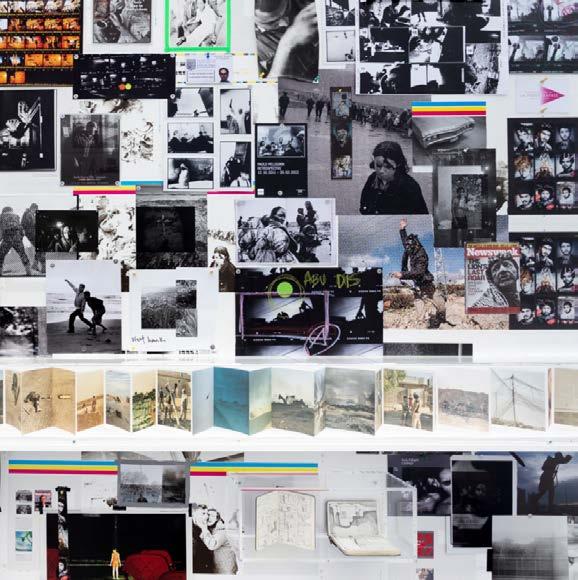
RENZO PIANO
ARCHITECT
Renzo Piano was born in Genoa in 1937 into a family of builders. While studying at Politecnico of Milan University, he worked in the office of Franco Albini. In 1971, he set up the “Piano & Rogers” office in London together with Richard Rogers, with whom he won the competition for the Centre Pompidou. He subsequently moved to Paris. From the early 1970s to the 1990s, he worked with the engineer Peter Rice, sharing the Atelier Piano & Rice from 1977 to 1981. The “Renzo Piano Building
Workshop” was established in 1981 and has since grown to 150 staff, with offices in Paris, Genoa, and New York. He has received numerous awards and recognitions among which: the Royal Gold Medal at the RIBA in London (1989), the Kyoto Prize in Kyoto, Japan (1990), the Goodwill Ambassador of UNESCO (1994), the Praemium Imperiale in Tokyo, Japan (1995), the Pritzker Architecture Prize at the White House in Washington (1998), the Leone d’oro alla Carriera in Venice (2000), the Gold
Medal AIA in Washington (2008) and the Sonning Prize in Copenhagen (2009). In 2004 he also founded the Renzo Piano Foundation, a non-profit organization dedicated to the promotion of the architectural profession through educational programs and educational activities.
In September 2013 Renzo Piano was appointed senator for life by the Italian President Giorgio Napolitano and in May 2014 he received the Columbia University Honorary Degree.
PAGE 82 | PERSONS OF INTEREST | ISSUE 1
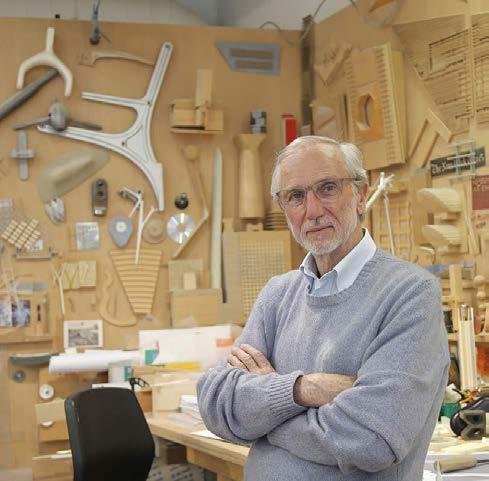
RENZO PIANO | PAGE 83
PORTRAIT OF RENZO PIANO



PAGE 84 | PERSONS OF INTEREST | ISSUE 1
TOP: CALIFORNIA ACADEMY OF SCIENCE ROOF AND INTERIOR; BOTTOM LEFT: CAS INTERIOR; BOTTOM RIGHT: CAS EXTERIOR
ABOVE: CALIFORNIA ACADEMY OF SCIENCE BLUEPRINTS; BELOW: CALIFORNIA ACADEMY OF SCIENCE



RENZO PIANO | PAGE 85


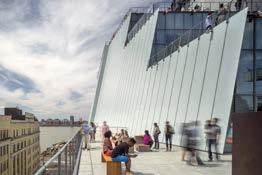
PAGE 86 | PERSONS OF INTEREST | ISSUE 1
BOTTOM: THE WHITNEY MUSEUM BLUEPRINTS;
TOP: THE WHITNEY MUSEUM EXTERIOR

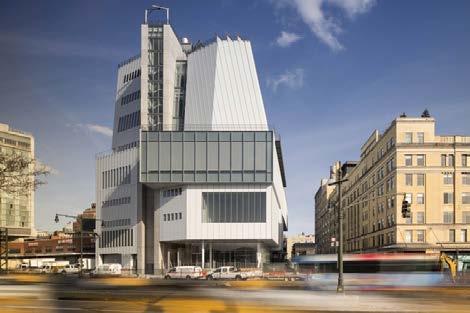

RENZO PIANO | PAGE 87
BOTTOM: THE WHITNEY MUSEUM BLUEPRINTS;
TOP: THE WHITNEY MUSEUM EXTERIOR PHOTOGRAPHED BY NIC LEHOUX



PAGE 88 | PERSONS OF INTEREST | ISSUE 1
BELOW LEFT & RIGHT: CENTRE POMPIDOU BLUEPRINTS; TOP: CENTRE POMPIDOU


RENZO PIANO | PAGE 89
RIGHT: CENTRE POMPIDOU INTERIOR BY NIKOLPETR/SHUTTERSTOCK
LEFT: CENTRE POMPIDOU BLUEPRINT
Teju Cole is a novelist, photographer, critic, curator, and the author of several books. He was the photography critic of the New York Times Magazine from 2015 until 2019. He is currently the Gore Vidal Professor of Creative
Writing at Harvard. Teju Cole was born in the US in 1975 to Nigerian parents and was raised in Lagos. He currently lives in Cambridge, MA. Teju Cole has contributed to the New York Times, the New Yorker, Granta, Brick,
and many other magazines. His photography column at the New York Times Magazine, “On Photography,” was a finalist for a 2016 National Magazine Award. There have been solo exhibitions of his photography in Italy, Iceland, India, Italy, Germany, Switzerland and the US. He gave the 2014 Kenan Distinguished Lecture in Ethics at Duke University, the 2015 Susan D. Gubar Lecture at Indiana University, and the 2016 Spui25 Lecture at
the University of Amsterdam. He was awarded the 2015 Windham Campbell Prize for Fiction, a 2015 US Artists award, and a 2018 Guggenheim Fellowship. He was a Poynter Journalism Fellow at Yale University in 2018. He serves as a board member for several periodicals and arts organizations, and has participated in many literary and photography juries, including the 2021 Images Vevey Grand Prix, of which he was jury president.
WRITER | ART HISTORIAN
PAGE 90 | PERSONS OF INTEREST | ISSUE 1 TEJU COLE
| PHOTOGRAPHER
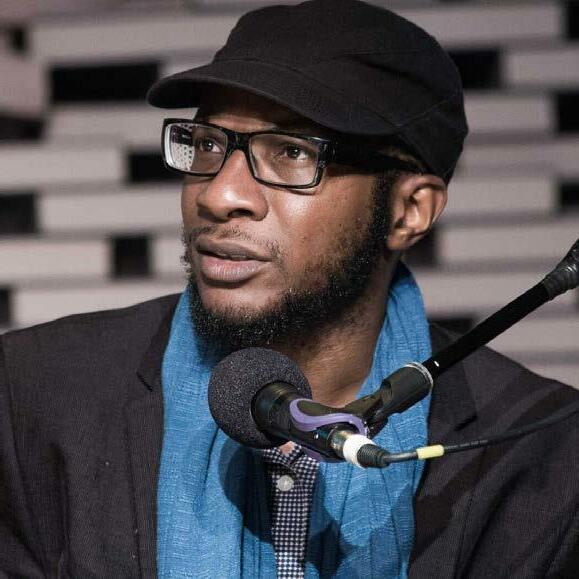 PORTRAIT OF TEJU COLE
PORTRAIT OF TEJU COLE

PAGE 92 | PERSONS OF INTEREST | ISSUE 1
I peeked into a house in Mar Mikhael for a moment. A black woman was sweeping a stone floor. At the threshold was an image of the Holy Virgin.
I saw many black women in Beirut. Those of them in domestic em-ployment, when out on the street, carrying their employers’ children or not, walk behind. Their servitude, their inequality, is made visible. Many of these women are Ethiopian (Ethiopian men are few in Beirut, though male Sudanese laborers are plentiful). The Ethiopian women are hired because they are Christian and English-speaking, desirable qualities in nannies. On Saturday nights, they have semisecret nightclubs away from the glitzy areas. In these clubs (I visited two) they socialize with one another, and with Lebanese, Syrian, and Sudanese men, dancing to Ethiopian, Arabic, and Nigerian music. They are dressed to the nines, their hair is done, and they wear high heels. They look nothing like they do when they are with their employers. And on Sundays, on their day off, you can see them on the street in groups, in white, flowing through the street, their spirits shining from having attended church, the condition of servitude briefly lifted.
Many of these women are in Lebanon illegally. When they wish to return home, they have to raise enough money to cover the costs of their deportation-transportation as well as fines. When the money is raised, they turn themselves in to the nearest police officer, and, after a brief spell in jail, they are deported.

TEJU COLE | PAGE 93
BEIRUT FROM BLIND SPOT

PAGE 94 | PERSONS OF INTEREST | ISSUE 1
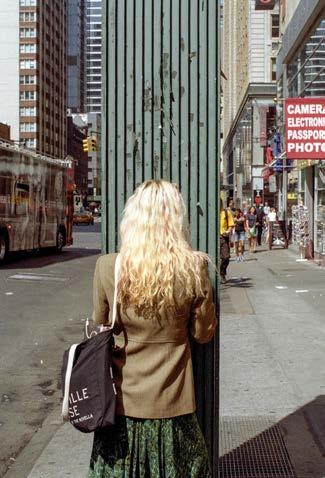

TEJU COLE | PAGE 95
LEFT: FERHWEH FROM BLIND SPOT; RIGHT: NEW YORK CITY FROM BLIND SPOT


PAGE 96 | PERSONS OF INTEREST | ISSUE 1
LEFT: NEW YORK CITY FROM BLIND SPOT; ABOVE: BROOKLYN FROM BLIND SPOT

TEJU COLE | PAGE 97
SONIA DELAUNAY
PAINTER | TEXTILE DESIGNER
Sonia Delaunay was born Sarah Stern (nicknamed Sonia) in Ukraine, where her father was a factory worker. At five, she went to live with a wealthy uncle in St. Petersburg and took his surname, Terk. She studied art in Karlsruhe, Germany, and beginning in 1905, in Paris, where she spent most of the rest of her life. In 1910, she married the French painter Robert Delaunay, with whom she had a son. Together, husband and wife developed Orphism,
also called Simultaneism, an artistic style that prized color over form. Like Cubism, Delaunay’s imagery is abstracted. Yet, unlike the largely monochrome Cubist art of Pablo Picasso and Georges Braque, Delaunay’s works consist of bright hues and bold, repeating patterns inspired by Fauve painters, like Henri Matisse. In 1918, she designed her first costumes for Sergei Diaghilev’s famous Ballets Russes. Delaunay also collaborated with couturiers and designed
shop interiors and the fashions within. In 1937, she and her husband created large-scale murals for the Air and Railroad pavilions at the Paris World’s Fair. Delaunay was highly successful and had numerous solo and group exhibitions during her lifetime. She was also honored with many awards, such as the French Légion d’Honneur (1975), Chevalier des Arts et Lettres (1958), and a gold medal for her two murals at the Paris World’s Fair (1937).
PAGE 98 | PERSONS OF INTEREST | ISSUE 1
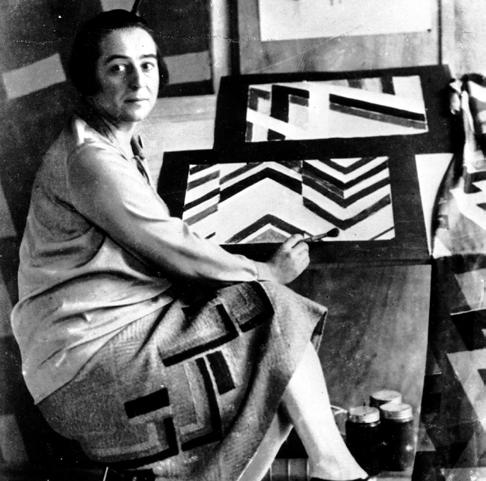
| PAGE 99
SONIA DELAUNAY
SONIA DELAUNAY IN HER ATERLIER SIMULTAN É , PARIS 1924
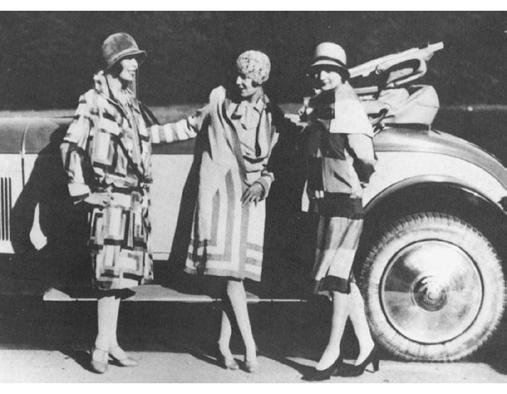
PAGE 100 | PERSONS OF INTEREST | ISSUE 1
MODELS IN FRONT OF CITRO Ë N B12 DECORATED BY SONIA DELAUNAY, PARIS 1928

Luis Ramiro Barragán Morfín (1902 – 1988) was a Mexican architect and engineer who won the Pritzker Prize in 1980. His work is often quoted about minimalist architecture despite the use of color due to the architectural ideas of forms and spaces which Barragán pioneered. Barragán’s influence can be seen in many of Mexico’s contemporary architects, especially in Ricardo Legorreta’s projects. His professional training was in engineering, resulting in a degree at the age of twenty-three. His archi-
tectural skills were self-taught. In the 1920s, he traveled extensively in France and Spain and, in 1931, lived in Paris for a time, attending Le Corbusier’s lectures. His time in Europe, and subsequently in Morroco, stimulated an interest in the native architecture of North Africa and the Mediterranean, which he related to construction in his own country. In the late 1920s, he was associated with a movement known as the Escuela Tapatía or Guadalajara School, which espoused a theory of architecture
dedicated to the vigorous adherence to regional traditions. His architectural practice was based in Guadalajara from 1927 until 1936, when he moved to Mexico City and remained until his death. A religious man, Barragán and his work have been described as “mystical” as well as serene. His chapel for the Capuchinas Sacramentarias is evidence of both qualities. He designed many stables, fountains, and water troughs that manifest many of these same qualities because of his horses’ interest.
LUIS BARRAGAN
PAGE 102 | PERSONS OF INTEREST | ISSUE 1
ARCHITECT
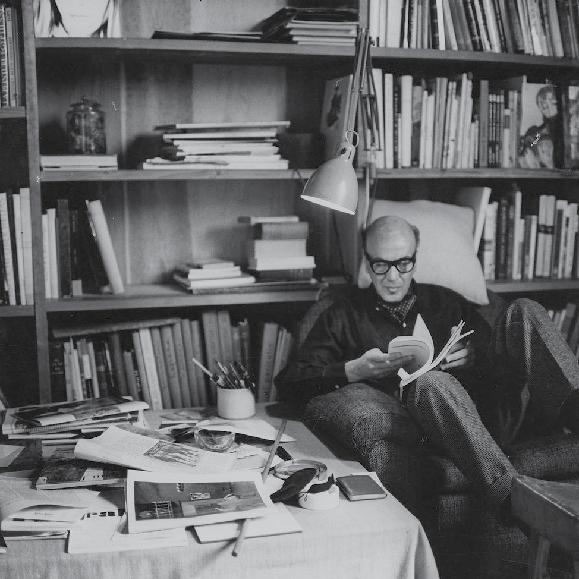
Any work of architecture which does not express serenity is a mistake.
—LUIS BARRAGAN
PAGE 104 | PERSONS OF INTEREST | ISSUE 1
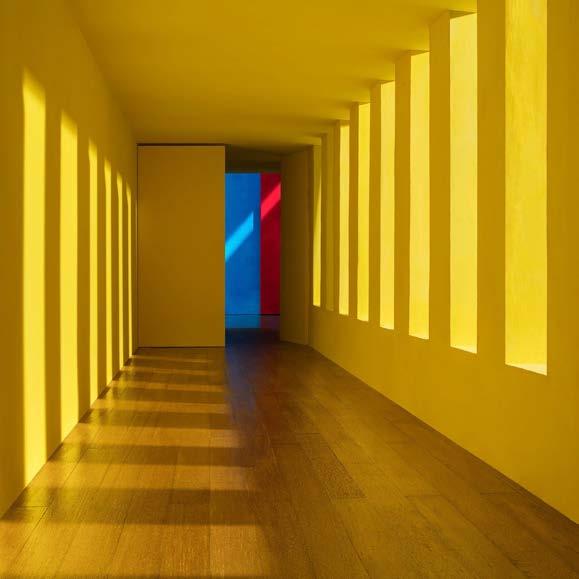



LUIS BARRAGAN | PAGE 107
LUIS BARRAGAN VARIOUS ARCHITECTURAL STRUCTURES
LEE FRIEDLANDER

PHOTOGRAPHER
Lee Friedlander, known for his social landscape and nostalgic photography was born on 14th July 1934 in Aberdeen, Washington. He graduated from high school in 1952 and moved to Los Angeles. Friedlander attended Art Centre College of Design, Pasadena, California to study photography under Edward Kaminski from 1953 to 1955. In 1956, he moved to New York, in order support himself he started doing photographs of jazz musician for record jackets like Count Bessie (1957). Eugène
Atget, Robert Frank and Walker Evans inspired his early work; mainly black and white stills. In 1958, Lee Friedlander experimented with gelatin dry-plates negatives and made prints.. From 1960’s, Friedlander started shooting his stills as “social landscapes” of different places of U.S.A. Urban life, signs and hoardings, fences-framed structures, all depicting the look of moderns society. These images of Newark, New Jersey, are nostalgic, at times depressing, and full of depth.
PAGE 108 | PERSONS OF INTEREST | ISSUE 1

| PAGE 109
LEE FRIEDLANDER
LEE FRIEDLANDER, HAVERSTRAW, NY, 1966
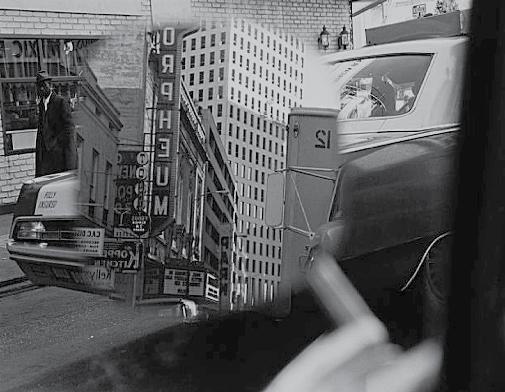
PAGE 110 | PERSONS OF
| ISSUE 1
INTEREST
ABOVE: LEE FRIEDLANDER, NEW ORLEANS, 1969; RIGHT: LEE FRIEDLANDER, NEW YORK CITY, 1980

I always wanted to be a photographer. I was fascinated with the materials.
But I never dreamed I would be having this much fun.
I imagined something much less elusive, much more mundane.
—LEE FRIEDLANDER
PAGE 112 | PERSONS OF INTEREST | ISSUE 1


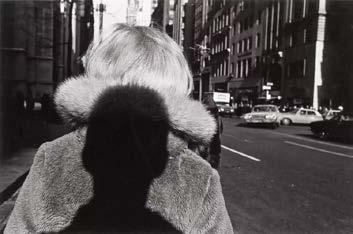
LEE FREIDLANDER | PAGE 115
(RIGHT)
(LEFT) PHOTOGRAPHING THE AMERICAN PSYCHE 19621977

PAGE 116 | PERSONS OF
| ISSUE 1
INTEREST
(LEFT) THE LITTLE SCREENS, 1964 (RIGHT) SELF PORTRAIT 1968
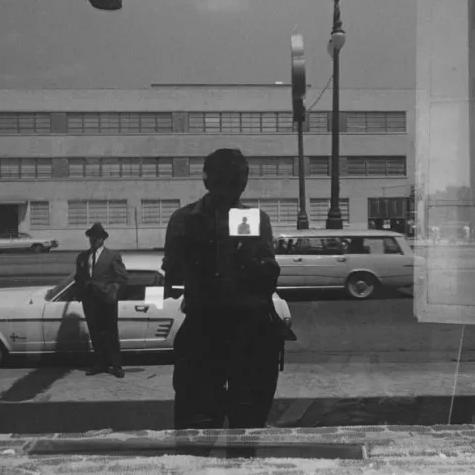
BDODYS ISEK KINGSLEY
SCULPTOR
Bodys Isek Kingelez or Jean Baptiste was a Congolese sculptor and artist known for his models of fantastic cities, made of cardboard, paper, tape, and other commonplace materials. He was born in the Belgian, congo on August 27, 1948, where he lived and studied for most of his childhood After graduating from secondary school he moved to Kinshasa in
1970. There Until 1977 he studied part-time and supported himself by teaching at a school. He was hired by the National Museum in Kinshasa as an art restorer, particularly in the restoration of African masks, until 1985 when he began to pursue the sculpture-centric practice he would later be known for full-time.
PAGE 118 | PERSONS OF INTEREST | ISSUE 1
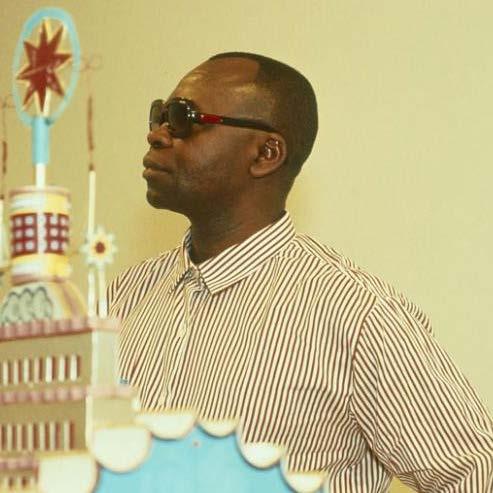

BODYS ISEK KINGELEZ ,VILLE FANTÔME,”( 1996)

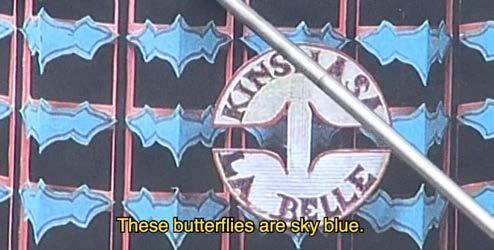
ISEK KINGELEZ | PAGE 121
BODYS
,SIDA” (1996) BODYS ISEK KINGELEZ ,VILLE FANTÔME,”( 1996) VIA
BODYS
ISEK KINGELEZ
a model, you are nowhere. A nation that can’t make models is a nation that doesn’t understand things, a nation that doesn’t live,”
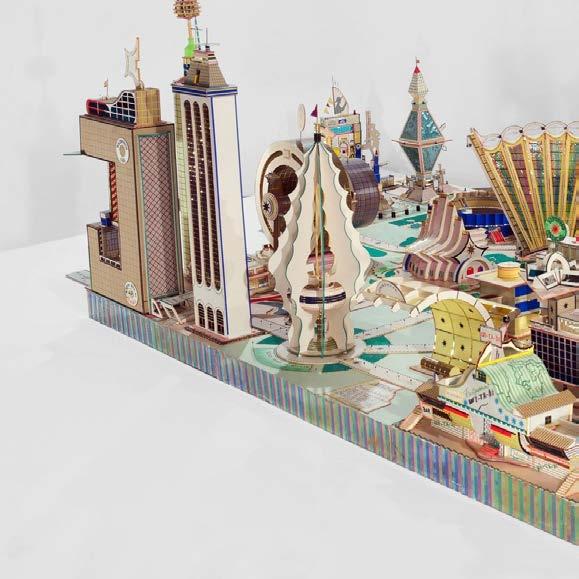 - BODYS ISEK KINGELEZ
- BODYS ISEK KINGELEZ
“Without
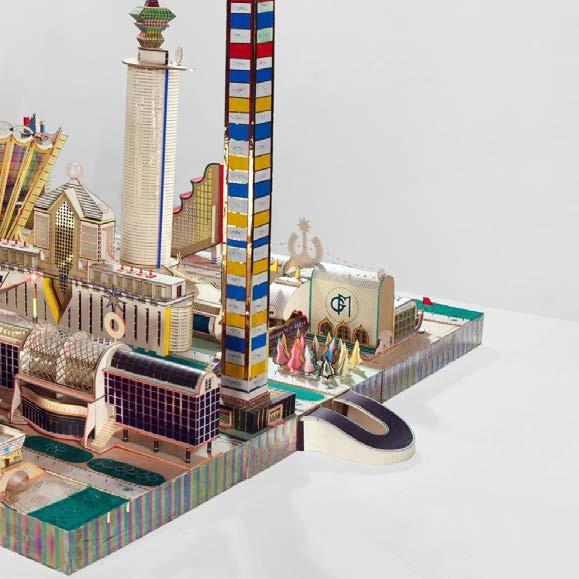
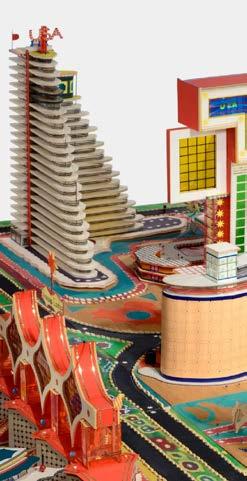
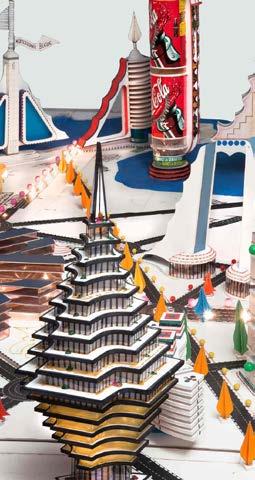
PAGE 122 | PERSONS OF INTEREST | ISSUE 1
ISEK KINGELEZ
BELLE,” (1991)
BODYS ISEK KINGELEZ ,DETAIL OF “VILLE DE SÈTE 3009,”2000 BODYS
“KINSHASA LA
BODYS ISEK KINGELEZ ,DETAIL OF “VILLE DE SÈTE 3009,”2000
BODYS ISEK KINGELEZ ,DETAIL OF “VILLE DE SÈTE 3009,”2000

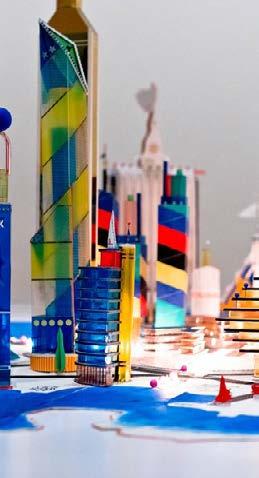
PAGE 9
TARSAILA DO AMARAL
PAINTER
Tarsila de Aguiar do Amaral; 1 September 1886 – January 1973 was a Brazilian painter, draftswoman, and translator. She is considered one of the leading Latin American modernist artists, and is regarded as the painter who best achieved Brazilian aspirations for nationalistic expression in a modern style.As a member of the Grupo dos Cinco, Tarsila is also considered a ma-
jor influence in the modern art movement in Brazil, alongside Anita Malfatti, Menotti Del Picchia, Mário de Andrade, and Oswald de Andrade. She was instrumental in the formation of the aesthetic movement, Antropofagia (1928–1929); in fact, Tarsila was the one with her celebrated painting, Abaporu, who inspired Oswald de Andrade’s famous Manifesto Antropófago.
PAGE 124 | PERSONS OF INTEREST | ISSUE 1
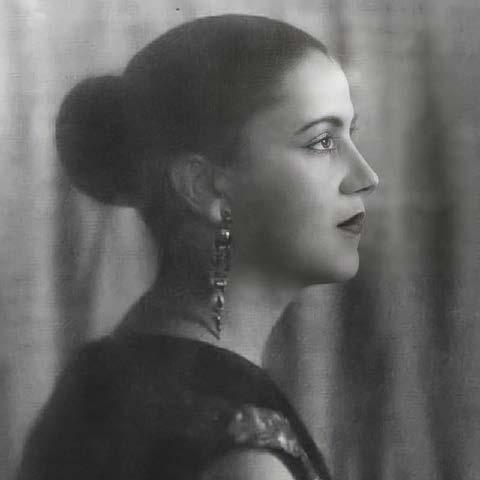
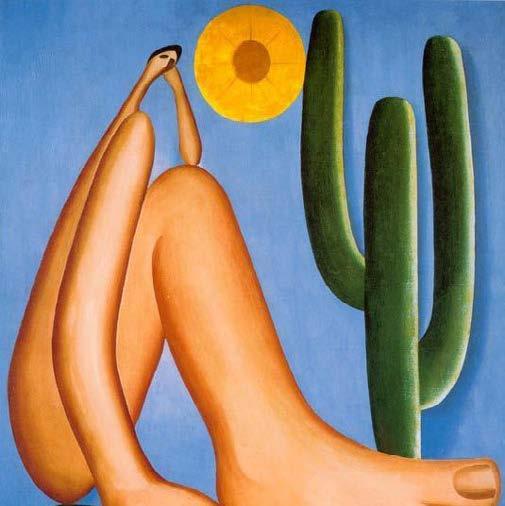

PAGE 209
LEFT: TARSAILA DO AMARAL, ABAPORU; RIGHT: TARSAILA DO AMARAL,ANJOS
TARSAILA
TARSAILA DO AMARAL, SOL POENTE, (1929)

 DO AMARAL, O VENDEDOR DE FRUTAS (1925)
DO AMARAL, O VENDEDOR DE FRUTAS (1925)

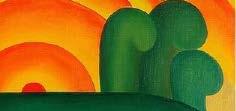
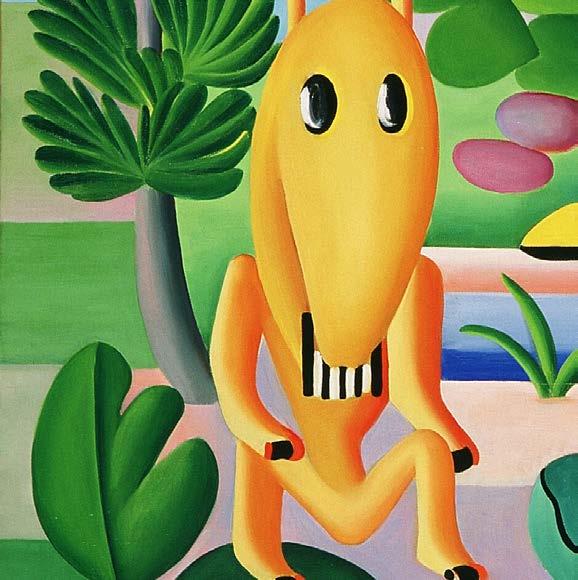
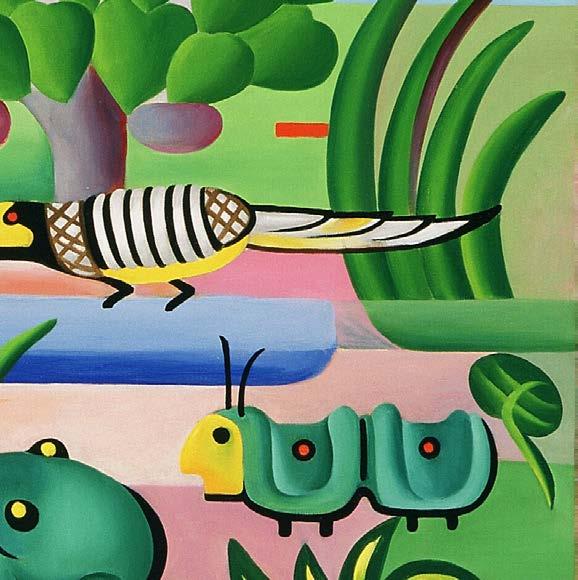
ALEXEY BRODOVITCH
GRAPHIC DESIGNER
Alexey Brodovitch is known foremost for his work on the american fashion-magazine Harper’s bazaar. Born in Ogolitchi, Russia in 1898 in an aristocratic and wealthy family, Brodovitch’s youth was marked by the bolshevik revolution. Being a loyal supporter of the tsar, he became first lieutenant in the czar’s White Army. In 1920 he fled to Paris as an exile from the October Revolution. Like many other emigrés whom had gained wealth in Rus-
sia, he ended up being both poor and workless. For the first time in his life he had to work to gain money. Living in Montparnasse, he found himself in a community of russian artists, which lead to his wish to become a painter. While his work was sought after in europe As expected his work didn’t go unnoticed in America. The photographer Ralph Steiner who worked for Harper’s Bazaar, recognized the potential of Brodovitch as a designer. He in-
troduced him to Carmel Snow, editor-in-chief of the magazine whom immediately offered him a job.Brodovitch created a harmonious and meaningful whole using avant-garde photography, typography and illustration. After being hired he asked several old friends like Man Ray, Jean Cocteau, Raoul Dufy, Marc Chagall and A.M. Cassandre to work for the magazine. Cassandre created several of the Bazaar covers between 1937 and 1940.
PAGE 132 | PERSONS OF INTEREST | ISSUE 1

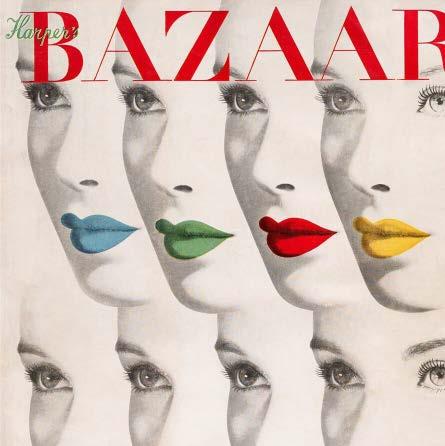
HERBERT BAYER, COLLEGE FASHIONS, COVER FÜR HARPER’S BAZAAR, 1940
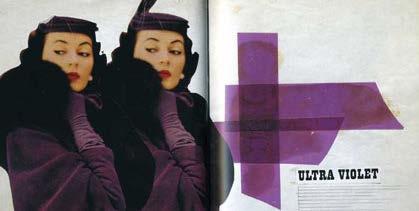
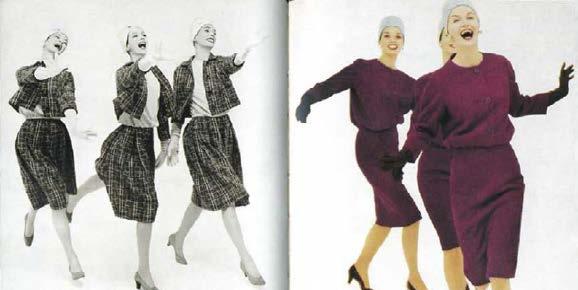 THE ULTRA VIOLETS ARTICLE HARPER’S BAZAAR, PHOTOGRAPHS RICHARD AVEDON PUBLISHED IN THE LAST ISSUE DIRECTED BY ALEXY BRODOVITCH 1958
THE ULTRA VIOLETS ARTICLE HARPER’S BAZAAR, PHOTOGRAPHS RICHARD AVEDON PUBLISHED IN THE LAST ISSUE DIRECTED BY ALEXY BRODOVITCH 1958
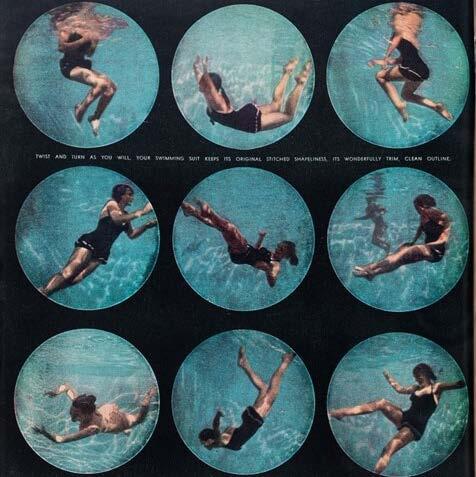 ALEXEY BRODOVITCH, TWIST AND TURN AS YOU WILL, JUNIOR BAZAAR, JANUARY 1947, PHOTOS: GEORGE BARKENTIN
ALEXEY BRODOVITCH, TWIST AND TURN AS YOU WILL, JUNIOR BAZAAR, JANUARY 1947, PHOTOS: GEORGE BARKENTIN
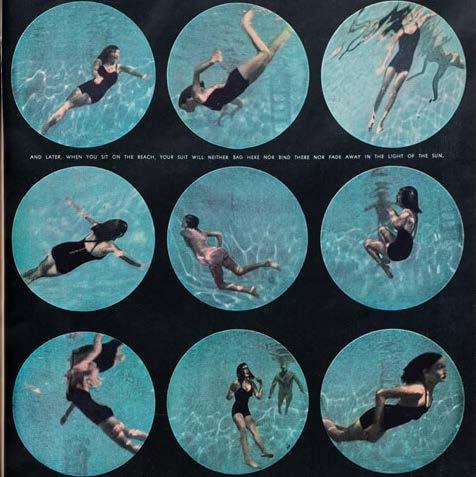
 (RIGHT) ALEXEY BRODOVITCH, GRAPHISME, PARIS, 1930
(RIGHT) ALEXEY BRODOVITCH, GRAPHISME, PARIS, 1930

MICHELANGELO ANTONIONI
DIRECTOR
Together with Fellini, Bergman and Kurosawa, Michelangelo
Antonioni is credited with defining the modern art film. And yet Antonioni’s cinema is also recognized today for defying any easy categorization, with his films ultimately seeming to belong to their own distinctive genre. Indeed, the difficulty of precisely describing their category is itself the very quintessence of Antonioni’s films. Among the most-cited con-
tributions of Antonioni’s cinema are their striking descriptions of that unique strain of post-boom ennui everywhere apparent in the transformed life and leisure habits of the Italian middle and upper classes. Detecting profound technological, political and psychological shifts at work in postWWII Italy,Antonioni set out to explore the ambiguities of a suddenly alienated and dislocated Italy, not simply through his oblique
style of narrative and characters, nor through any overt political messaging, but instead by tearing asunder the traditional boundaries of cinematic narrative in order to explore an ever shifting internal landscape expressed through architecture, urban space and the sculptural, shaping presence of objects, shapes and emotions invented by camera movement and depth of focus.
PAGE 140 | PERSONS OF INTEREST | ISSUE 1
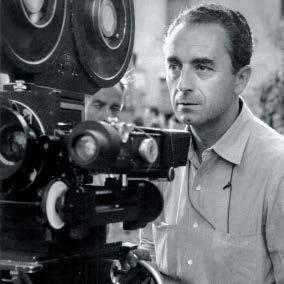

PAGE 142 | PERSONS OF INTEREST | ISSUE 1
LA NOTTE (1961) MICHELANGELO ANTONIONI
LA NOTTE (1961) MICHELANGELO ANTONIONI
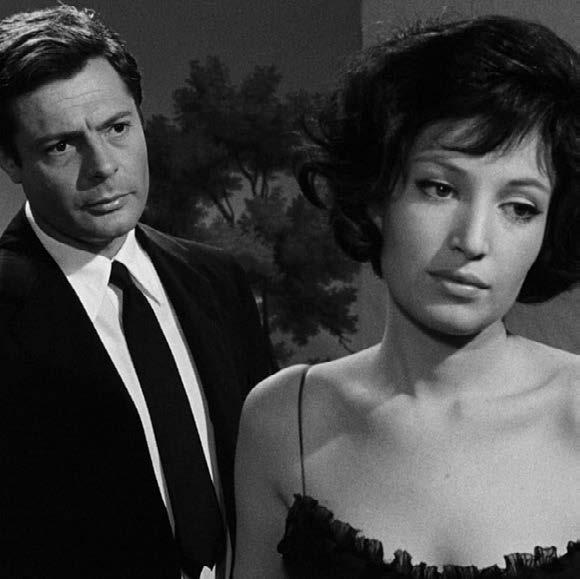
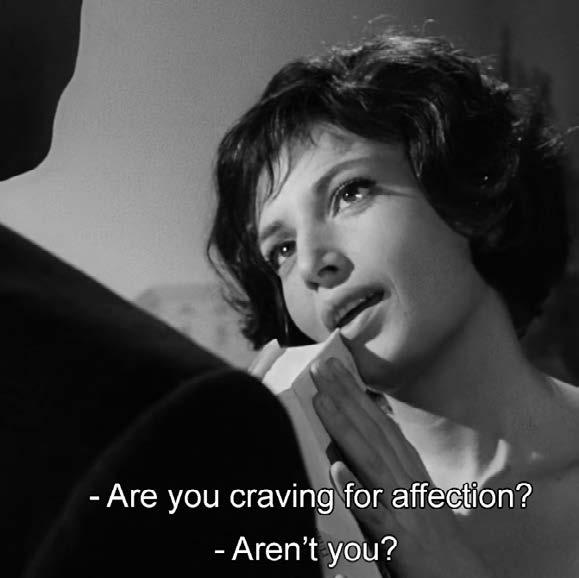
LA NOTTE (1961) MICHELANGELO ANTONIONI

LA NOTTE (1961) MICHELANGELO
ANTONIONI
LA NOTTE (1961) MICHELANGELO ANTONIONI
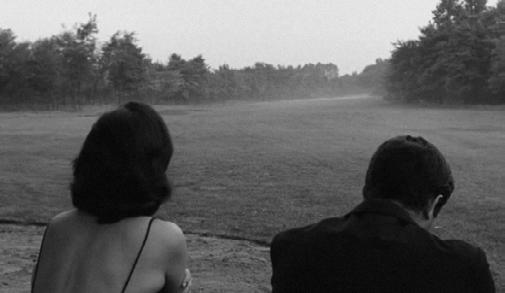
PAGE 146 | PERSONS OF INTEREST | ISSUE 1
LA NOTTE (1961) MICHELANGELO ANTONIONI

BRODOVITCH | PAGE 147
ALEXY
GEORGIA O’KEEFFE
PAINTER
Born near Sun Prairie, Wisconsin, O’Keeffe decided to become an artist at age nine. She received formal art training at the School of the Art Institute of Chicago and New York’s Art Students League. After two years as a commercial illustrator, she spent seven years (1911–18) teaching in Virginia, South Carolina, and Texas, while continuing her own study. O’Keeffe was strongly influenced by the ideas of Arthur Wesley Dow, who advocated simplifying forms as a means of capturing their essence and devel-
oping a personal style. In 1915, following her time with Dow, O’Keeffe destroyed all of her previous work. She returned to the basics, creating radical charcoal drawings that led directly to experiments with total abstraction. In 1918, O’Keeffe moved to New York at the behest of influential photographer and art dealer, Alfred Stieglitz. Stieglitz gave O’Keeffe her first exhibition, and their professional relationship evolved into a personal one. Stieglitz’s sensuous photographs of O’Keeffe contributed to her
persistent reputation as a painter of women’s sexuality, despite her vehement rejection of any such interpretations. In 1924, O’Keeffe married Stieglitz, and they lived in New York until his death 22 years later. O’Keeffe settled in New Mexico, which she had visited even during Stieglitz’s lifetime. The dry, bright open spaces appealed to her immensely. She continued to paint there until her death at 98. Towards the end of her life, she painted with the help of an assistant due to increasing vision loss.
PAGE 148 | PERSONS OF INTEREST | ISSUE 1

O’KEEFFE | PAGE 149
GEORGIA
GEORGIA O’KEEFFE, PHOTOGRAPHED BY YOUSUF KARSH, 1956

GEORGIA O’KEEFFE, NEW YORK CITY NO 1, 1926
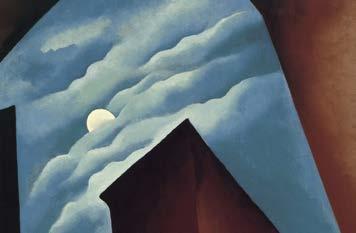
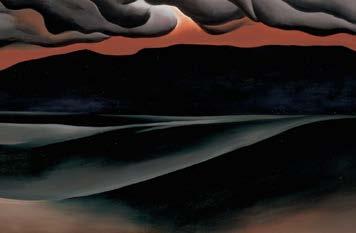
PERSON’S NAME | PAGE 151
ABOVE: GEORGIA O’KEEFFE, NEW YORK STREET WITH MOON, 1925; BELOW: STORM CLOUD, LAKE GEORGE, 1923
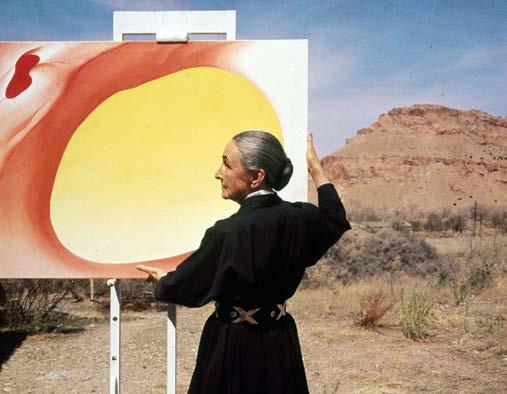
PAGE 152 | PERSONS OF INTEREST | ISSUE 1
(ABOVE) PHOTOGRAPHY BY TOM VACCARO (RIGHT) GEORGIA O’KEEFFE, SERIES 1, NO. 8, 1919
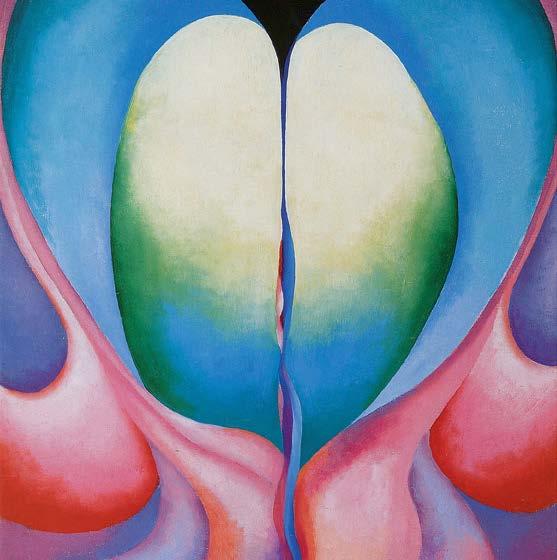 —GEORGIA O’KEEFFE
—GEORGIA O’KEEFFE

PAGE 154 | PERSONS OF INTEREST | ISSUE 1
To create one’s world in any of the arts takes courage.
GEORGIA O’KEEFFE, EAST RIVER FROM THE SHERATON HOTEL, 1928
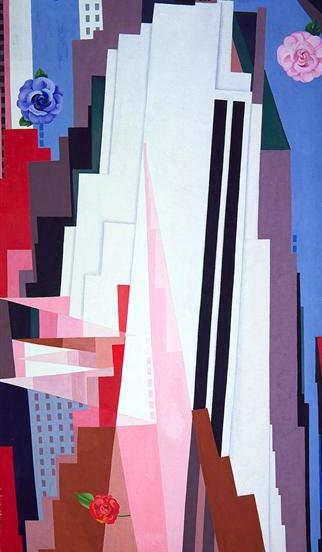
GEORGIA O’KEEFFE, MANHATTAN, 1932
Alvin Ailey was born on January 5, 1931, in Rogers, Texas. His experiences of life in the rural South would later inspire some of his most memorable works. He was introduced to dance in Los Angeles by performances of the Ballet Russe de Monte Carlo and the Katherine Dunham Dance Company, and his formal dance training began with an introduction to Lester Horton’s classes by his friend Carmen de Lavallade. Horton, the founder of one of the first racially-integrated dance compa-
nies in the United States, became a mentor for Mr. Ailey as he embarked on his professional career. After Horton’s death in 1953, Mr. Ailey became director of the Lester Horton Dance Theater and began to choreograph his own works. In the 1950s and 60s, Mr. Ailey performed in four Broadway shows, including House of Flowers and Jamaica. The trauma endured in his youth due to racism served as the backbone for much of his life’s work, including his most acclaimed piece, Revelations, which
drew directly frotm vivid memories of the things he turned to in seeking solace; church, blues, and spirituals. Throughout his lifetime, he was awarded numerous distinctions, including the Kennedy Center Honor in 1988 in recognition of his extraordinary contribution to American culture. In 2014, he posthumously received the Presidential Medal of Freedom, the country’s highest civilian honor, in recognition of his contributions and commitment to civil rights and dance in America.
DANCER | CHOREOGRAPHER
PAGE 156 | PERSONS OF INTEREST | ISSUE 1
ALVIN AILEY
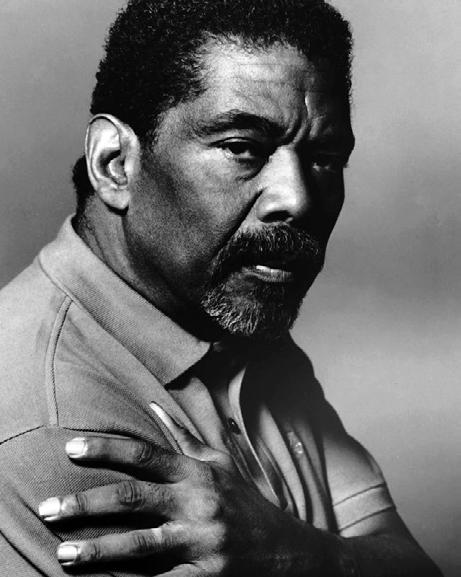 LEFT: ALVIN AILEY PHOTOGRAPHED BY ERIC N. HONG
LEFT: ALVIN AILEY PHOTOGRAPHED BY ERIC N. HONG

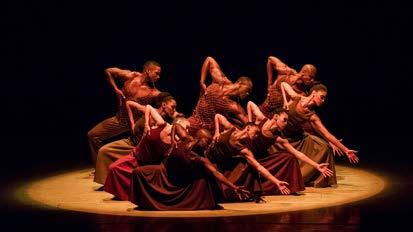
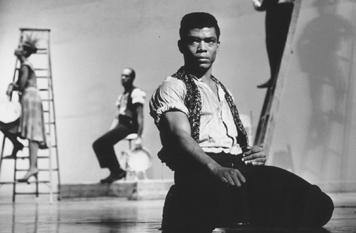
ALVIN AILEY | PAGE 159
LEFT: ALVIN AILEY PHOTOGRAPHED BY JACK MITCHELL RIGHT: ALVIN AILEY ON STAGE (TOP) AND ALVIN AILEY’S ‘REVELATIONS’ (BOTTOM)
wanted to do the kind of dance that could be done for the man on the streets, the people. I wanted to show Black people that they could come down to these concert halls. That it was part of their culture being done there and that it was universal.
—ALVIN AILEY
PAGE 160 | PERSONS OF INTEREST | ISSUE 1
I
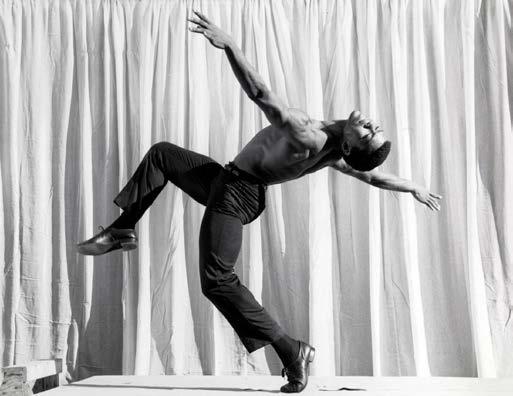
ALVIN AILEY | PAGE 161
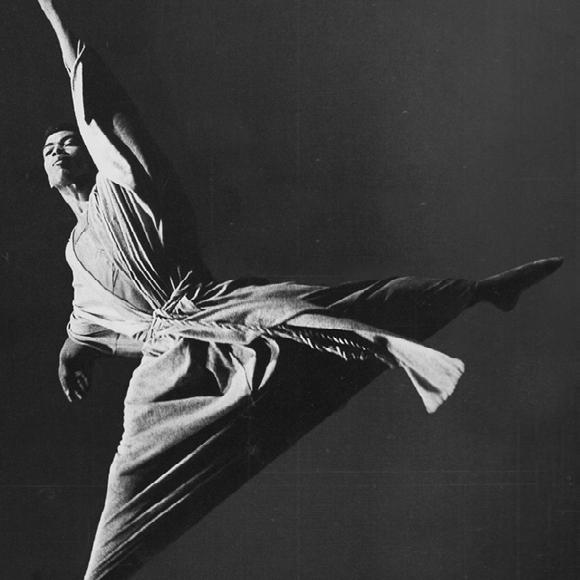

FRANCOISE TRUFFAUT
FILM DIRECTOR

Francois Truffaut was a French film director, producer, actor, screenwriter, and film critic. He is regarded as one of the founders of the French New Wave, characterized by its rejection of traditional filmmaking conventions in favor of experimentation and a spirit of iconoclasm. In his relatively short career, he has taken part in the production of more than 30 films His film The 400 Blows, a autobiographical story about the criminal adventures of a 13-year old boy, is probably the most famous work, and the
icon of French New Wave movement The resurgence of interest in Truffaut was signaled by the mounting of a major exhibition, “François Truffaut,” on the 30th anniversary of his death, at the inémathèque française in Paris, between 8 October 2014 and 10 February 2015. This exhibition displayed screenplays annotated by Truffaut, letters to and from his acquaintances—figures such as Alfred Hitchcock and Jean Genet—photographs pertaining to all aspects of his life and work, and significant documents. Arnaud
PAGE 164 | PERSONS OF INTEREST | ISSUE 1

| PAGE 165
FRANCOISE TRUFFAUT
TRUFFAUT ON SET OF “JULES ET JIM” (1961)
Desplechin, a prominent contemporary French filmmaker, sheds light on Truffaut’s prominence as a filmmaker: “There was something, in every cut, that allowed each shot to exist of its own volition. Usually when you link two shots, you’re putting them in the service of a story, but here, on the contrary, the shots retain their integrity, their will. Every shot is a unit of thought.”

PAGE 166 | PERSONS OF INTEREST | ISSUE 1
COVER AND FILM SILL FROM TRUFFAUT’S ‘400 BLOWS’ (1959)
 —FRANCOISE TRUFFAUT
—FRANCOISE TRUFFAUT
FRANCOISE TRUFFAUT AND JEAN-PIERRE LEAUD ON SET OF ‘DAY FOR NIGHT’ (1973)

PAGE 168 | PERSONS OF INTEREST | ISSUE 1
Three films a day, three books a week and records of great music would be enough to make me happy to the day I die.
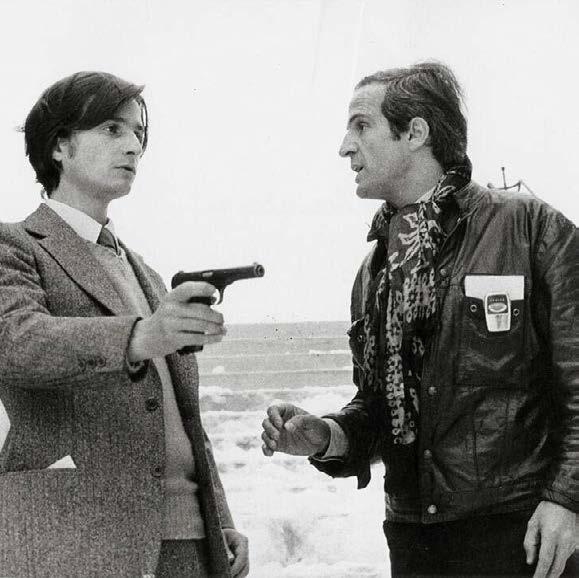

PAGE 170 | PERSONS OF INTEREST | ISSUE 1
LEFT: TRUFFAUT AND ALFRED HITCHCOCK IN 1962 RIGHT: ON SET OF ‘ANTOINE AND COLETTE’ (TOP) AND ON SET OF ‘LOVE ON THE RUN’ (BOTTOM)
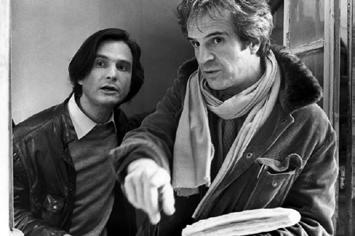

FRANCOISE TRUFFAUT | PAGE 171
GUY RITCHIE
FILM DIRECTOR | SCREENWRITER
Guy Ritchie is an English film director, screenwriter, and producer. Born in Hatfield, Hertfordshire on September 10, 1968, Ritchie went on to make a name for himself for films such as Lock, Stock, and Two Smoking Barrels (1998), Snatch (2000), Sherlock Holmes (2009) and The Gentleman (2019). Menacing British gangs, action packed scenes made with “tasteful violence”, and interweaving stories with non linear narratives give Ritchie’s films his unique style that creates a “high-impact viewing experi-
ence” for the audience, but, as Ritchie once said, “It’s impossible to describe any artist’s style.” Guy struggled with school in his early years dealing with dyslexia. He attended 10 different schools and was ultimately expelled when he was 15. In 1993, Guy began to work on commercials and music videos for television, allowing him to gain the foundation for his directing skills, and leading him to direct his first project, The Hard Case (1995). After a long search to find a sponsor for his next film, in 1998, he was able to start filming
his first full length directorial debut, Lock, Stock, and Two Smoking Barrels (1998). The gangster crime-comedy was met with appraisal from a worldwide audience and Ritchie became “the most discussed personality in the creative environment of Great Britain in the blink of an eye.” Two years later, he went on to create another gangster crime-comedy, Snatch (2000), which was met with appraisal of the same caliber and solidified Guy Ritchie’s place in the filmmaking industry for the years beyond.
PAGE 172 | PERSONS OF INTEREST | ISSUE 1

GUY RITCHIE | PAGE 173

PAGE 174 | PERSONS OF INTEREST | ISSUE 1


PERSON’S NAME | PAGE 5
PAGE 176 | PERSONS OF INTEREST | ISSUE 1
I’m trying as much as I can not to deconstruct what it is that makes it happen, I don’t know. I went with a very simple formula; just start fucking around.
—GUY RITCHIE
GUY RITCHIE ON THE SET OF SHERLOCK HOLMES (2009)

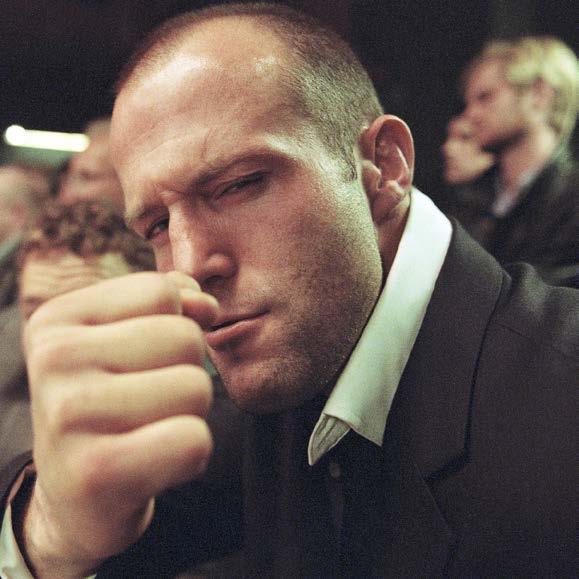
LEFT: JASON STATHAM POSING ON THE SET OF GUY RITCHIE’S 2ND FILM “SNATCH”

RIGHT: GUY RITCHIE ON THE SET OF ‘KING ARTHUR: LEGEND OF THE SWORD” (TOP) AND ‘SNATCH” (BOTTOM)
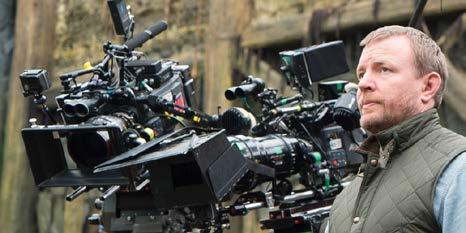
| PAGE 179
GUY RITCHIE
SUSAN MEISELAS
PHOTOGRAPHER
Born in 1948, Susan Meiselas earned a degree at Harvard and started out as a teacher in New York. Meiselas then went on to document Nicaragua’s Sandinista revoltion Her photographs of war-torn Nicaragua and American carnival strippers are her best-known work, especially one photograph named Molotov Man, which depicts a man poised to throw a molotov cocktail made from a Pepsi bottle in his right hand, while holding a rifle in his left hand. This photo became the symbol of San-
dinista revolution. She is the author of Carnival Strippers (1976), Nicaragua (1981), Kurdistan: In the Shadow of History (1997), Pandora’s Box (2001), Encounters with the Dani (2003) Prince Street Girls (2016), A Room Of Their Own (2017) and Tar Beach (2020). Her photographs are included in North American and international collections. In 1992 she was made a MacArthur Fellow, received a Guggenheim Fellowship (2015), and most recently the Deutsche Börse Photography Foundation Prize (2019).

PAGE 180 | PERSONS OF INTEREST | ISSUE 1
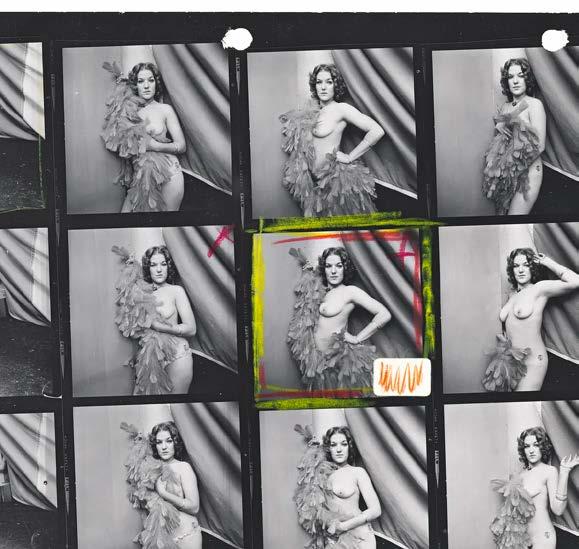
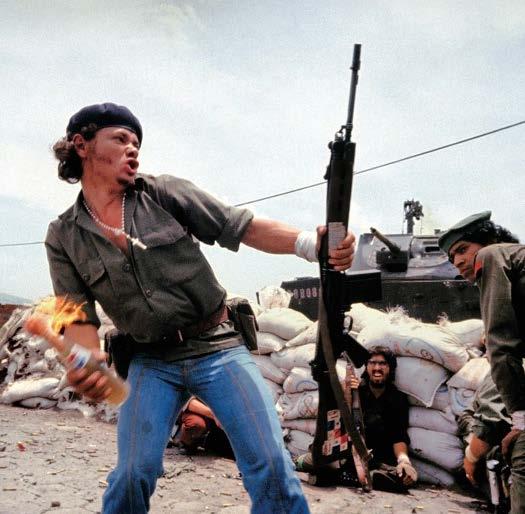
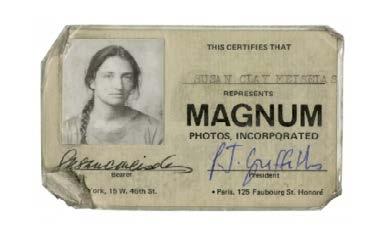
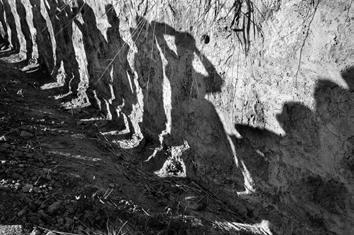
SUSAN MEISELAS | PAGE 183
LEFT: ‘MOLOTOV MAN’ TAKEN BY MEISELAS DURING THE NICARAGUEN REVOLUTION IN 1979
RIGHT: SOLDIERS SEARCH BUS PASSENGERS ALONG THE NORTHERN HIGHWAY, EL SALVADOR, 1980
POPULAR FORCES BEGIN THEIR FINAL OFFENSIVE. MASAYA, NICARAGUA.
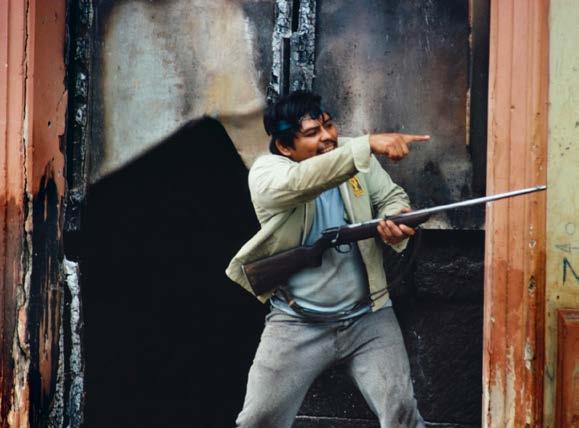
PAGE 184 | PERSONS OF INTEREST | ISSUE 1
—SUSAN MEISELAS

SUSAN MEISELAS | PAGE 185
The camera is an excuse to be someplace you otherwise don’t belong. It gives me both a point of connection and a point of separation.
NICARAGUA. JUNE 8, 1979

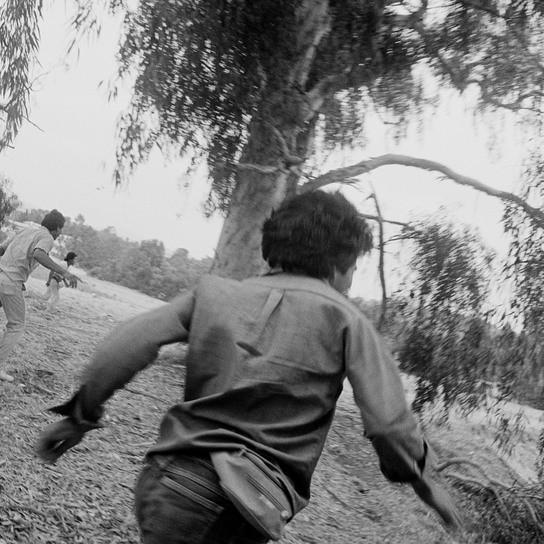
ZUZANA LICKO
DESIGNER | TYPOGRAPHY
As one of the first type designers to exploit the potential of the Apple Macintosh in its pre- designer days, Zuzana Licko transformed the pixel from low resolution imitation to high-style original. Her early Emigre fonts not only revolutionised digital typography but also opened up the market for the smaller foundries whose quarter-page ads populate today’s design magazines. She has designed more than two dozen typeface families and oversees the Emigre foundry, which currently offers 300 or so typefaces
by the likes of Barry Deck, Jonathan Barnbrook, Frank Heine and Rodrigo Cavazos. When Rudy VanderLans launched Emigre, she began to contribute fonts to the fledgling ‘magazine that ignores boundaries’. Rather than replicate (on a dot matrix printer) typograpic forms already adapted from calligraphy, lead and photo setting, Licko used public domain software to create bitmap fonts. Emperor, Emigre and Oakland appeared in the magazine and were soon advertised for sale when VanderLans and Licko
co-founded the Emigre foundry. Emigre’s development reflected the evolution of digital technology while questioning conventional ideas of legibility and layout. Licko’s highly structured typefaces counterbalanced VanderLans’ organic compositions. The ‘Emigre aesthetic’ lay at the heart of a once-controversial battle on the American design scene, pitting them against Modernists such as Massimo Vignelli, who referred to the new typography as ‘garbage’.
PAGE 188 | PERSONS OF INTEREST | ISSUE 1
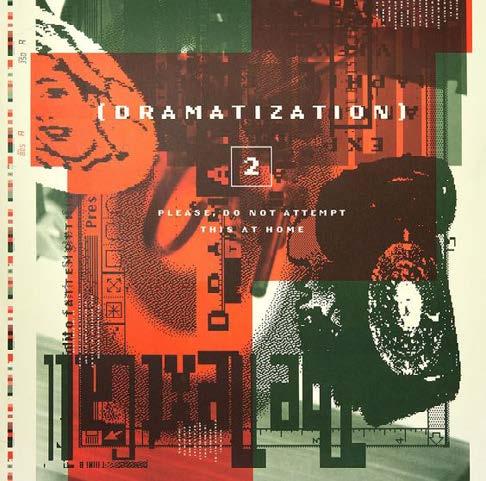
ZUZANA LICKO | PAGE 189
EMIGRE MAGAZINE
COVER BY ZUZANA LICKO
The debate did little to slow the popularisation of the Emigre fonts, which by the late 1980s had moved beyond alternative pop cult status into the mainstream (The New York Times, ABC and Nike). The graphic design establishment has since recognised Licko and VanderLans with a 1994 Chrysler Award, the 1997 AIGA gold medal and the 1998 Charles Nypels Award for Innovation in Typography.
Licko’s intellectual approach to type creation continued to find inspiration in the production qualities of technology. In 1986 she created Citizen, which approximated the smoother bitmap printing of the new laser printers. Base-9 and Base-12 originated as screen fonts for Emigre’s website in 1995, and then evolved with a ompanion printer font. As Emigre began publishing more design theory, Licko developed more ‘classical’ fonts; her designs Mrs Eaves and Filosofia were based respectively on Baskerville and Bodoni. And with issue 60, Emigre’s latest music-oriented incarnation, Licko and VanderLans have found yet another format in which the publication can continue to be a testing ground for Emigre typefaces.
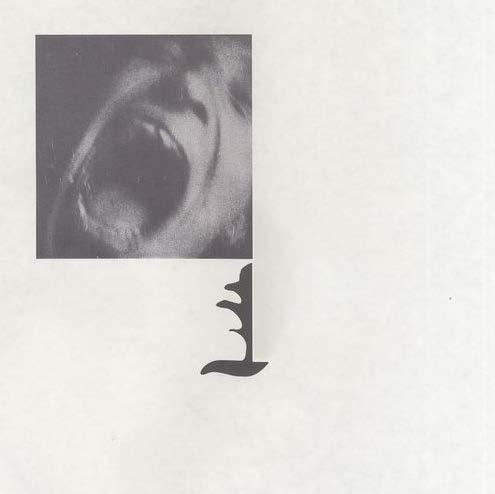
PAGE 190 | PERSONS OF INTEREST | ISSUE 1

ZUZANA LICKO | PAGE 191
EMIGRE #20, EXPATRIATES (1991). TYPEFACE DESIGNS BY ZUZANA LICKO
 LEFT: MRS.EAVES TYPEFACE BY ZUZANA LICKO, 1996. RIGHT: TYPOGRAPHY PATTERNS
LEFT: MRS.EAVES TYPEFACE BY ZUZANA LICKO, 1996. RIGHT: TYPOGRAPHY PATTERNS
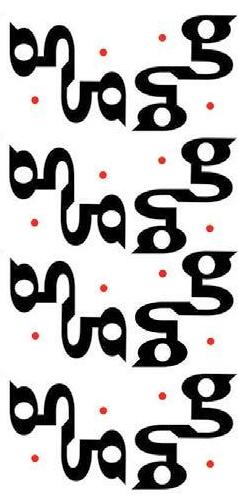
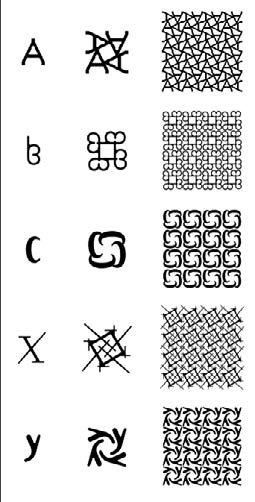
ZUZANA LICKO | PAGE 193
RR: Do you have a maxim?
ZL: I’ve never thought about having a maxim . . . it might be: ‘Question the obvious’.
RR: And what typeface would it be set in?
I’d never fully appreciate or notice through casual observation or usage. For example, working on my Bodoni revival, Filosofia, allowed me to better understand this long-time classic. This kind of scrutiny, in turn, has given me ideas for faces that are not strict revivals, such as Tarzana and Solex.
ZL: That depends on the context, of course. But for general print reproduction I would pick the last one I’ve finished, as I’m still trying to get better acquainted with the most recent designs.
RR: What would be your greatest accomplishment?
ZL: That I was able to design functional typefaces without mastering calligraphy, which I was taught was impossible.
RR: How do you judge good typeface design?
RR: After becoming well known for radical fonts, you became interested in traditional ones. Why?

ZL: My interest in reviving the classics (which began in 1995) was sparked by two factors: sophistication of personal computer technology, and Emigre magazine’s shift towards theory and the subsequent need for text faces to set large bodies of text. Each design gives me the opportunity to study details of classic faces that
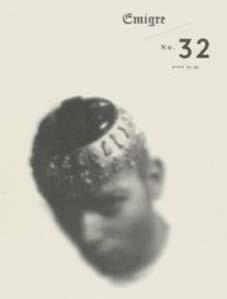
ZL: It depends on the intended usage, and what criteria you define as being important: longevity of usage, intensity of usage, influence on other designers, etc. It takes the perspective of time to determine which typefaces remain classics, which become icons, and which fade away. Moreover, these perceptions also change, and it is the constant changing of these perceptions that drives our desire for new typeface solutions. In addition, new technologies and environments present new problems for the designer to address. The most successful experimental typeface designs are often those that address the possibilities or limitations of a yet uncharted technology.
LICKO
PAGE 194 | PERSONS OF INTEREST | ISSUE 1 EMIGRE MAGAZINE COVERS. TYPEFACE
DESIGN BY ZUZANA

ZUZANA LICKO | PAGE 195
PETER ZUMTHOR

ARCHITECT
Zumthor has said in the past that his ultimate goal is to “create emotional space.” I ask him how he goes about doing this.“I love buildings,” he says. “When I look back on my life I love the buildings that speak to me by means of their atmosphericqualities, by means of a feeling of history, of being complete.“This is something basic. I look at a person and it’s nice if Icould love them. It’s a beautiful feeling when I discover a nicerelationship. It’s how I experience buildings. In that I’m not alone –everyone shares this idea. I want to make buildings which have the capacity to be loved, that’s all.” But how does he go about
making those buildings? That’s the special part.“There are many levels,” he says. “As an architect you have to follow the technical levels, the urbanistic levels and so on, but the most important is probably a beautiful unity of use, atmosphere, space. So that the kitchen of my motherlooks like the kitchen of my mother and not like somethingstrange. It’s about the real thing. That’s what I go for.“I don’t treat the profession of architecture as a profession of arranging and inventing forms,” he continues. “These things I want to do need form, so I give them this form. I’m extremely sensitive to things which don’t work.”
PAGE 196 | PERSONS OF INTEREST | ISSUE 1
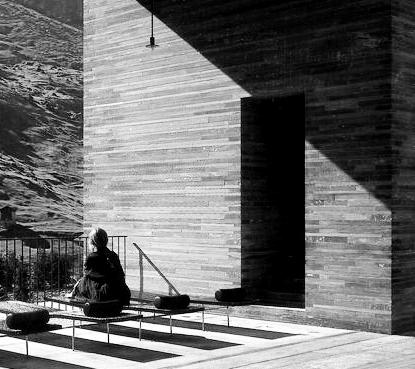
| PAGE 197
PETER ZUMTHOR
THERME VALS, PETER ZUMTHOR. 1996

PAGE 12 | PERSONS OF INTEREST | ISSUE 1 v
PAGE 198 | PERSONS OF INTEREST | ISSUE 1
ATELIER PETER ZUMTHOR, 1986
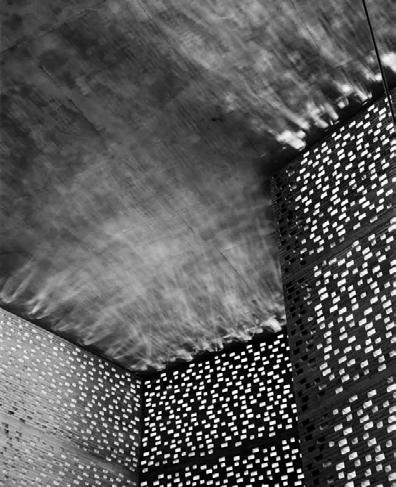
PERSON’S NAME | PAGE 13 PETER ZUMTHOR | PAGE 199
KOLUMBA MUSEUM, PETER ZUMTHOR. 2007
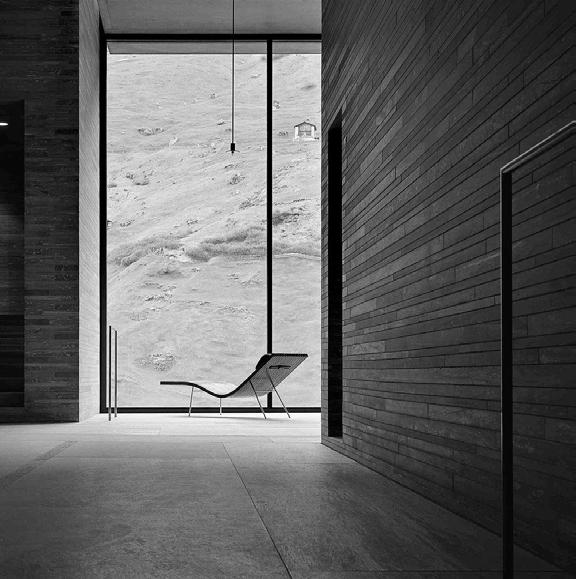
THERME VALS, PETER ZUMTHOR. 1996 PAGE 200 | PERSONS OF INTEREST | ISSUE 1
The next year should also be a busy one for Zumthor. As well as the LACMA project, he is working on designs for a multi million euro extension to the Fondation Beyeler art museum in Basel, Switzerland, which will add new exhibition and educational facilities to the existing Renzo Piano-designed building.
Other projects include a tea house in Korea, and a building housing a library, exhibition facilities and archives for the Korean poet Ko Un, also in Korea. Zumthor is also working on a large-scale project near Munich called Nantesbuch which he describes as a “new form of landscape park. We will invite artists to show their art there, to make site-specific works. We might ask some of them, including myself, to create gardens. We are now in the conceptual stage for that project.”
I have been with Zumthor for around an hour, and he tells me that he has to go straight from our meeting to the airport, to fly back to Switzerland, to his studio in the mountains. Just before he leaves, I ask what his dream future commission would be.
“I would like to build on the seashore,” he says. “I think the relationship to the sea is beautiful. I have done things with the relationship with the mountains, but not the long horizon of the sea... I like the water, the expanse. It makes me quiet.”
PETER ZUMTHOR PRINCIPAL WORKS
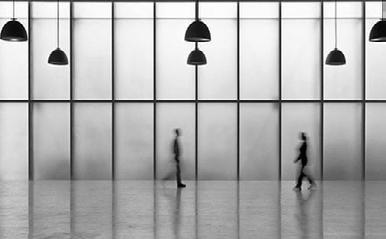
PERSON’S NAME | PAGE 15 PAGE 13 PERSONS OF INTEREST ISSUE 1
LEFT: KOLUMBA MUSEUM, 2007. RIGHT: KUNSTHAUS BREGENZ, 1997.
1986 Zumthor Studio Haldenstein, Switzerland 1988 Sogn
Chapel Sumvitg,
1994 Gugalun House Versam,
1996 Therme Vals Switzerland 1997 Kunsthaus
Austria 2002 House
2005 House
2007 Kolumba
Bruder
2011 Steilneset,
2013 Werkraumhaus
2016 Zinc
Benedetg
Switzerland
Switzerland
Bregenz
Luzi Jenaz, Switzerland
Zumthor Haldenstein, Switzerland
Art Museum Cologne, Germany
Klaus Field Chapel Wachendorf, Germany
Memorial for the Victims of the Witch Trials Finnmark, Norway
Andelsbuch, Austria
Mine Museum Allmannajuvet Norway
ZUMTHOR | PAGE 201
PETER
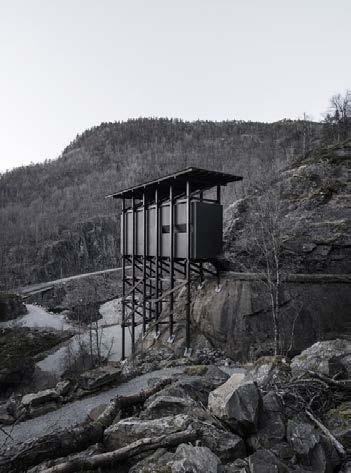
PAGE 202 | PERSONS OF INTEREST | ISSUE 1
MINE ZINC MUSEUM ALLMANNAJUVET , 2016.
—PETER ZUMTHOR
PETER ZUMTHOR | PAGE 203
My buildings should have an emotional core, a space which, in itself, has an emotional feeling.
Known for her pioneering graphic wall hangings, weavings, and designs, Anni Albers (1899-1994) is considered the most important textile artist of the 20th century, as well as an influential designer, printmaker, and educator. Organized by the Josef and Anni Albers Foundation, In Thread and On Paper: Anni Albers in Connecticut explores the ground breaking work and writing Albers produced in Connecticut from the 1950s through the end of her life, and
includes an extensive body of textiles, wall hangings, commercial collaborations, and works on paper. A landmark presentation, In Thread and On Paper is the first museum exhibition dedicated exclusively to the artist’s incredible output in the 44 years she lived in Connecticut. Anni Albers is interesting on so many levels. Historically she stands out as one of the great artists to emerge from the German Bauhaus, as one of the first female artists to achieve global recog-
nition, and as a rare artist who simultaneously created work that was both functional and purely artistic. Of course, it is the work itself that explains why we are still thinking about her now. Her understanding of and real empathy for her materials is unparalleled. She was driven by an unwavering curiosity about the way things are made and how simple materials come together to make complicated objects. A desire to share that curiosity comes through in all of her work.
ANNIE ALBERS
PRINTMAKER | TEXTILE DESIGN
PAGE 204 | PERSONS OF INTEREST | ISSUE 1
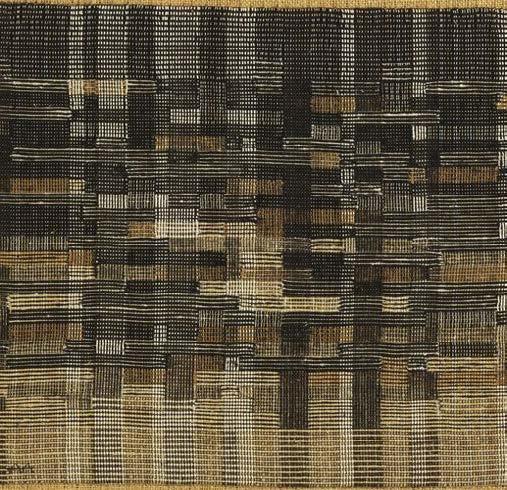
ANNI ALBERS | PAGE 205
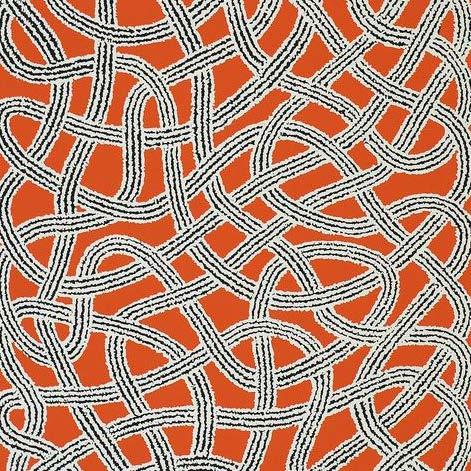
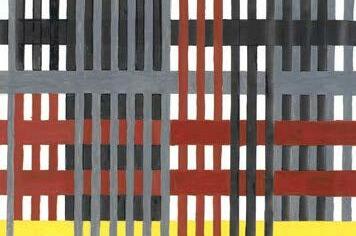
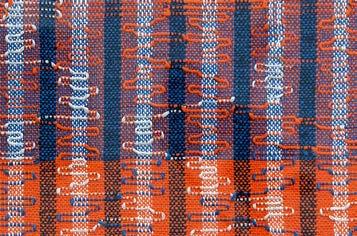
ANNI ALBERS | PAGE 207
VARIOUS TEXTILE PATTERNS FROM ANNI ALBERS




PAGE 208 | PERSONS OF INTEREST | ISSUE 1
VARIOUS TEXTILE PATTERNS BY ANNI ALBERS




ANNI ALBERS | PAGE 209
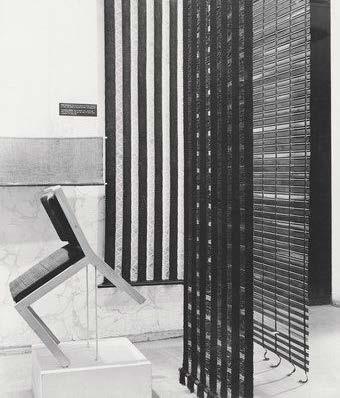
PAGE 210 | PERSONS OF INTEREST | ISSUE 1
INSTALLATION VIEW OF ANNI ALBERS MOMA EXHIBIT, 1949

ANNI ALBERS | PAGE 211 CHRISTOPHER FARR’S FURNITURE USING ANNI ALBERS ARCHIVES
JEAN-LUC GODARD
 FILM DIRECTOR
FILM DIRECTOR
When the jump cut first appeared in Jean-Luc Godard’s Breathless, people thought the edit was a mistake. Then, after realizing they were a brand new editing technique, they were amazed. That’s who Godard was, someone who seemingly effortlessly helped the art of cinema leap forward. If there was a rule of cinema, Godard broke it. He didn’t believe in the fourth wall. He mixed snobby topics with the urbane. And Godard never shied away from sharing his opinions. Godard ushered in the modern era of cinema by being one of the pioneers of the French New Wave. This movement not only changed the way
film was seen around the world, but it shrunk the globe. People began to seek out cinema from other countries. To study it, talk about it, and celebrate it. His career began as a critic, writing for Cahiers du Cinéma. In the 1960s, after Breathless, Godard made a dozen more movies that helped solidify a new look and feel of movies. He was the kind of guy who could make a musical like A Woman Is a Woman (1961) and follow it up with a drama about a sex worker like Vivre Sa Vie (1962), and round out thedecade with a deconstructed road movie like Week-end (1967).
PAGE 212 | PERSONS OF INTEREST | ISSUE 1
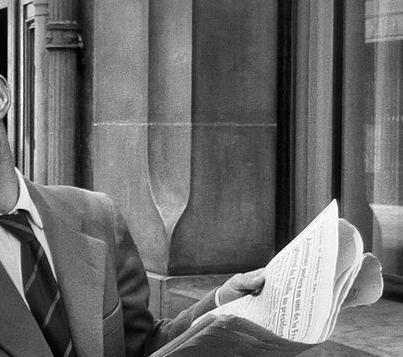
| PAGE 213
JEAN-LUC GODARD
PORTRAIT OF JEAN-LUC GODARD
POSTER FOR MASCULIN FÉMININ (1966)
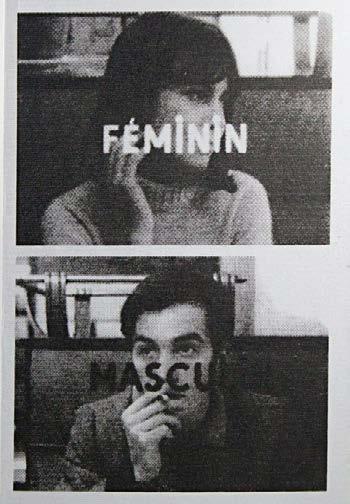

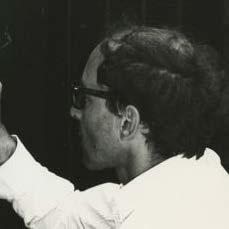
JEAN-LUC GODARD | PAGE 215

PAGE 30 | PERSONS OF INTEREST | ISSUE 1 216 | PERSONS OF INTEREST | ISSUE 1


PERSON’S NAME | PAGE 31 JEAN-LUC GODARD | PAGE 217 LEFT: FILM STILL FROM VIVRE SA VIE (1962) RIGHT: SEQUENCE FROM ALPHAVILLE (1965)
Photography is truth. The cinema is truth twenty-four times per second.
—JEAN-LUC GODARD
PAGE 218 | PERSONS OF INTEREST | ISSUE 1


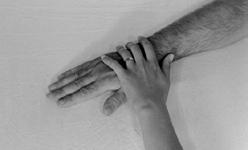

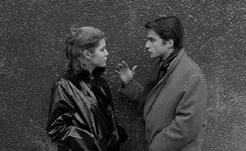
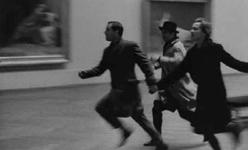
JEAN-LUC GODARD | PAGE 219
STILLS
VARIOUS
FILM
FROM
JEAN-LUC GODARD FILMS
LINA WERTMULLER
FILM DIRECTOR
Born in Rome, August 14, 1928, Lina Wertmuller lived a rebellious childhood. Having been raised in a devout Christian Home, she went to Catholic School. Make that Catholic Schools, after being expelled from 15 different high schools. Her youth was shaped by comic books, having stated that the “Flash Gordon” comics inspired her the most as they were the most cinematic and “more cinematic than most films”. But before Wertmüller began producing films, she graduated from the school Accademia
Nazionale di Arte Drammatica
Silvio D’amico in 1951. Post college, she found interest in Avant Garde play production and toured with a contemporary group of puppeteers. It was not until she was introduced to her mentor, the legendary director Federico Fellini, that she began to seriously develop her films. And in the 1970s she began to sore, her film Seven Beauties was nominated for an Oscar, making her the first female director to be nominated for an Academy Award. Her films are
characterized by realism in work life, a fascination of Italy, and vibrant color palettes. Among filmmaking Lina Wertmuller was the subject of a 2015 biopic titled Behind the White Glasses.
She passed away in her home, on December 9, 2021, living to be 93 years old. Narrative and cinematic reflexivity are also commonplace in Wertmüller’s films, as she rehashed and refigured signs and recognizable modes of presentation in a way that references her inspirations and the films of her contemporaries.
PAGE 220 | PERSONS OF INTEREST | ISSUE 1

LINA WERTMULLER | PAGE 221
LINA WERTMULLER FOR AN EDITORIAL

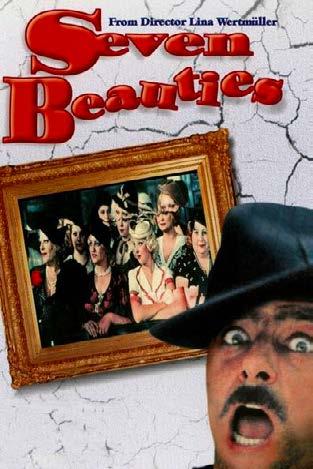
PAGE 222 | PERSONS OF INTEREST | ISSUE 1
KEY ART FOR SEVEN BEAUTIES ABOVE, SCREENGRAB FROM THE FILM ON THE RIGHT

LINA WERTMULLER | PAGE 223
prefer creative disorder to strict rules. To love is to be engaged is to work is to be interested is to create. if I love something I do it, and if I don’t, I don’t.
—LINA WERTMULLER
PAGE 224 | PERSONS OF INTEREST | ISSUE 1
I
ART FOR LOVE AND ANARCHY
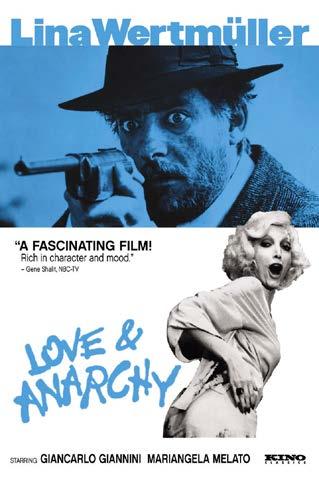
LINA WERTMULLER | PAGE 225
KEY
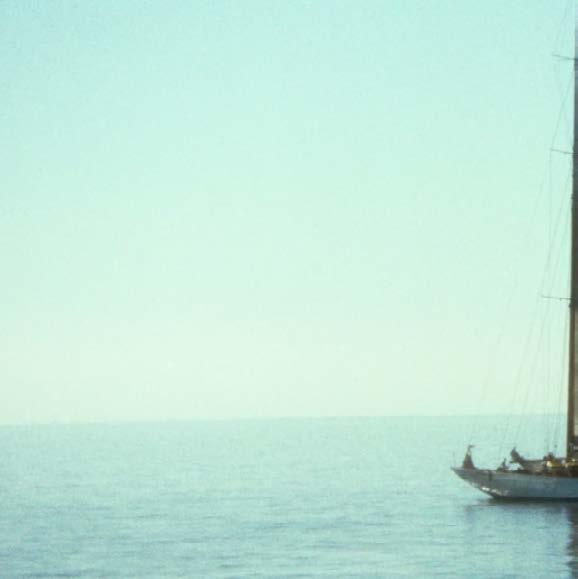

Born in Oimachi, Tokyo, March, 23, 1910, Akira Kurosawa was born into a Samurai Family. Of his eight siblings, Kurosawa was the youngest. His father encouraged the children to watch films, and Akira saw his first western film when he was six years old. He practiced kendo swordsmanship and calligraphy while growing up as well. Hiego, his older brother of four years took Akira Kurosawa to see the bloody aftermath of the great Kanto earthquake. This would ultimately influence Akira’s blunt unforgiv-
ing storytelling of uncomfortable truths. Akira first found success as a painter, he studied painting at an art school in Japan and found love for traditional western painting. Akira found recognition in filmmaking after many years of assistant work when he directed the film Rashomon. It won the Academy award for best foreign language film in 1951. But his most recognizable film would be Seven Samurai which was released in 1954, it was inspired by early western cowboy films. Kurosawa passed away in 1998,
but is remembered for his ability to capture motion in compositions unlike any other director. He uses the entire frame in his compositions to tell vivid stories. In 1990, the 80-year-old director returned with Dreams, an experimental offering brought to the screen with help from yet another of his admirers, Steven Spielberg. Though the film met with a lukewarm reception, at that year’s Academy Awards Spielberg and Lucas presented Kurosawa with an honorary Oscar by in recognition of his body of work.
MASSIMO VIGNELLI
GRAPHIC DESIGN I FURNITURE DESIGN
PAGE 228 | PERSONS OF INTEREST | ISSUE 1

VIGNELLI | PAGE 229
MASSIMO VIGNELLI
MASSIMO

VIGNELLI’S DESIGN FOR THE
SUBWAY SYSTEM
NYC
VIGNELLI’S DESIGN FOR THE D.C

MASSIMO VIGNELLI | PAGE 231

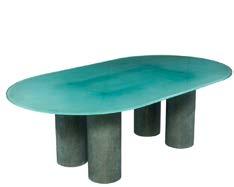
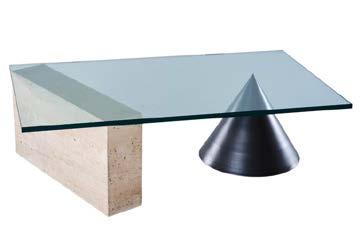
PAGE 232 | PERSONS OF INTEREST | ISSUE 1



The life of a designer is a life of fight: fight against the ugliness.
If you can design one thing, you can design everything.
—MASSIMO VIGNELLI
PAGE 234 | PERSONS OF INTEREST | ISSUE 1
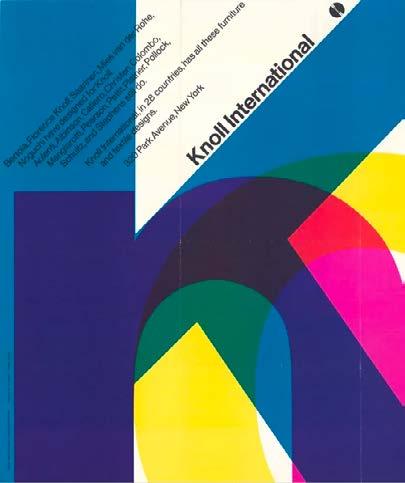
| PAGE 235
MASSIMO VIGNELLI
VIGNELLI DESGINED POSTER FOR KNOLL INTERNATIONAL
ZAHA HADID

ARCHITECT
Born in Baghdad, Iraq, October 31, 1950. Zaha Hadid was raised in an upper class Iraqi family. Her interest in the arts and architecture were cultivated through her parents, and she found particular love for architecture when her family would visit ancient Sumerian cities. Hadid studied at the Architectural Association School of Architecture, and at graduation she was described as being “a planet in her own orbit”, and the most “outstanding pupil ever taught”. The first defining work of hers was the Vitra Fire station in Ger-
many. Her major projects include the Bridge Pavilion, Guangzhou Opera House, Galaxy SOHO, and Broad Art Museum, WangJin Soho, and Heydar Aliyev Center. All of these buildings follow a logical procession of curved lines, giving onlookers the impression that they are in motion. Her style is known as Deconstructivist and Neo-Futuristic. At the same time of her professional accomplishments she taught at universities giving rise to a new generation of architects. Zaha Hadid passed away in 2016.
PAGE 236 | PERSONS OF INTEREST | ISSUE 1

ZAHA HADID | PAGE 237
ZAHA HADID IN A BUILDING SHE DESIGNED
VITRA FIRE STATION, HADID’S FIRST PROJECT

PAGE 238 | PERSONS OF INTEREST | ISSUE 1
 —ZAHA HADID
—ZAHA HADID
PAGE 240 | PERSONS OF INTEREST | ISSUE 1
Of course there is a lot of fluidity now between art, architecture and fashion—a lot more cross-pollination in the disciplines
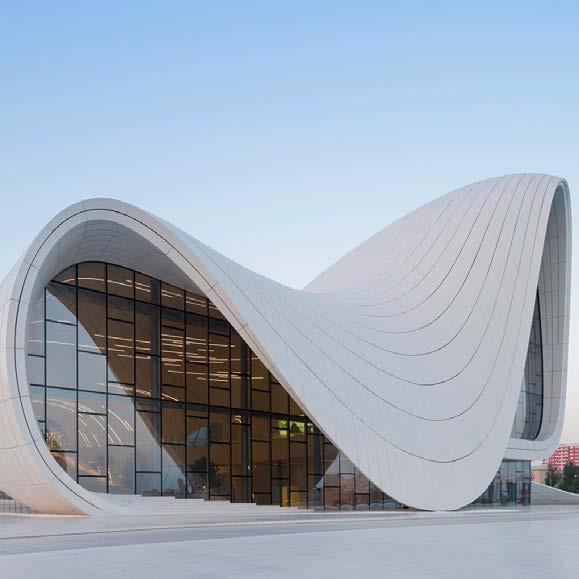 HADID’S HEYDAR ALIYEV CENTERT
HADID’S HEYDAR ALIYEV CENTERT



ZAHA HADID | PAGE 243
HADID’S SOHO GALAXY BUILDING
Born in Oimachi, Tokyo, March, 23, 1910, Akira Kurosawa was born into a Samurai Family. Of his eight siblings, Kurosawa was the youngest. His father encouraged the children to watch films, and Akira saw his first western film when he was six years old. He practiced kendo swordsmanship and calligraphy while growing up as well. Hiego, his older brother of four years took Akira Kurosawa to see the bloody aftermath of the great Kanto earthquake. This would ultimately influence Akira’s blunt unforgiv-
ing storytelling of uncomfortable truths. Akira first found success as a painter, he studied painting at an art school in Japan and found love for traditional western painting. Akira found recognition in filmmaking after many years of assistant work when he directed the film Rashomon. It won the Academy award for best foreign language film in 1951. But his most recognizable film would be Seven Samurai which was released in 1954, it was inspired by early western cowboy films. Kurosawa passed away in 1998,
but is remembered for his ability to capture motion in compositions unlike any other director. He uses the entire frame in his compositions to tell vivid stories. In 1990, the 80-year-old director returned with Dreams, an experimental offering brought to the screen with help from yet another of his admirers, Steven Spielberg. Though the film met with a lukewarm reception, at that year’s Academy Awards Spielberg and Lucas presented Kurosawa with an honorary Oscar by in recognition of his body of work.
AKIRA
KUROSAWA
FILM
DIRECTOR
PAGE 244 | PERSONS OF INTEREST | ISSUE 1

KUROSAWA | PAGE 245
AKIRA KUROSAWA AT AN AWARDS EVENT
AKIRA
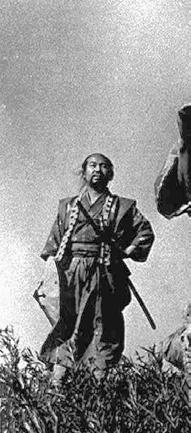

PAGE 246 | PERSONS OF INTEREST | ISSUE 1
KEY ART FOR SEVEN SAMURAI ABOVE, SCREENGRAB FROM THE FILM ON THE RIGHT

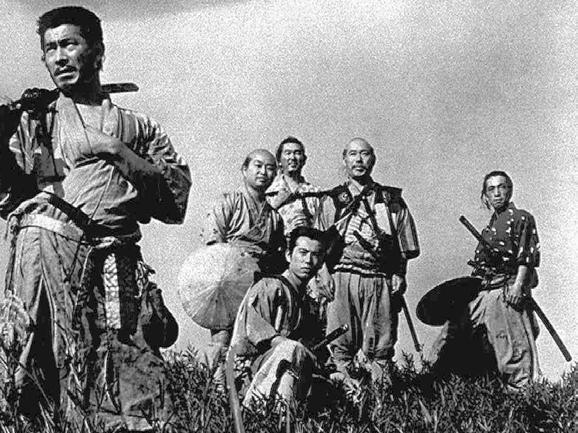
AKIRA KUROSAWA | PAGE 247
Man
is a genius when he dreams. Dream what you are capable of. The harder you dream it, the sooner it will come true
—AKIRA KUROSAWA
PAGE 248 | PERSONS OF INTEREST | ISSUE 1
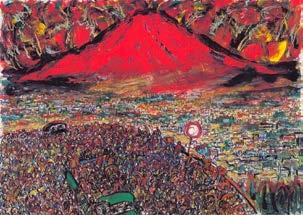

AKIRA KUROSAWA | PAGE 249
AKIRA KUROSAWA DREAM PAINTINGS

SCREENGRAB FROM KUROSAWA’S KAGEMUSHA
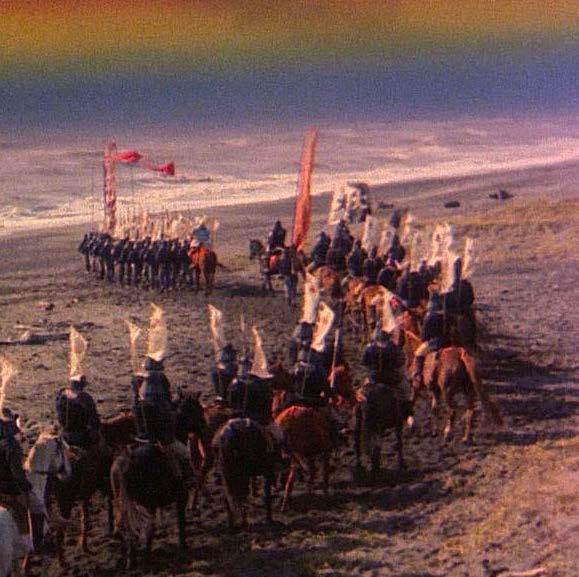
ISAMU NOGUCHI
SCULPUTOR
Isamu Noguchi (1904–1988) was one of the twentieth century’s most important and critically acclaimed sculptors. Through a lifetime of artistic experimentation, he created sculptures, gardens, furniture and lighting designs, ceramics, architecture, landscapes, and set designs. His work, at once subtle and bold, traditional and modern, set a new standard for the reintegration of the arts. After high school he moved to Connecticut to work briefly for the sculptor Gutzon Borglum, and then to New York City to attend Columbia University. While enrolled there as a pre-
medical student, he also began taking evening sculpture classes on New York’s Lower East Side with the sculptor Onorio Ruotolo at the Leonardo da Vinci School of Art. He soon left the university to become an academic sculptor, supporting himself by making his first portrait busts. Returning to New York City as well as traveling extensively in Asia, Mexico, and Europe in the late 1920s through the 1930s, Noguchi survived on portrait sculpture and design commissions, proposed landscape works and playgrounds, and intersected and engaged in collaborations with
a wide range of luminaries. Noguchi’s work was not well-known in the United States until 1940, when he completed a large-scale sculpture symbolizing the freedom of the press, which was commissioned in 1938 for the Associated Press Building in Rockefeller Center, New York City. This was the first of what would eventually become numerous celebrated public works worldwide, ranging from playgrounds to plazas, gardens to fountains, all reflecting his belief in the social significance of sculpture.
PAGE 252 | PERSONS OF INTEREST | ISSUE 1
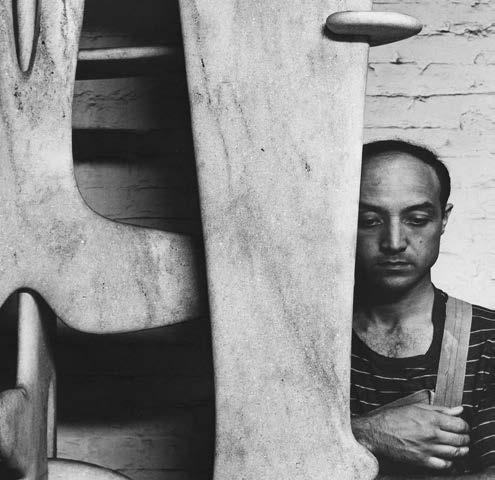
ISAMU NOGUCHI | PAGE 253
NOGUCHI WITH HIS SCULPTURE ‘KOUROS’
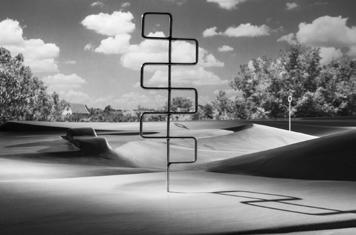
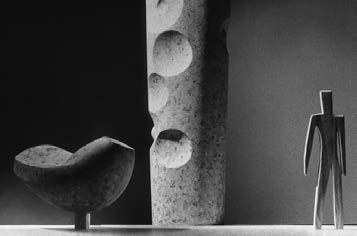
PAGE 254 | PERSONS OF INTEREST | ISSUE 1
NOGUCHI’S MODEL, CIRCA 1956, IN PLASTER AND FAUX GRANITE FOR IDLEWILD AIRPORT
CONTOURED PLAYGROUND


COFFEE TABLE (IN-50) 1944, GLASS, WOOD

The son of composer and musician Carmine Copola, Francis was born in Detroit, Michigan but grew up in Queens, New York, where his family settled shortly after his birth. Coppola entered Hofstra University in 1955 to major in theater arts. He was elected president of the Green Wig, the university’s drama group, and the Kaleidoscopians, its musical comedy club. He then merged the two into the Spectrum Players. Under his leadership, the Spectrum staged a new produc-
tion each week. Coppola won three D.H. Lawrence Awards for theatrical production and direction, and received a Beckerman Award for his outstanding contributions tothe school’s theater arts division. After he won UCLA’s Samuel Goldwyn Award for the best screenplay written by a student, Seven Arts hired Coppola to adapt the late Carson McCullers’s novel Reflections in a Golden Eye as a vehicle for Marlon Brando (who was to star for Coppola later, in The Godfather and
Apocalypse Now).In 1966 Coppola completed his Master of Fine Arts degree at UCLA, and directed his second film, You’re a Big Boy Now, which earned a commercial release and critical acclaim. He then directed the motion picture adaptation of the Broadway musical Finian’s Rainbow, followed by another original work, The Rain People, grand prize winner at the 1970 San SebastianInternational Film Festival.
FRANCIS FORD COPPOLA
PAGE 258 | PERSONS OF INTEREST | ISSUE 1
FILMMAKER

EXCERPT FROM FRANCIS FORD COPPOLA’S NOTES ON THE NOVEL ‘THE GODFATHER’
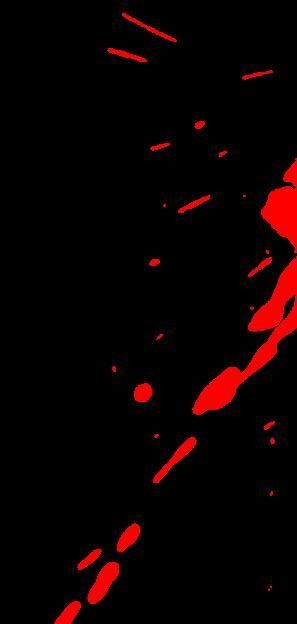

PAGE 260 | PERSONS OF INTEREST | ISSUE 1


I don’t think there’s any artist of any value who doesn’t doubt what they’re doing.
—FRANCIS FORD COPPOLA
SEIDOU KEITA
MALIAN PHOTOGRAPHER
Since his photographs were first seen in the west 30 years ago, Seydou Keïta has been acknowledged as one of the great practitioners of the medium, his work collected and shown by the world’s leading museums. Born circa 1921, Seydou Keïta lived in Bamako, Mali, where from 1948 through the 1950s he ran a successful portrait studio taking pictures of local individuals and families. Essentially self-taught, Keïta developed his trademark style photographing his sitters in daylight against a variety of backdrops from plain drapes
to vibrant African pattern. No matter the situation Keïta had a natural gift and a refined aesthetic that made his portraits distinctive works of art. Technically, his negatives were perfectly exposed and focused. More importantly however, his pictures captured the spirit of his sitters in agenerous manner and in captivating compositions.Unknown outside of Bamako, Keïta was “discovered” by westerners in the early 90’s due to the eye of African Art collector Jean Pigozzi. After seeing two uncredited pictures in a 1992 group show of African
Art, Pigozzi sent his curator André Magnin to Mali to try to locate the un-named artist from Bamako. Magnin found Keïta repairing bicycles and returned to Paris with 921negatives Keïta had buried when the government shut down his studio. Pigozzi then arranged for one of the leading printers in Paris to make archival prints of the images under Keïta’s supervision. In 1994 Keïta was given a solo show at the Fondation Cartier followed by an impressive number of museum shows around the world.
PAGE 262 | PERSONS OF INTEREST | ISSUE 1

SEYDOU KELTA | PAGE 263 SEYDOU KEITA, SELF-PORTRAIT, 1950S, 16 X 12”, SILVER GELATIN PRINT
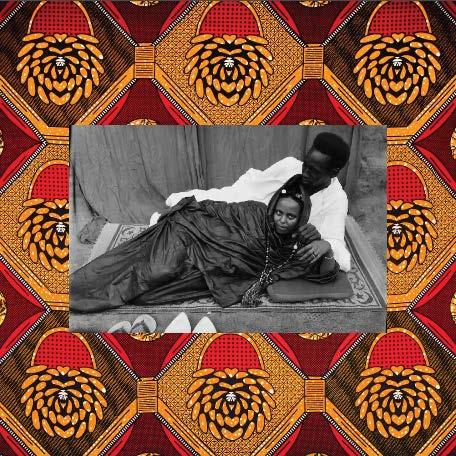
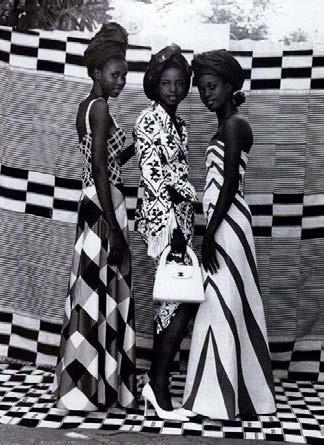
SEYDOU KELTA | PAGE 265 SEYDOU
UNTITILED, 1990S, 16 X 12”,
GELATIN PRINT ; SEYDOU
UNTITILED, 1950S, 60 X 50 CM,
GELATIN PRINT.
KEITA,
SILVER
KEITA,
SILVER
SEYDOU KEITA, FEMALE PORTRAIT, 1949-63, 60 X 50, SILVER GELATINPRINT
SEYDOU KEITA, PORTRAIT (WOLOVE WOMEN), 1977, 60 X 50, SILVER GELATINPRINT
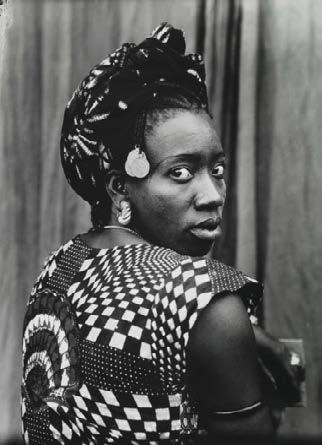
PAGE 266 | PERSONS OF INTEREST | ISSUE 1

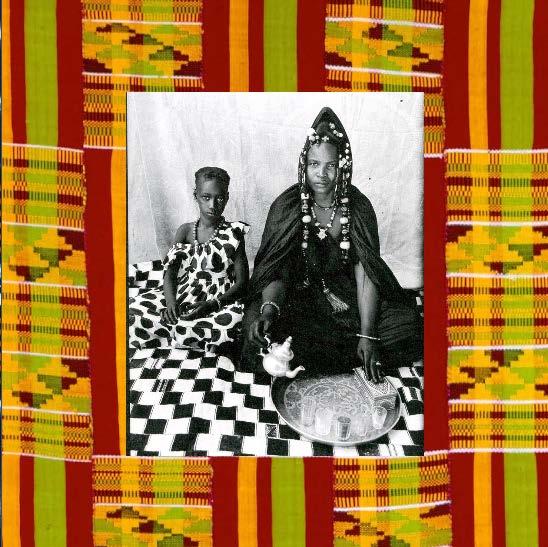
SEYDOU KEITA, UNTITLED PORTRAIT, 1954, 60 X 50 CM, B/W PRINT SEYDOU KEITA, UNTITLED PORTRAIT, 1950, 60 X 50 CM

SEYDOU KELTA | PAGE 269
Diana Vreeland was a FrenchAmerican fashion columnist and editor. She worked for the fashion magazine Harper’s Bazaar and as editor-in-chief at Vogue. In 1962 Vreeland left Harper’s Bazaar and joined the staff of Vogue, of which she became editor in chief in 1963. Under her strong guidance, Vogue soon began to reflect her own taste for the novel, the bizarre, and the outrageous. The youthful and the eccentric were
featured, and the photography and design were calculated to reflect the age of youth culture, rock music, and the overthrow of trad Editorial matter in the magazine often followed her own idiosyncratic style, evident in such statements as “Pink is the navy blue of India.” In particular she created the notion of the “Beautiful People,” a subclass of youthful, wealthy, and footloose members of the less-ex-
clusive international set who were supposed to set the tone of fashion, art, and society. Vreeland was removed as editor in chief of Vogue in 1971, when the heady fashion excesses of the 1960s had passed. Later that year she was named special consultant to the Costume Institute of the Metropolitan Museum of Art (founded in 1937 by Irene Lewisohn).
DIANA
VREELAND
CHIEF EDITOR AT VOGUE
PAGE 270 | PERSONS OF INTEREST | ISSUE 1

PAGE 271
DIANA VREELAND, UNKNOWN, 1970S, GELATIN SILVER PRINT.
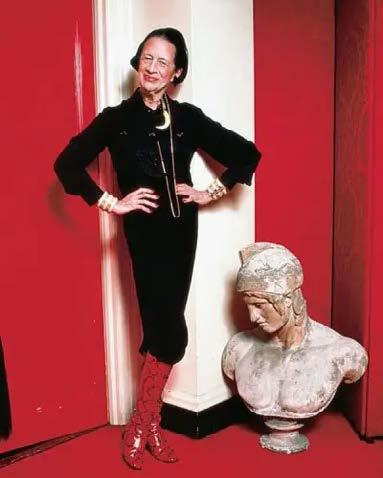
PAGE 272 | PERSONS OF INTEREST | ISSUE 1
UNTITILED PORTRAIT, PHOTOGRPAH IN COLOR UNTITLED, PORTRAIT OF DIANA VREELAND, SILVER GELATIN PRINT
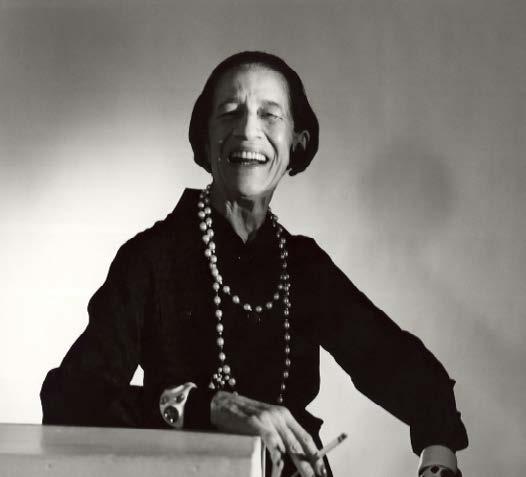
VREELAND | PAGE 273
DIANE
You gotta have style. It helps you get down the stairs. It helps you get up in the morning. It’s a way of life. Without it, you’re nobody. I’m not talking about lots of clothes.
—DIANA VREELAND
PAGE 274 | PERSONS OF INTEREST | ISSUE 1
DIANA VREELAND SHOT BY RICHARD AVEDON, HARPER’S BAZAAR 1946.

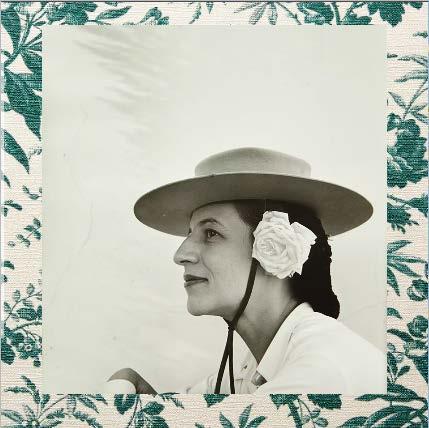
CECILE BURTON, DIANA VREELAND, 1978, SILVER PRINT, 27.6 X 27 CM OUISE DAHL-WOLFE, DIANA VREELAND, 1942, GELATIN SILVER PRINT, 29.2 X 25.1CM
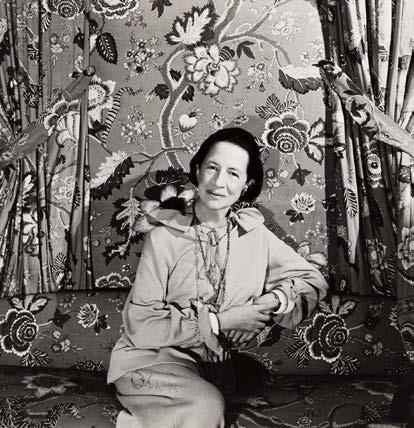
VREELAND | PAGE 277
DIANE
HELEN LEVITT
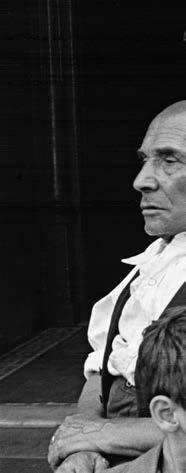
PHOTOGRAPHER | FILMAKER
As a teenager, Levitt wanted to be an artist but felt she “could not draw well.” In 1931, finding high school boring because, as she states, “too many other things in life distracted me,” she dropped out her senior year. She then went to work for a commercial photographer that her mother knew in the Bronx. She worked in the darkroom printing and
developing. From her six dollar a week salary, she saved up enough money to buy a used Voigtlander camera, and began taking black and white photographs of her mother’s friends. Never receiving a formal education, she educated herself by attending exhibitions and reading publications on the work of Ben Shahn.
PAGE 278 | PERSONS OF INTEREST | ISSUE 1

| PAGE 279
HELEN LEVITT
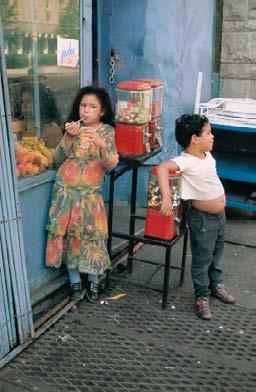

PAGE 280 | PERSONS OF
|
1
INTEREST
ISSUE
NEW YORK 1988, HELEN LEVITT, COLOR PRINT ; NEW YORK 1982, HELEN LEVITT, COLOR PRINT; UNTITLED, HELEN LEVITT, NEW YORK, 1940, B/W PRIN. W
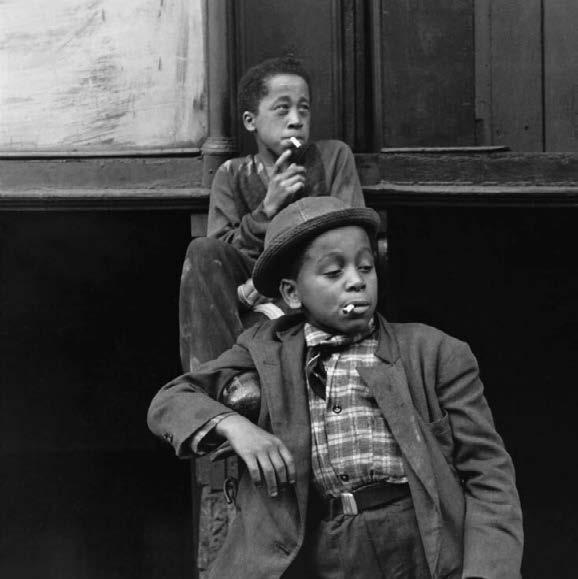

PAGE 282 | PERSONS OF INTEREST | ISSUE 1

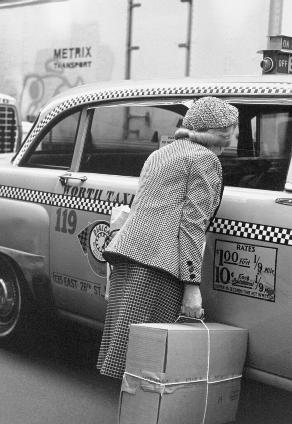
| PAGE 283
HELEN LEVITT
UNTITLED, HELEN LEVITTNEW YORK, 1938, B/W PRINT; NEW YORK,1982, HELEN LEVITT, B/W PRINT
NEW YORK, 1940, HELEN LEVITT, B/W PRINT NEW YORK,1939, HELEN LEVITT, B/W PRINT
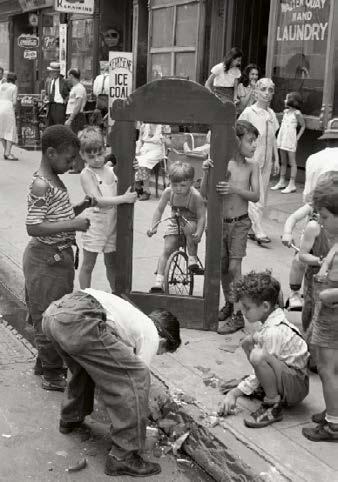
PAGE 284 | PERSONS OF INTEREST | ISSUE 1
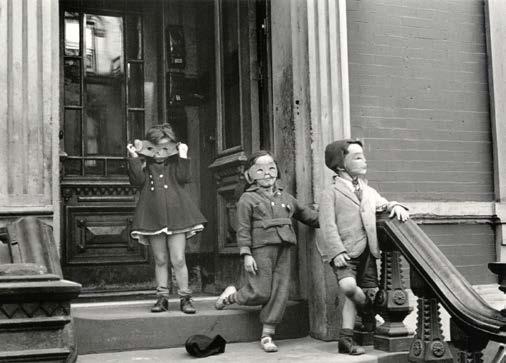
HELEN LEVITT | PAGE 285
GERTRUDE STEIN
AMERICAN NOVELIST
Gertrude Stein was born in Allegheny, Pennsylvania on February 3, 1874 to wealthy German-Jewish immigrants. When Stein was three, her family moved, first to Vienna, and then to Paris. They returned to the U.S. in 1878 and settled in Oakland, California. Her mother, Amelia, died of cancer in 1888 and her father, Daniel, died in 1891. Stein attended Radcliffe College from 1893 to 1897, where
she specialized in psychology under noted psychologist William James. After leaving Radcliffe, she enrolled at Johns Hopkins University, where she studied medicine for four years, leaving in 1901. Stein did not receive a formal degree from either institution. In 1903, Stein moved to Paris with Alice B. Toklas, a younger friend from San Francisco who would remain her partner and
secretary throughout her life.
The couple did not return to the United States for over thirty years. During World War I, they volunteered together, driving supplies to hospitals in France.
Together with Toklas and her brother, Leo, an art critic and painter, Stein took an apartment on the Left Bank.
PAGE 286 | PERSONS OF INTEREST | ISSUE 1
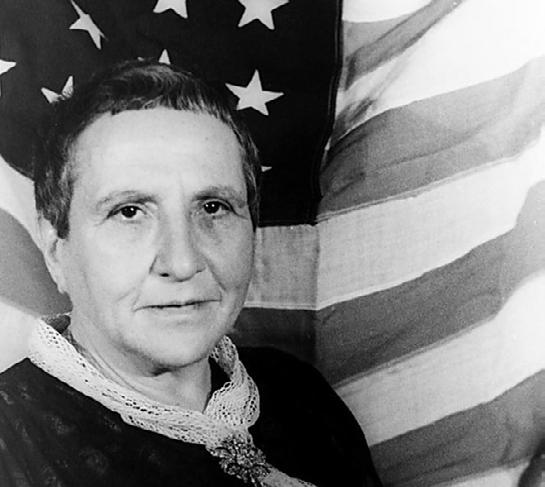
PAGE 287
GERTRUDE STEIN
|
GERTRUDE STEIN, PHOTOGRPAHED BY CARL VAN VECHTEN IN JANUARY 1935
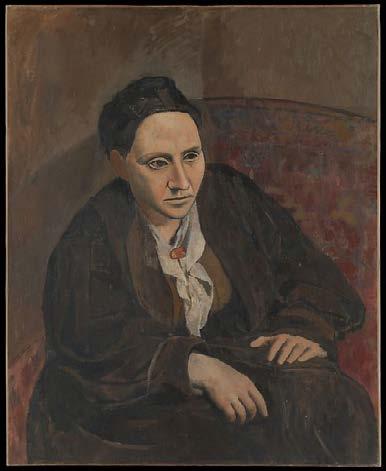
PAGE 288 | PERSONS OF INTEREST | ISSUE 1
PABLO PICASSO PORTRAIT OF GERTRUDE STEIN, OIL ON CANVAS, 1905
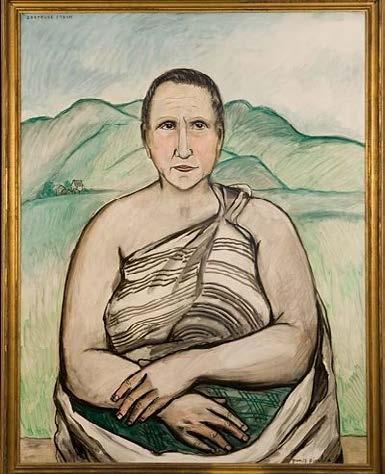
| PAGE 289
GERTRUDE STEIN
FRANCIS PICABIA, PORTRAIT OF GERTRUDE STEIN, OIL ON CANVAS, 1933

PAGE 390 | PERSONS OF INTEREST | ISSUE 1
GERTRUDE STEIN PHOTOGRPAHED BY CARL VAN VECHTEN, JANUARY 1935

GERTRUDE STEIN | PAGE 291
GERTRUDE STEIN AND HER POODLE, BASKET IN PIERRE BALMAIN’S ATELIER
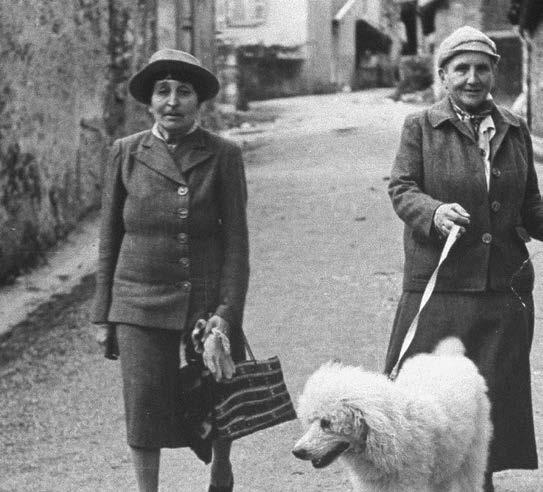
PAGE 292 | PERSONS OF INTEREST | ISSUE 1
GERTRUDE STEIN AND ALICE B. TOKLAS, FRANCE, 1944

GERTRUDE STEIN AND ALICE B. TOKLAS IN THEIR APARTMENT IN PARIS, FRANCE, 1922

GERTRUDE STEIN | PAGE 293
LISETTE MODEL




PHOTOGRAPHER




Lisette Model (born Elise Amelie Felicie Stern; November 10, 1901 – March 30, 1983) was an Austrian-born American photographer primarily known for the frank humanism of her street photography. A prolific photographer in the 1940s and a member of the New-York cooperative Photo League, she was published in PM’s Weekly, Harper’s Bazaar, and US Camera before taking up teaching in 1949 through the
intermediary of Ansel Adams. She continued to photograph and taught at the New School for Social Research in New York from 1951 until her death in 1983 with many notable students, the most famous of whom was Diane Arbus. Her work has been shown in numerous exhibitions and still resides in several permanent collections, including that of the National Gallery of Canada and the J. Paul Getty Museum.
PAGE 294 | PERSONS OF INTEREST | ISSUE 1









PAGE 296 | PERSONS OF INTEREST | ISSUE 1
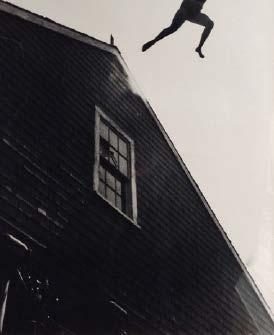
LISETTE MODEL | PAGE 297
Riley was born at Norwood, London, the daughter of a businessman. Her childhood was spent in Cornwall and Lincolnshire. She studied at Goldsmiths’ College from 1949 to 1952, and at the Royal College of Art from 1952 to 1955. She began painting figure subjects in a semi-impressionist manner, then changed to pointillism around 1958, mainly producing landscapes. In 1960 she evolved a style in which she explored the dynamic potentialities of optical phenomena. These so-called ‘Op-art’ pieces, such as Fall, 1963 (Tate Gallery
T00616), produce a disorienting physical effect on the eye.
Riley taught children for two years before joining the Loughborough School of Art, where she initiated a basic design course in 1959. She then taught at Hornsey School of Art, and from 1962 at Croydon School of Art. She worked for the J. Walter Thompson Group advertising agency from 1960, but gave up teaching and advertising agency work in 1963-4.Group shows include Young Contemporaries, London, 1955; Diversion, South London Art Gallery
1958; an Arts Council Touring Exhibition, 1962; Tooth’s Critics Choice Exhibition, selected by Edward Lucie-Smith, 1963; John Moores’ Exhibition, Liverpool, 1963; The New Generation, Whitechapel Gallery 1964; Movement, Hanover Gallery, London, 1964; Painting and Sculpture of a Decade 19541964, Tate Gallery, 1964; and Op Art, touring Ireland in 1967. Her numerous European and American exhibitions include The Sixties Collection Revisited, Aldrich Museum of Contemporary Art, Ridgefield, Connecticut, 1978.
BRIDGET RILEY
PAGE 298 | PERSONS OF INTEREST | ISSUE 1
PAINTER
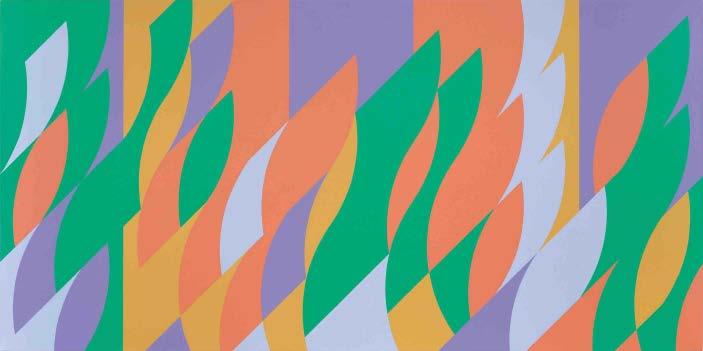
BRIDGET
| PAGE 299
RILEY
BRIDGET RILEY, ‘PAINTING WITH VERTICALS 3’, 2006 © BRIDGET RILEY 2019. PHO -
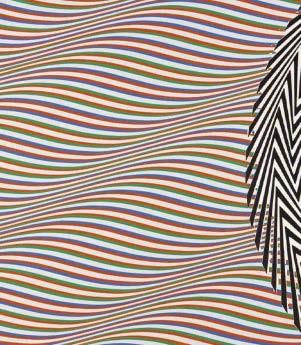
PAGE 50 | PERSONS OF INTEREST | ISSUE 1

BARBARA KRUGER
MULTIMEDIA ARTIST

Barbara Kruger is an American artist that is known for her distinctstyle in graphic design and collage. Having experimented in various aspects of art includingphotography, mixed media, sculpture, and her large interactive installations that include audiovisuals and video. Kruger has created an idiosyncratic style associated with herself. Known for her consistent, declarative font use in Futura Bold and Helvetica Ultra Bold, along with strong diction, Kruger’s work often addresses social constructs of
power, identity, consumerism, and sexuality. Personal pronouns such as “you” and “I” are commonly found in her works as she addresses the audience and brings the viewer into each piece. Her art creates a space where it demands us to question how form our identities within culture through representation of language and image. Kruger’s work has left a large influence in graphic design and has challenged the coercive power of mass media and marketing for decades.
PAGE 302 | PERSONS OF INTEREST | ISSUE 1

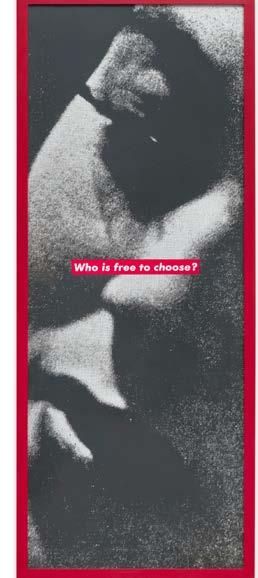 BARBARA KRUGER, UNTITLED (WHO IS FREE TO CHOOSE?), 1990, GELATIN
BARBARA KRUGER, UNTITLED (WHO IS FREE TO CHOOSE?), 1990, GELATIN
| PAGE 303
BARBARA KRUGER
Kruger created the work Untitled (A corpse is not a customer), which appeared in print and online. Kruger has insisted, however, that she does not characterize her work as “political art,” telling Interview in 2013, “I never say I do political art.
Nor do I do feminist art. I’m a woman who’s a feminist, who makes art.”
PAGE 304 | PERSONS OF INTEREST | ISSUE 1

2020
BARBARA KRUGER, UNTITLED (A CORPSE IS NOT A CUSTOMER),
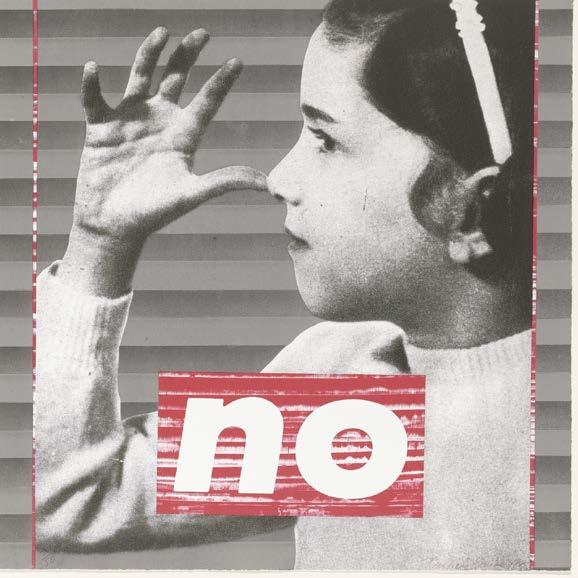
PAGE 316 | PERSONS OF INTEREST | ISSUE 1
 BARBARA KRUGER,YOU ARE NOT YOURSELF 1981
BARBARA
BARBARA KRUGER,YOU ARE NOT YOURSELF 1981
BARBARA
KRUGERUNTITLED (NO) 1985
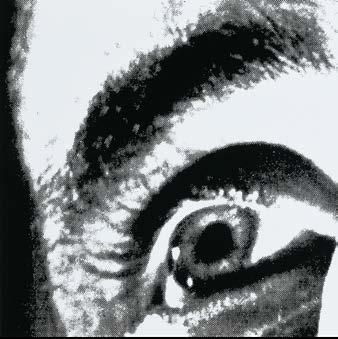

PAGE 308 | PERSONS OF INTEREST | ISSUE 1
KRUGER, SURVEILLANCE IS YOUR BUSYWORK, CA. 1983
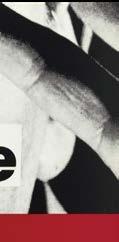

| PAGE 309
BARBARA KRUGER
BARBARA KRUGER,YOU’RE RIGHT (AND YOU KNOW IT AND SO SHOULD EVERYONE ELSE), 2010
BARBARA
SHIRIN NESHAT
PHOTOGRAPHER | VISUAL ARTIST
Shirin Neshat is an Iranian artist who often implenents her identity as an Iranian woman into her art, largely consisting of film, video, and photography. Neshat’s art depicts the contrasts of ideas between Islam and western culture, as well as ideas of feminitiy and masculinity between the two. Shirin came to America in the 70s to study art in Los Angeles just prior to the Iran revolution and did not return until 1990. She began to photograph herself wearing the chador, or veil, and in 1983 Islamic law dictatic the wearing
of chador for women. Her work often examines the physical, emotional, and cultural implications of veiled women in Iran. Neshat’s work has never been shown in Iran as it essentially declares a female presence in a male dominating culture, making it incredibly dangerous as the female gaze becomes a powerful instrument for communication. Neshat also often explores taboos through her art and continues to cross boundaries in artistic expression
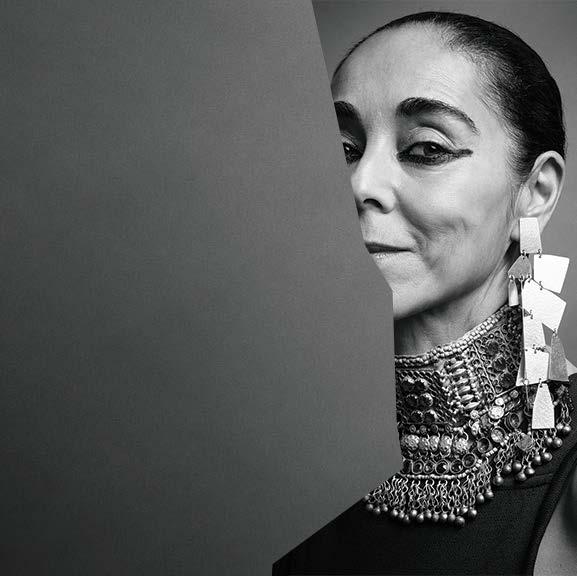
PAGE 310 | PERSONS OF INTEREST | ISSUE 1

SHIRIN NESHAT, FACELESS, WOMEN OF ALLAH SERIES, 1994
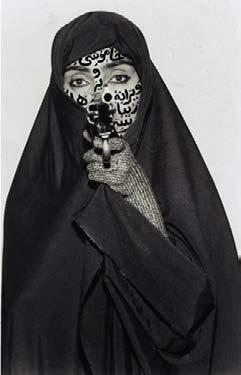
PAGE 312 | PERSONS OF INTEREST | ISSUE 1

| PAGE 313
SHIRIN NESHAT, SPEECHLESS, WOMEN OF ALLAH SERIES 1996 SHIRIN NESHAT
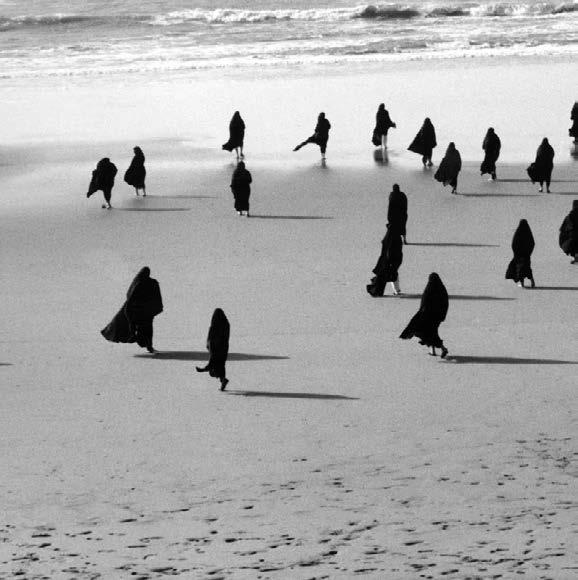
,1999 PAGE 314 | PERSONS OF INTEREST | ISSUE 1
SHIRIN NESHAT, UNTITLED, FROM RAPTURE

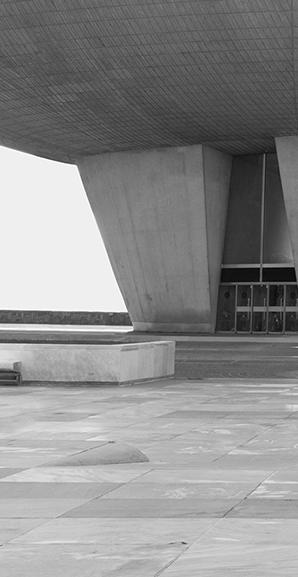
PAGE 316 | PERSONS OF INTEREST | ISSUE 1
SHIRIN NESHAT, UNTITLED, FROM ROJAS SERIES, 2016
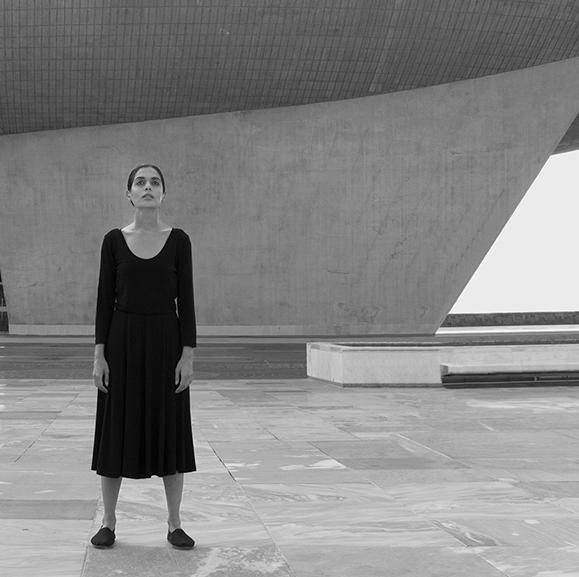
NESHAT | PAGE 317
SHIRIN
ROY DECARAVA
PHOTOGRAPHER
Roy DeCarava was born in New York City’s Harlem neighborhood and has captured the livliness and invigorating forces of culture in the city for decades. Having studied painting for a while, Roy switched the medium to photography as a way of gathering visual information for his paintings however it eventually became his primary means of artistic expression. His photographs encapsulate what it means to be an observer and wanted to form relationships with his subjects that were evident in the photo-
graphs. DeCarava was known for printing his own images, which gave him more control over his aesthetic and style. Roy’s work in Harlem in photographing the lives of the minority and also the large jazz movement happening in mid century has allowed many to take a peek into the untold lives of black neighborhoods in the essence of music and community. His work has been celebrated globally and has produced five published art books that collects sensibility from various aspects of his career.

PAGE 318 | PERSONS OF INTEREST | ISSUE 1

ROY DECARAVA | PAGE 319

PAGE 320 | PERSONS OF
| ISSUE 1
INTEREST
ROY DECARAVA, OLIVER BEENER GROUP #4 ,1956
ROY DECARAVA, COLTRANE ON SPOPRANO, 1963 ROY DECARAVA, MILT JACKSON, 1956
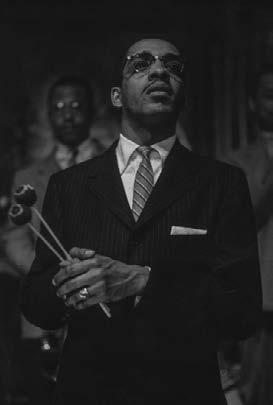
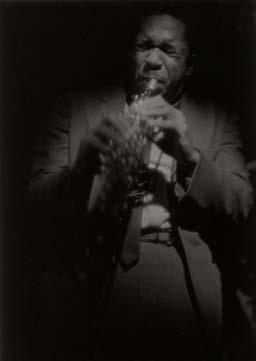
| PAGE 320
ROY DECARAVA

PAGE 322 | PERSONS OF INTEREST | ISSUE 1
ROY DECARAVA, LINGERIE , 1950

ROY DECARAVA | PAGE 323

PAGE 24 324 | PERSONS OF INTEREST | ISSUE 1
ROY DECARAVA, SUN AND SHADE ,1952

ROY DECARAVA | PAGE 325
ROY DECARAVA, MAN COMING UP SUBWAY STAIRS, 1952
DOUG WHEELER
ARTIST
Doug Wheeler is an American artist specializing in creating with form, light, and shape. Pioneer of the so called “Light and Space” movement that flourished in Southern California in the 1960s into the 70s, Doug’s work encapsulates the freeing intrisic feeling of sensory perception as he experiments with the environemt of a piece. He began as a painter and wanted to challenge how an audience interacts with art and how it can fill a space. According to critic and curator John Coplans, Wheeler’s “primary aim as
an artist is to reshape or change the spectator’s perception of the seen world. In short, his medium is not light or new materials or technology, but perception. Wheeler had his first solo exhibition open at the Pasadena Art Museum in 1968 and since has had countless shows globally, including at David Zwirner in New York City and FRAC Lorraine, Metz, France. Douug has been creating light designs for the past 6 decades and continues to reshape the limitations of what art can be.

PAGE 326 | PERSONS OF INTEREST | ISSUE 1

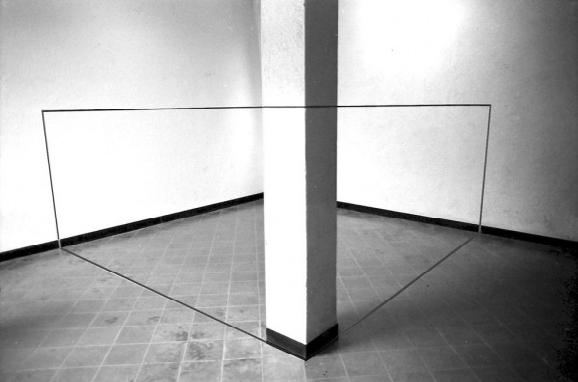
PAGE 328 | PERSONS OF INTEREST | ISSUE 1
DOUG WHEELER, UNTITLED (BOISSANO) , 1981 ,
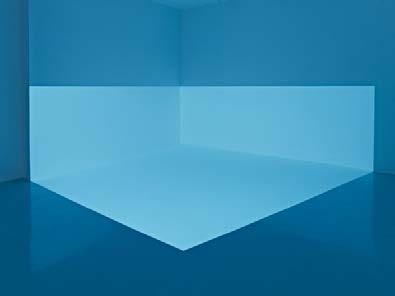
DOUG WHEELER | PAGE 329
DOUG WHEELER, 49 NORD 6 EST POV LUMINIFEROUS LIGHT VOLUME , 2012


PAGE 33O | PERSONS OF INTEREST | ISSUE 1 DOUG WHEELER, 9 NORD 6 EST 68 VEN 12 FL, 2020 DOUG WHEELER, DW 68 VEN MCASD 11, 1968/2011 DOUG WHEELER, RM 669 ,1969

DOUG WHEELER | PAGE 331
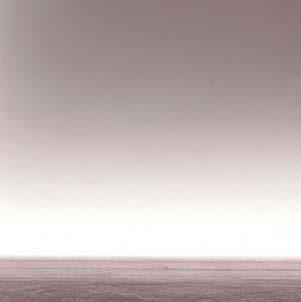
PAGE 32 | PERSONS OF INTEREST | ISSUE 1
DOUG WHEELER, UNTITLED ,1967
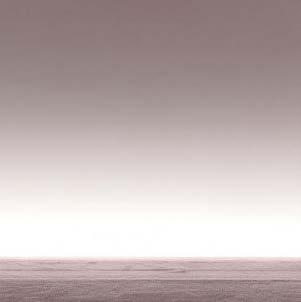
PERSON’S NAME | PAGE 33
Everything that Saul and Elaine Bass—did had a signature look to it. Saul’s very pencil markings were unmistakably his. Whatever they put their hands to had an indelible character—rather like Matisse’s cut-outs—that gave all the work a baseline high standard. You always felt the minds and hands that made the work were there off-camera, just a little out of frame. You don’t want the titles to replicate what you’re going to see in a film or to simply be a trailer. They raise more questions than they answer. Saul was always looking at every film and what it
needed The way they tailor-made the titles to the specifics of each story reflects a design philosophy. Bass’s designs are instantly recognisable, and he was ferociously protective of his creative control. Little surprise he chose to ally himself with the kinds of producer-directors that did their best work independently, far from studio interference. He was equally protective of his legacy, not keen to share credit for his work.
precisely no one when he took to the stage. History has come round to the extent of his second wife Elaine’s role in his career, as Bass biographer Jan-Christopher Horak describes: “Saul was all geometry whereas Elaine introduced curves and undulations, like the glistening water’s surface in Cape Fear (1991), as well as long takes that contrasted with Bass’s montage technique.” It’s largely accepted these days that Elaine was the driving force on the Bass’s later collaborations, particularly his work for Scorsese in the early 1990s.
ELAINE& SAULBASS
PAGE 334 | PERSONS OF INTEREST | ISSUE 1
When he won his only Oscar for the free-form essay film Why Man Creates (1968), in the best documentary short category, he thanked GRAPHIC DESIGN | FILMMAKERS

PERSON’S NAME | PAGE 335 FILM POSTERZ (REJECTED), 1980
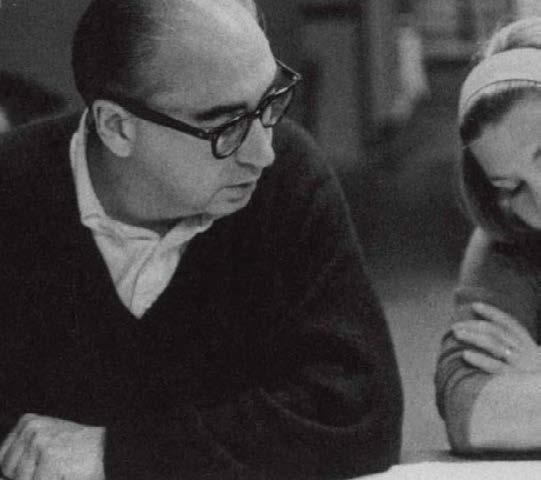
PAGE 336 | PERSONS OF INTEREST | ISSUE 1
My initial thoughts about what a title can do was to set mood and the prime underlying core of the film’s story, to express the story in some metaphorical way. I saw the title as a way of conditioning the audience, so that when the film actually began, viewers would already have an emotional resonance with it.
 —SAUL BASS
—SAUL BASS
ELAINE AND SAUL BASS | PAGE 337
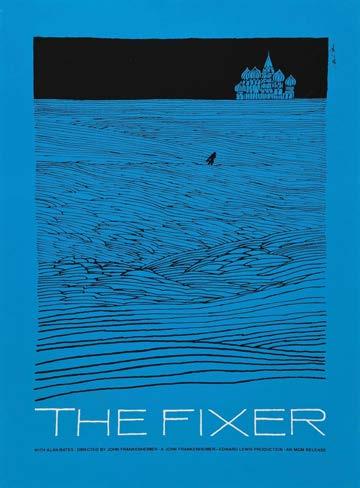
PAGE 338 | PERSONS OF INTEREST | ISSUE 1
LEFT: THE FIXER, 1968 RIGHT: SUCH GOOD FRIENDS 1971
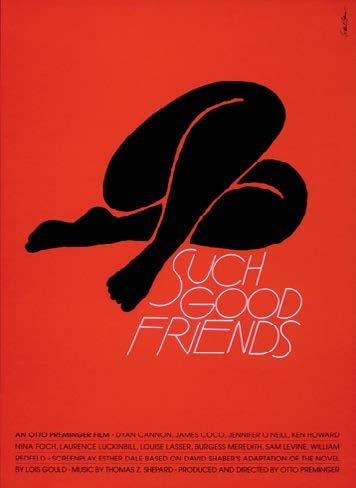
BASS | PAGE 339
ELAINE AND SAUL
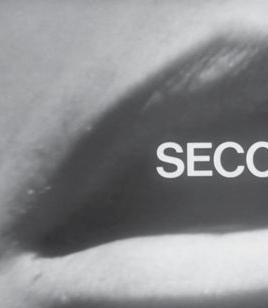

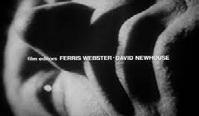

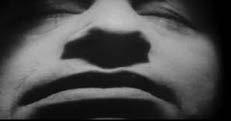
 STILLS FROM SECONDS, 1966
STILLS FROM SECONDS, 1966

TWYLA THARP
DANCER | CHOREOGRAPHER
Twyla Tharp likes surprises, often achieved through swiftly delivered and abandoned contrasts, sometimes contained at once in the same body: the mechanical and lyrical, taut and relaxed, classical and pop culture, serious and comic, simple and insanely complex. She brings this gift, plus her mastery of matrix and foreground, harmony and dissonance, to bear in “Preludes and Fugues,” a painterly work for 12 dancers set to well-curated selections from the two volumes of Bach’s “The Well-Tempered Clavier,” mining
its various dynamics and moods. Though “Preludes” starts slowly, it rivets attention in the fourth section of 22. Set to melancholy music, it features what seems a troubled couple: plangent longtime Tharp dancer Rika Okamoto and springy gent Daniel Baker. In the cultural ferment of New York in the 1960s, most young artists felt challenged to test the boundaries of their media. Twyla Tharp’s work fused classical discipline and rigor with avant-garde iconoclasm, combining ballet technique with natural movements like running,
walking and skipping. While modern dance had historically aspired to high seriousness and spirituality, Tharp’s work was humorous and edgy. She worked less often with contemporary avant-garde music than with classical music, pop songs, a clicking metronome, or silence. Always, the choreography was dynamic, unpredictable and underpinned by an unusually thorough musical intelligence. This became apparent to critics and audiences alike with her 1971 piece, The Fugue.
PAGE 342 | PERSONS OF INTEREST | ISSUE 1
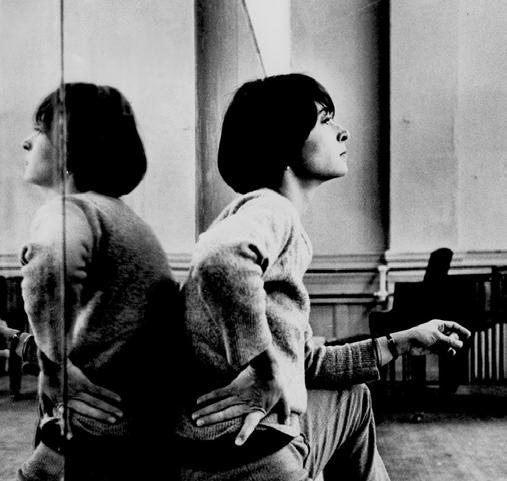
| PAGE 343
TWLA THARPE
IMAGE TWYLA THARPE BY GJON MIILI, 2014


TWLA THARPE | PAGE 345
LEFT: IN THE UPPER ROOM REVISITATION, 2021 RIGHT: MIKHAIL BARYSHNIKOV & TWYLA THARP 2012
Nobody worked harder than Mozart. By the time he was twenty-eight years old, his hands were deformed because of all the hours he had spent practicing, performing, and gripping a quill pen to compose. That’s the missing element in the popular portrait of Mozart.
 —TWYLA THARPE
—TWYLA THARPE
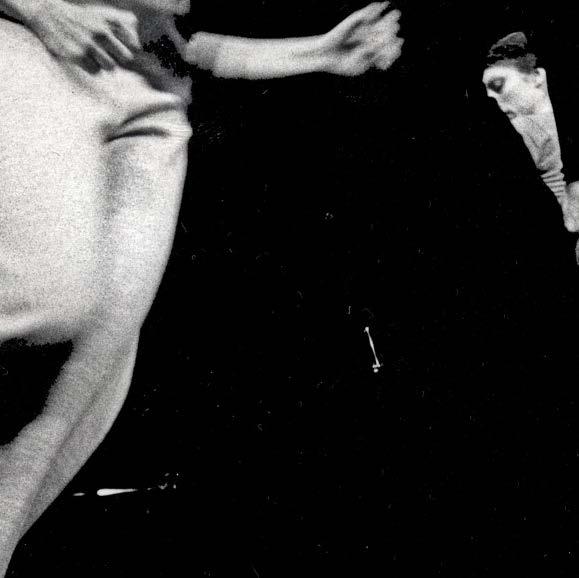
IMAGE THE FUGUE REVISITED, 2017
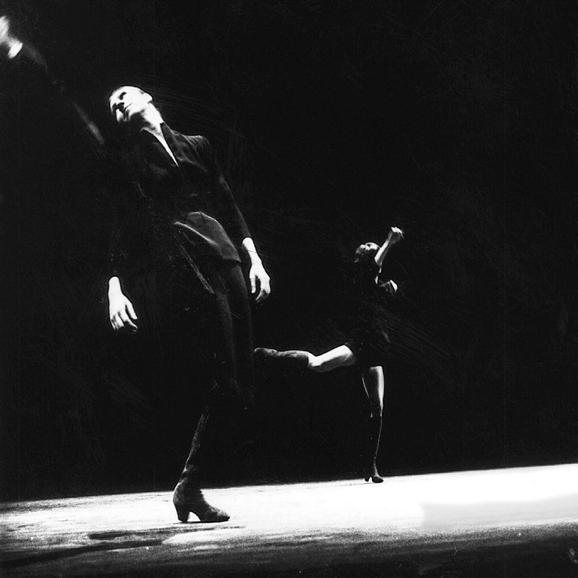
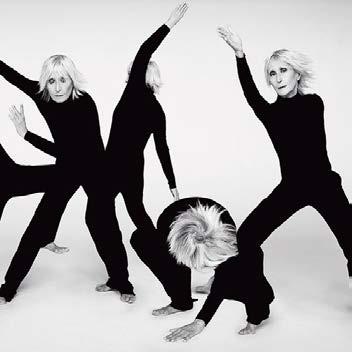

TWLA THARPE | PAGE 349
LEFT: MINIMALISM AND ME , 2017 RIGHT: TWYLA THARPE 50TH ANNIVERSARY, 2015
GILLES PERESS





PHOTOGRAPHER
Gilles Peress is a French photographer and a member of Magnum Photos. Peress began working with photography in 1970, having previously studied political science and philosophy in Paris. One of Peress’ first projects examined immigration in Europe, and he has since documented events in Northern Ireland, Lebanon, Palestine, Iran, the Balkans, Rwanda, the U.S., Afghanistan, and Iraq. His project, Hate Thy Brother, a cycle of documentary narratives, looks at intolerance and the re-emergence of nationalism throughout the world and its consequences. Peress’ books include Telex Iran; The Silence: Rwanda; Farewell to Bosnia; The Graves: Srebreni-
ca and Vukovar; A Village Destroyed; and Haines. Gilles Peress’s photography demonstrates his uncommon ability to navigate and communicate the atmosphere and urgency of volatile political environments. While his early work identified him as a “concerned photographer,” his more recent work suggests an increasing concern with form and a more obvious sense of subjectivity. In this respect, Peress’s photographs echo the photojournalism of Henri Cartier-Bresson, whose conflation of aesthetics and reportage set the precedent for artistic photojournalism earlier in the century.
PAGE 350 | PERSONS OF INTEREST | ISSUE 1





| PAGE 351
GILLES PERESS
PRO-SHARVATMADARI, FROM THE “TELEX IRAN IN THE NAME OF THE REVOLUTION” SERIES, 1980
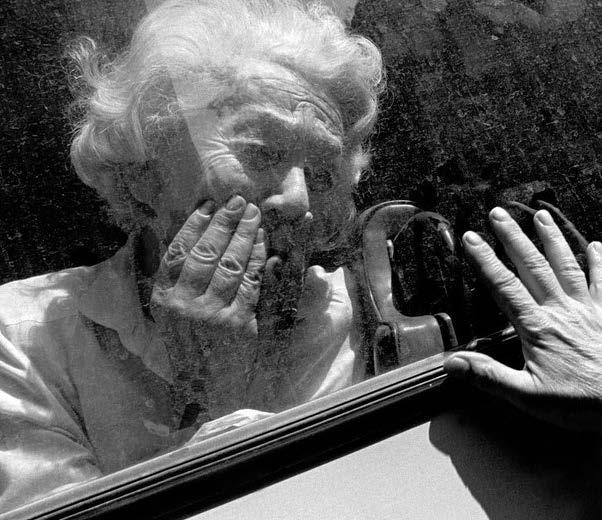
Telex Iran is an extraordinarily personal document of a public event. The photographs
Gilles Peress took over a five-week period during 1979-1980 focus on the seizure of the American embassy and a number of hostages in Tehran by student proxy groups of the new Iranian regime. However, the book forms neither a study nor an analysis of that singular event. Peress’ photographs do not purport to tell the story – any story – but are the nearly seismographic record of the photojournalist’s perceptions, encounters, and not least, his emotions as he moves through the city and the countryside of a nation in upheaval.
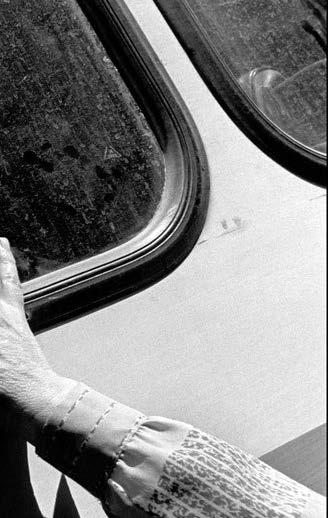
GILLES PERESS | PAGE 353
FAREWELL TO BOSNIA DEPARTURE OF JEWS IN SKANDERIA. SARAJEVO, BOSNIA AND HERZEGOVINA, 1993
 LEFT: PHOTOGRAPH BLOODY SUNDAY, 1972 RIGHT: SERIES OF PHOTOGRAPHS BY GILLES PERESS 1970-85
LEFT: PHOTOGRAPH BLOODY SUNDAY, 1972 RIGHT: SERIES OF PHOTOGRAPHS BY GILLES PERESS 1970-85

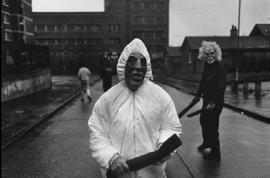

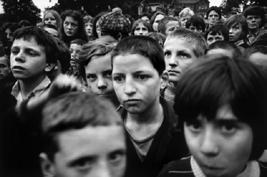
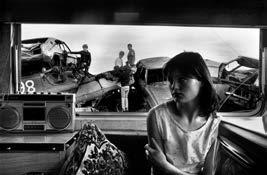
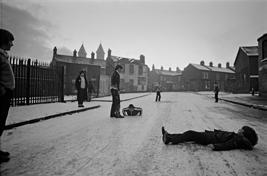
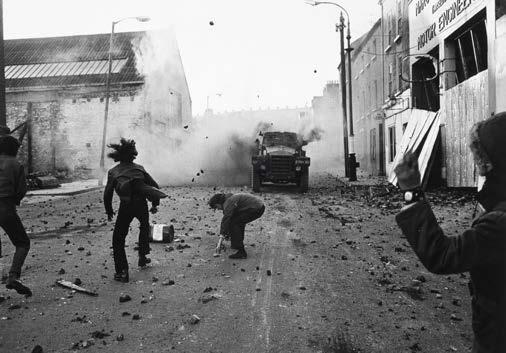
PAGE 356 | PERSONS OF INTEREST | ISSUE 1
LEFT: SERIES OF PROTEST INORTHER ISLAND 1984 RIGHT: NORTHERN IRLAND 1984

GILLES PERESS | PAGE 357

PAGE 358 | PERSONS OF INTEREST | ISSUE 1
Stepanova with her husband Alexander Rodchenko in the 1920s
VARVARA STEPANOVA
GRAPHIC DESIGNER
Before heading the textile design course at the Vkhutemas art school, Stepanova had spent a year working at Tsindel, the state textile factory, producing over 150 designs. Unfortunately, due to wartime shortages and the complexity of her visions, many of these would never be realised, but her work lives on. It is from her pioneering designs and radical reimagining of clothes and the body that our own contemporary approach to sportswear and
streetwear has been created: the technologically innovative fabrics and bold use of colour and pattern that dominate Western fashion shows today –having been forged among the passions, ideals and dynamism of the early Soviet years. Her work shows great personal creativity. By using vibrant color, and striking images in a dynamic composition, she pioneered photomontage and revolutionized the way we now understand photography.Historical
hindsight can make it difficult for contemporary viewers to engage the overtly propagandistic aspects of these images, in fact their exaggerated euphoria can even be mistaken for irony. Nevertheless, despite our increasingly sophisticated understanding of the distinction between image and reality, Stepanova’s photomontages are an important reminder of how an artist can blur the line between aesthetic passion and ideology.
VARVARA STEPANOVA | PAGE 359

PAGE 360 | PERSONS OF INTEREST | ISSUE 1
LEFT: THROUGH RED AND WHITE GLASSES, 1924 RIGHT: SET PIECES THE DEATH OF TARALKIN, 1922 AND SET DESIGN FOR AN EVENING OF THE BOOK, 1924


VARVARA STEPANOVA | PAGE 361

PAGE 362 | PERSONS OF INTEREST | ISSUE 1
LEFT:
CONSTRUCTIVIST CLOTHING LINE 1920 RIGHT: CONSTRUCTIVIST CLOTHING LINE 1920
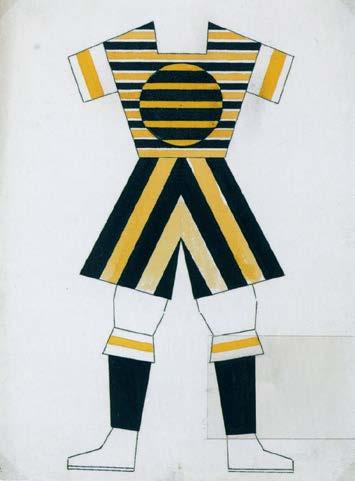
VARVARA STEPANOVA | PAGE 363
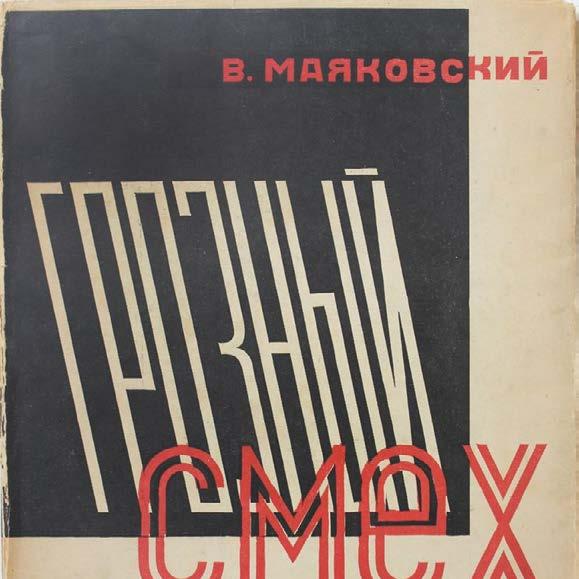

VARVARA STEPANOVA | PAGE 365
LEFT:
VARVARA STEPANOVA & MAYAKOVSKY’S COLLABORATION ‘THE ROSTA WINDOW.’ 1932 RIGHT: PHOTOMONTAGE ‘Beready!’, 1932
CAMILLE WALALA

DESIGNER
Camille Walala is a French multidisciplinary artist whose practice is currently rooted in London. Best known for her larger than life public interventions with her signature “tribal pop” aesthe tic, Walala’s explosively colorful “public interventions” can be anything from full-facade murals, immersive 3D installations, street art, interiors, and set design. Her work, largely influenced by the memphis movement, the Ndebele tribe and
optical art master Vasarely, has garnered her international success, and her body of work reaches to all corners of the world. A graduate in textile design from the University of Brighton, Camille established her design brand Walala in London with the mantra “the bigger the better.” Her designs can either live on the floor (as a rug or bathmat), or ascend 130 feet in the area on the facade of a Brooklyn Building for the whole world to enjoy.
PAGE 366 | PERSONS OF INTEREST | ISSUE 1

CAMILLE WALALA | PAGE 367
PUTTING THINGS IN PERSPECTIVE BY CAMILLE WALALA, THE BOX, PLYMOUTH, 2022
PAGE 4 | PERSONS OF INTEREST | ISSUE 1 368 | PERSONS OF INTEREST | ISSUE 1
I first remember reading these books on Memphis designs shortly after graduating; it was a moment of hysterical joy. They encapsulated so much of what I love about design and art.
MEMPHIS PRODUCTS, 1981
—CAMILLE WALALA
VARIOUS

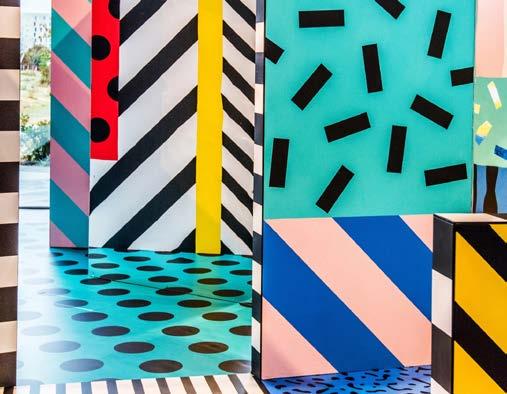
PAGE 370 | PERSONS OF INTEREST | ISSUE 1 WALALA X PLAY, 2017
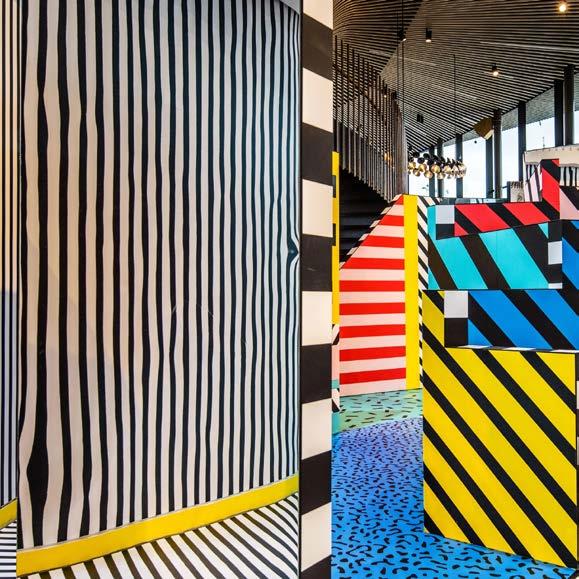


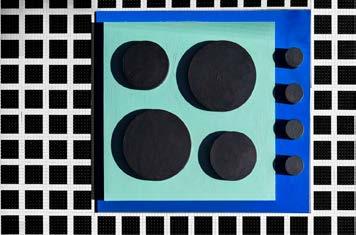
CAMILLE WALALA | PAGE 373 WALALA X LEGO, 2020
RICHARD SERRA

ARTIST
Richard Serra is a world-renowned American artist, known primarily for his site-specific massive scale architectural sculptures which explore the relationship between the viewer, the work, and the site. The visual aesthetic of his work is both austere yet playful. His materials are often industrial, tinged by decay and the feeling of rot, yet their shape feels so fluid and organic, almost disorienting. His works are experienced through interaction with the work which usually towers
above the viewer. Some are like the rusted slices of an iron wave, others are like fluid labyrinths in a spiral shape. “I consider space to be a material. The articulation of space has come to take precedence over other concerns. I attempt to use sculptural form to make space distinct.” He has been a practicing artist since the mid 60s and has undoubtedly cemented himself as one of the most influential sculpture artists of our age.
PAGE 374 | PERSONS OF INTEREST | ISSUE 1
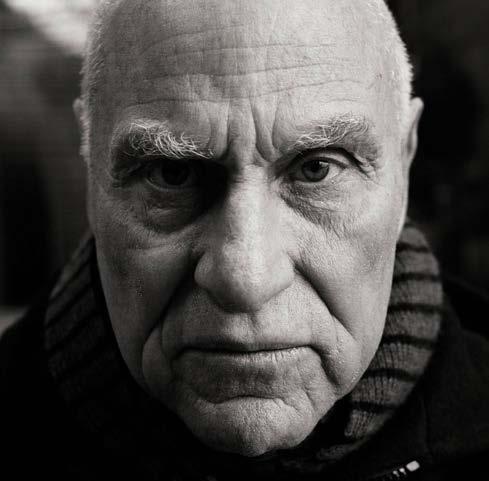
RICHARD SERRA | PAGE 375
RICHARD SERRA
Drawing is a verb.
-RICHARD SERRA
Crutial to the development of his early practice, Verb List lays the groundwork for his philosophy as both a scupltor and as an artist in general. Despite being a paper-based work, the scope of this piece spans across all media he explores. Much of Serra’s work can only accurately be articulated through verbs, desbribing the way his sculpures might “twist, bend, or tilt.” This work gives us insight onto the conceptual and performative levels of Serra’s goals as an artist.
PAGE 376 | PERSONS OF INTEREST | ISSUE 1

RICHARD SERRA | PAGE 377
VERB LIST, 1967

PAGE 378 | PERSONS OF INTEREST | ISSUE 1
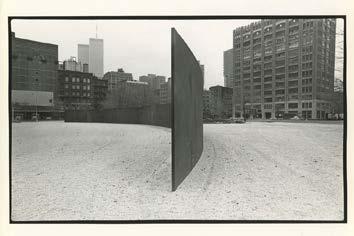

RICHARD SERRA | PAGE 379
ST. JOHN’S ROTARY ARC, 1975

PAGE 380 | PERSONS OF INTEREST | ISSUE 1 TO ENCIRCLE BASE PLATE
RIGHT
INVERTED, 1970
HEXAGRAM,
ANGLES

Alexander Rodchenko was a prolific Russian artist with a versatile practice spanning across sculpture, illustration, graphic design, and photography. He is credited as being one of the fathers of the constructivist art movement, which sought to reflect the modern industrial society with its abstract austerity. He began his artistic life as a painter, heavily influenced by the
cubist sensibilities of form and color, and often only a compass and ruler in an attempt to eliminate overly expressive brushstrokes. In the 1920s, as a member of the Productivist group, he moved from painting to graphic design, creating books, posters and advertisements. He soon also took to the camera, creating a body of work that was highly documentary in nature, often
opposing the painterly aesthetic of other prominent photographers of the era. His compositions were marked by sharp angles, framing the world from extremes of high and low. He embraced its potential for social commentary, documenting the disparity between the idealized and Soviet experience and the realities of those around him.
ALEXANDER
RODCHENKO
GRAPHIC DESIGN | PHOTOGRAPHY
PAGE 382 | PERSONS OF INTEREST | ISSUE 1
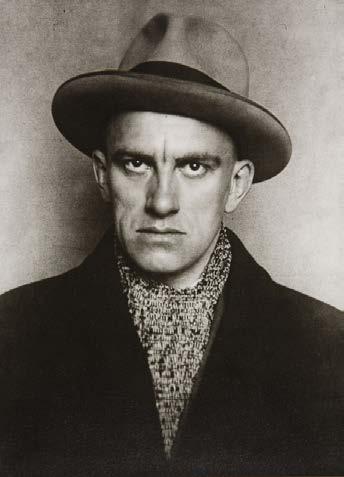
ALEXANDER RODCHENKO | PAGE 383
ALEXANDER RODCHENKO

PAGE 384 | PERSONS
| ISSUE 1
OF INTEREST
THE END OF PAINTING, 1921
-RODCHENKO
ALEXANDER RODCHENKO | PAGE 385
I reduced painting to its logical conclusion and exhibited three canvases: red, blue and yellow. I affirmed: It’s all over.

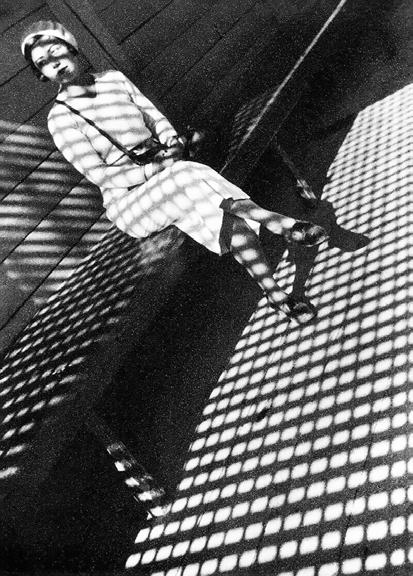 PORTRAIT OF THE ARTIST’S MOTHER 1924 GIRL WITH LEICA, 1934
PORTRAIT OF THE ARTIST’S MOTHER 1924 GIRL WITH LEICA, 1934
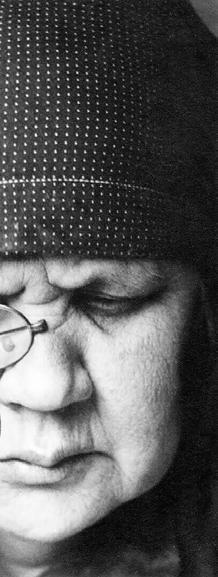
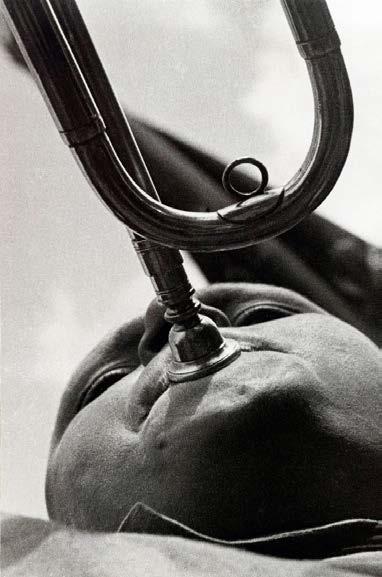

SPATIAL CONSTRUCTION NO. 12, 1920
-RODCHENKO

ALEXANDER RODCHENKO | PAGE 389 DOBROLET ADVERTISEMENT, 1923
We created a new understanding of beauty, and enlarged the concept of art.
JOHN COHEN
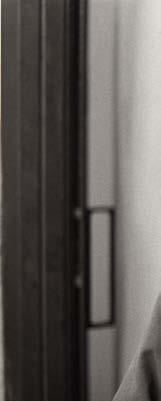
PHOTOGRAPHER | MUSICIAN
John Cohen was a photographer and musician born in Queens, New York in the early 1930s. A natural born artist, he grew up playing the guitar and banjo, eventually going to Yale University to study painting, where he met Tom Paley. The two moved back to New York after graduation, forming the New Lost City Ramblers, which was largely influenced by rural string bands from
the early 20’s and 30’s. During his time at Yale university, Cohen learned about peruvian weaving techniques in an archeology class. Inspired by this, he traveled there in the 1950’s to write his masters thesis on the subject. Cohen became a talented portrait photographer and filmmaker, capturing the flourishing underground art and music scene at the time.
PAGE 390 | PERSONS OF INTEREST | ISSUE 1

| PAGE 391
JOHN COHEN
JOHN COHEN
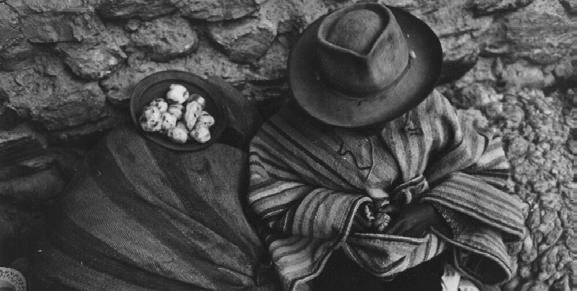
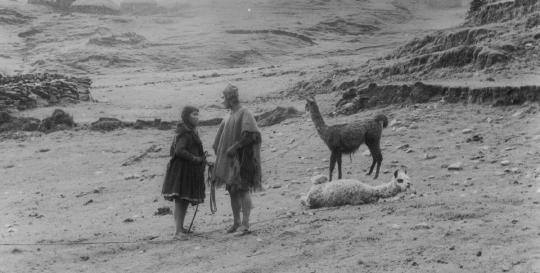
Before he became known for his portraits of the New York City underground art scene, Cohen was
developing his body of work as a documentary photography in Peru during his thesis at Yale. While

there, he studied the techiques of local musicians and captured field recordings of their performances.
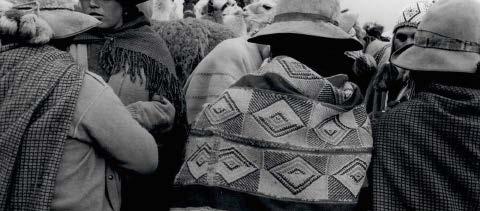
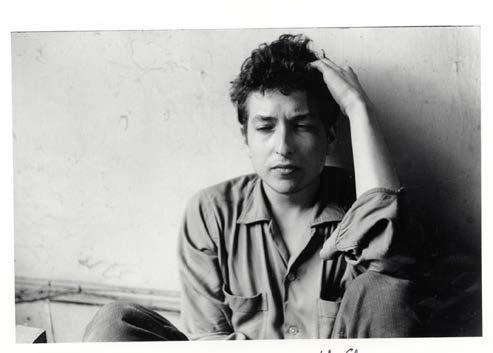
PAGE 394 | PERSONS OF INTEREST | ISSUE 1
BOB DYLAN, 1962
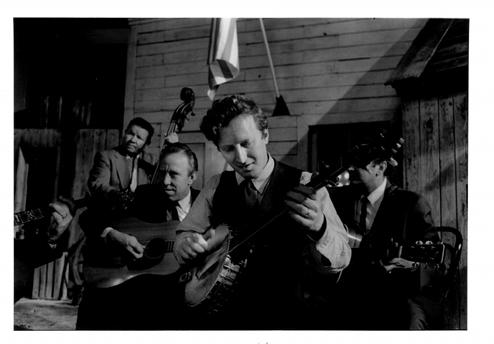
| PAGE 395
JOHN COHN
CHICK STERLIN, GEROGE SHUFFLER, JOHN COHEN, 1962
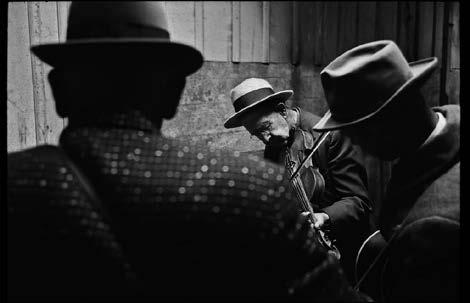
PAGE 32 | PERSONS OF INTEREST | ISSUE 1 PAGE 396 | PERSONS OF INTEREST | ISSUE 1 GALAX, VIRGINIA, 1961
GALAX, VIRGINIA, 1961
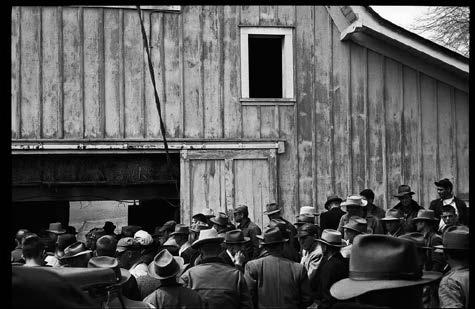
PERSON’S NAME | PAGE 33 JOHN COHEN | PAGE 397
Considered one of Mexico’s greatest artists, Frida Kahlo was born on July 6, 1907, in Coyocoan, Mexico City, Mexico. As a child, she suffered a bout of polio that left her with a slight limp, a chronic ailment she would endure throughout her life. In 1925 Kahlo was involved in a bus accident, which so seriously injured her that she had to undergo more than 30 medical operations in


her lifetime. During her slow recovery, Kahlo taught herself to paint, and she frequently read, studying the art of the Old Masters. In addition to her work, Kahlo was known for her tumultuous relationship with muralist Diego Rivera. Soon after marrying Rivera in 1929, Kahlo changed her personal and painting style. She began to wear the traditional Tehuana dress that became her trademark.
It consisted of a flowered headdress, a loose blouse, gold jewelry, and a long ruffled skirt. She is a Mexican Painter best known for her uncompromising and brilliantly coloured selfportraits that deal with themes such as identity, the human body, and death. Although she denied the connection, she is often identified as a Surrealist.
PAGE 34 | PERSONS OF INTEREST | ISSUE 1
PAGE 398 | PERSONS OF INTEREST | ISSUE 1
SURREALIST/PAINTER
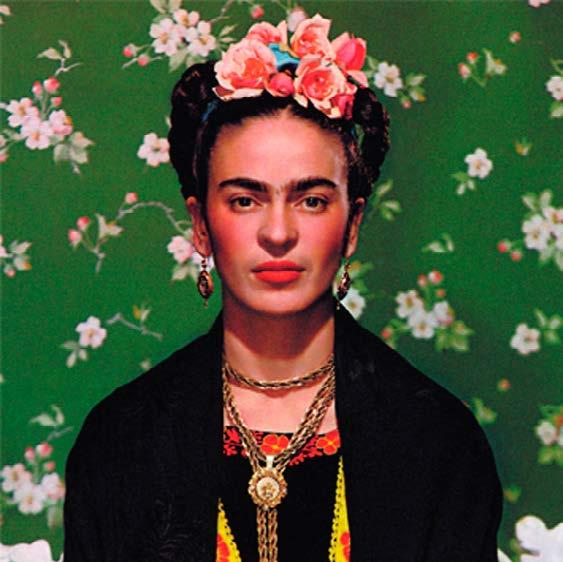

PAGE 400 | PERSONS OF INTEREST | ISSUE 1
SELF PORTRAIT WITH THORN NECKLACE AND HUMMINGBIRD, FRIDA KHALO, 1940
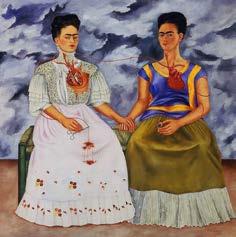
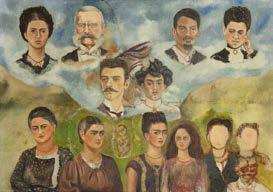

 THE TWO FRIDAS, FRIDA KHALO, 1939
PORTRAIT OF FRIDA’S FAMILY, FRIDA KHALO, 1940
ME AND MY PARROTS, FRIDA KHALO, 1941
MY NURSE AND I, FRIDA KHALO, 1937
THE TWO FRIDAS, FRIDA KHALO, 1939
PORTRAIT OF FRIDA’S FAMILY, FRIDA KHALO, 1940
ME AND MY PARROTS, FRIDA KHALO, 1941
MY NURSE AND I, FRIDA KHALO, 1937
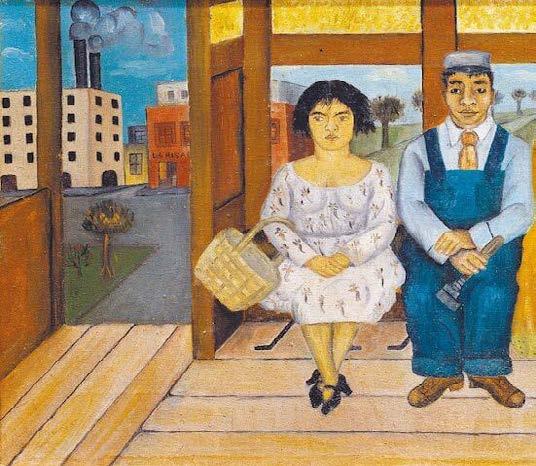
PAGE 402 | PERSONS OF INTEREST | ISSUE 1

FRIDA KHALO | PAGE 403 THE BUS, FRIDA KHAL0,1929

PAGE 404 | PERSONS OF INTEREST | ISSUE 1
THE WOUNDED DEER, FRIDA KHALO, 1946
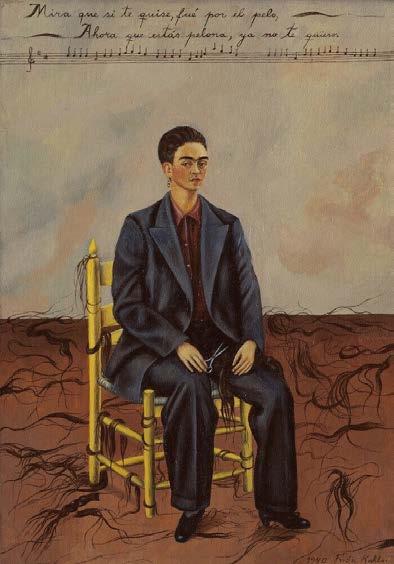
FRIDA KHALO | PAGE 405
Working during the heyday of Abstract Expressionism, John Cage honed his skills amid the growing American avantgarde. Neither a painter nor a sculptor, Cage is best known for revolutionizing music by incorporating unconventional instrumentation and the idea of environmental music dictated by chance. His approach to composition was deeply influenced by Asian philosophies, focusing on harmony in nature and elements of chance. Cage is famous not only for his radical works, like 4’33” (1952), in which the ambient noise of the
recital hall created the music but also for his innovative collaborations with artists like Merce Cunningham and Robert Rauschenberg. These partnerships helped break down the divisions between the various realms of art production, such as music, performance, painting, and dance, allowing for new interdisciplinary work. Cage’s influence in groundbreaking stylistic developments key to contemporary art. It paved the way for postmodern artistic inquiries, which began in the late 1960s and further challenged the established definition of fine art.
JOHN CAGE

PAGE 406 | PERSONS OF INTEREST | ISSUE 1
COMPOSER/MUSICIAN
2013
SOLO FOR PIANO P.21, JOHN CAGE,

His most famous piece:
4’33”
PAGE 410 | PERSONS OF INTEREST | ISSUE 1
of silence
Cage conceived the piece in 1948, when he gave it the working title “Silent Prayer.” The work’s manuscript declared that it was written “for any instrument or combination of instruments.”
After its first performance, It quickly became one of the most controversial musical works of the 20th century because it consisted of silence or, more precisely, ambient sound—what Cage called “the absence of intended sounds.”
CAGE | PAGE 411
JOHN
4’33”,
JOHN CAGE, COMPOSED 1952
SONATAS &


Number 1 Number 2 Number 3

PAGE 412 | PERSONS OF INTEREST | ISSUE 1
INTERLUDES

The Sonatas and Interludes are Cage’s prepared piano masterwork. Created in 1946–48 after the composer had been introduced to Indigenous visual and performing arts, the cycle was intended to represent the so-called permanent emotions— the heroic, the erotic, the wondrous, the comic, sorrow, fear, anger, and the odious—at the heart of Indian aesthetic theory and their movement toward tranquility.
1946-1948

Number 4
Number 5
JOHN CAGE | PAGE 413
Sonatas & Interludes for Prepared Piano, John Cage, Composed
Cheap Imitation
Cheap Imitation is a work for piano derived from a 1918 dramatic composition by Erik Satie entitled Socrate, itself originally conceived for voice and orchestra. He wished to complete his transcription of the song, but was forbidden by the Publisher. To bypass the copyright problem, he modified the piece so that it has the same phrasing, rhythms, and even some of the general contours of Satie’s music, but which is otherwise completely distinct.


PAGE 414 | PERSONS OF INTEREST | ISSUE 1
Cheap Imitations, John Cage, Composed1969
Variations is a series of works by the American composer John Cage. A number of the pieces in the series are seminal examples of indeterminate music, others are happenings: performance pieces executed according to the score.


Variations 1 Variations 2
PERSON’S NAME | PAGE
49
Variations 1&2, John Cage, Composed1959, 1961
BERENICE ABBOTT
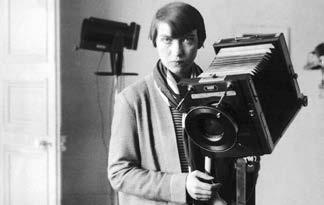

PHOTOGRAPHER
Berenice Abbott an American photographer known for her portraits and documentary photographs which stressed the communicative, educational value of photographic print. She pursued a realist vision in recording history and her own historical experience in order to potentially affect change in her audience. Her photographs facilitated the interaction and dialogue between the photographer, the photographic print, and the viewer. Abbott’s realist approach to photography stems from her career as a portrait photographer in Paris as well as the influence of Eugène Atget’s
photographic realism. After eight years in Paris, Abbott moved to New York in 1929 to document the modern transformation of the city. The book Changing New York (1935-1938) received critical acclaim and has continued to resonate to this day.
PAGE 416 | PERSONS OF INTEREST | ISSUE 1
 BEHAVIOR OF WAVES, BERENICE ABBOTT, 1962
BEHAVIOR OF WAVES, BERENICE ABBOTT, 1962
WEST STREET, BERENICE ABBOTT, 1938, ARIEL VIEW OF NEW YORK (RIGHT), BERENICE ABBOTT, 1936 AUTOMAT (TOP RIGHT), 977 EIGHTH AVE, NY, BERENICE ABBOTT, 1936 EL (BOTTOM RIGHT), 2ND AND 3RD AVE. LINES, BERENICE ABBOTT, 1936
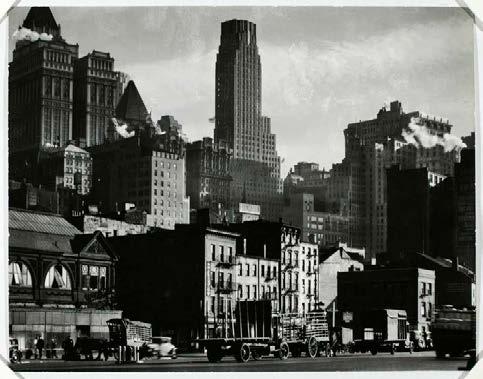
PAGE 418 | PERSONS OF INTEREST | ISSUE 1

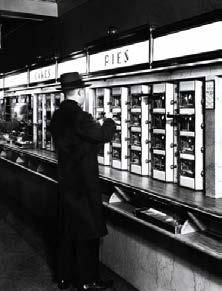
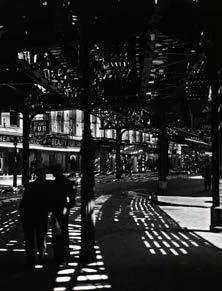
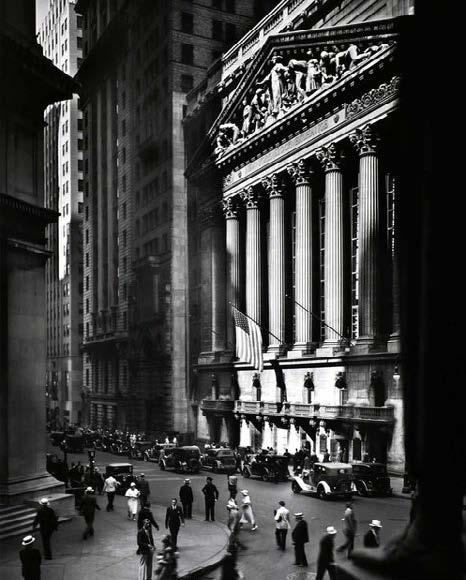 NEW YORK STOCK EHANGE, BERENICE ABBOTT, 1936
NEW YORK STOCK EHANGE, BERENICE ABBOTT, 1936
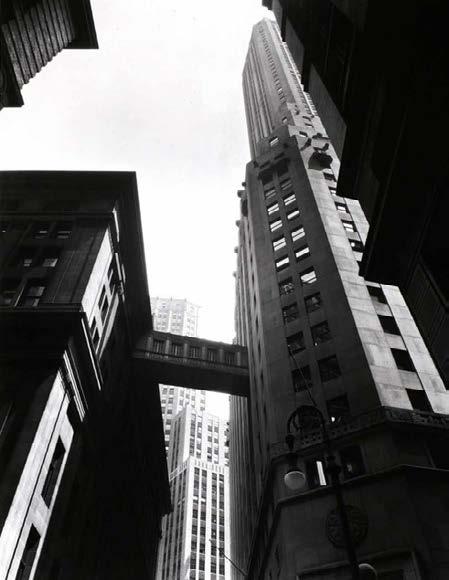 CANYON, BERENICE ABBOTT, 1936
CANYON, BERENICE ABBOTT, 1936
(LEFT) BOUNCING BALL WITH DIMINISHING ARCS,1958-1961 (RIGHT) BEAMS OF LIGHT THROUGH GLASS, 1958-1961

PAGE 422 | PERSONS OF INTEREST | ISSUE 1

BERNICE ABBOT | PAGE 423
CARRIE MAE WEEMS

PHOTOGRAPHER
Considered one of the most influential American artists, Carrie Mae Weems has investigated family-relationships, cultural identity, sexism, class, political systems, and the consequences of power. Determined as ever to enter the picture—both literally and metaphorically—Weems has sustained an on-going dialogue within contemporary discourse for over thirty years. During this time, Carrie Mae Weems has developed a complex body of art employing photographs, text, fabric, audio, digital images, installation, and video. Weems, who is probably best known as a photographer, initially studied modern dance. She received her first camera in
her 20s. She was influenced by the work of earlier African American photographers who documented the Black experience, notably Roy DeCarava. She began to refer to herself as the “image maker.” Weems’s early images explored personal and familial themes and often were accompanied by text and audio recordings. Her work was exhibited frequently and is represented in such institutions as the Museum of Modern Art and the Metropolitan Museum of Art, New York City; the Museum of Contemporary Art, Los Angeles; and Tate Modern, London. In 2014 she became the first Black woman to have a retrospective at the Guggenheim Museum.
PAGE 424 | PERSONS OF INTEREST | ISSUE 1
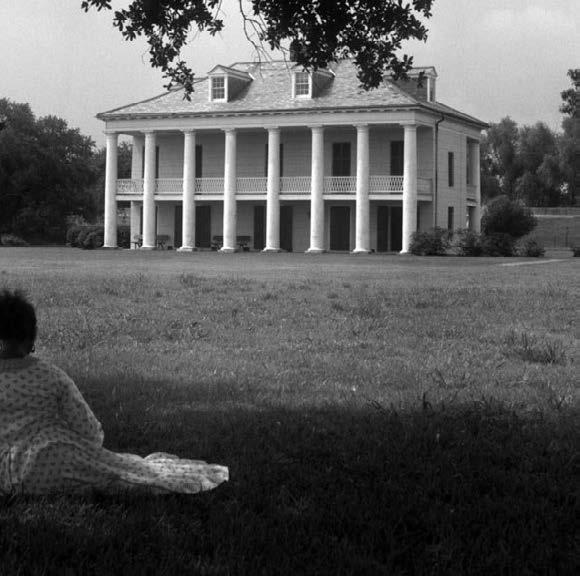
Roaming


PAGE 426 | PERSONS OF INTEREST | ISSUE 1
ROAMING, CARRIE MAE WEEMS, 2006
Art is the one place we all turn to for solace
—CARRIE MAE WEEMS
CARRIE MAE WEEMS | PAGE 427


PAGE 62
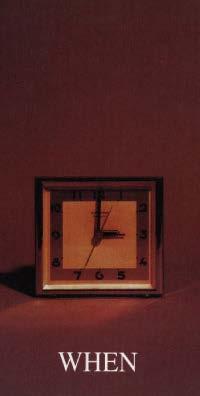
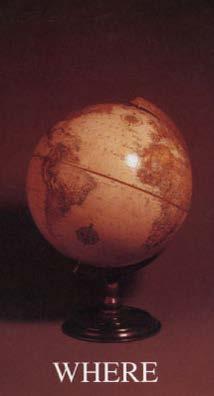
PAGE 63
The Kitchen Table Series

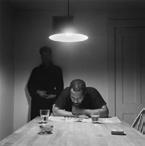
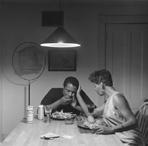


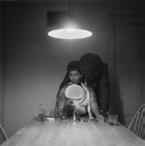
These photographs feature a succession of staged scenes that explore female identity, experiences, and relationships in the context of a traditionally female domain.
Employing visual performance, image making, and a compelling narrative text, the powerful series provides a lens through which to view a woman’s life.
PAGE 430 | PERSONS OF INTEREST | ISSUE 1 Kitchen Table 1 Kitchen Table 2 Kitchen Table 3 Kitchen Table 4 Kitchen Table 5 Kitchen Table 6
The Kitchen Table Series, 1990
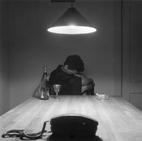

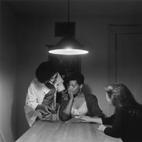


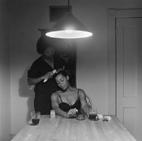
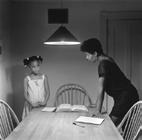
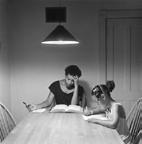
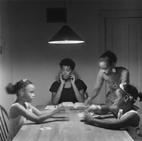
CARRIE MAE WEEMS | PAGE 431
7 Kitchen
9 Kitchen
8 Kitchen Table 10 Kitchen Table 12 Kitchen Table 11 Kitchen Table 14 Kitchen Table 14 Kitchen Table 15
Kitchen Table
Table
Table
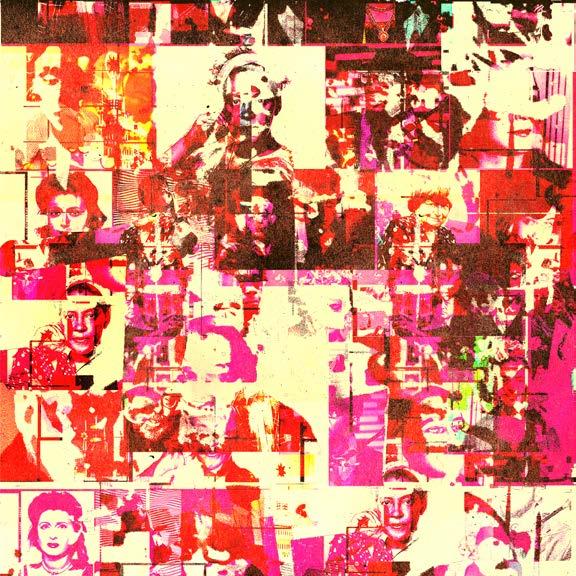







 MOVIE POSTER FOR MAMMA ROMA
MOVIE POSTER FOR MAMMA ROMA
 ANNA MAGNANI IN ANGELINA
ANNA MAGNANI IN ANGELINA
 IRVING PENN, IRVING PENN: CRACKED MIRROR, NEW YORK, 1986
IRVING PENN, IRVING PENN: CRACKED MIRROR, NEW YORK, 1986
 Black and hite Portrait of Jean Patchett Shot for Vogue in 1949
Black and hite Portrait of Jean Patchett Shot for Vogue in 1949

 UNKNOWN PHOTOGRAPHER, IRVING PENN AT WORK IN CUZCO, 1948. © THE IRVING PENN FOUNDATION
UNKNOWN PHOTOGRAPHER, IRVING PENN AT WORK IN CUZCO, 1948. © THE IRVING PENN FOUNDATION








 James Baldwin, 1963
James Baldwin, 1963













 CHILDREN WITH GOGGLES AND MASKS
CHILDREN WITH GOGGLES AND MASKS















 —LETIZIA BATTAGLIA
—LETIZIA BATTAGLIA






















































 PORTRAIT OF TEJU COLE
PORTRAIT OF TEJU COLE





























 - BODYS ISEK KINGELEZ
- BODYS ISEK KINGELEZ









 DO AMARAL, O VENDEDOR DE FRUTAS (1925)
DO AMARAL, O VENDEDOR DE FRUTAS (1925)







 THE ULTRA VIOLETS ARTICLE HARPER’S BAZAAR, PHOTOGRAPHS RICHARD AVEDON PUBLISHED IN THE LAST ISSUE DIRECTED BY ALEXY BRODOVITCH 1958
THE ULTRA VIOLETS ARTICLE HARPER’S BAZAAR, PHOTOGRAPHS RICHARD AVEDON PUBLISHED IN THE LAST ISSUE DIRECTED BY ALEXY BRODOVITCH 1958
 ALEXEY BRODOVITCH, TWIST AND TURN AS YOU WILL, JUNIOR BAZAAR, JANUARY 1947, PHOTOS: GEORGE BARKENTIN
ALEXEY BRODOVITCH, TWIST AND TURN AS YOU WILL, JUNIOR BAZAAR, JANUARY 1947, PHOTOS: GEORGE BARKENTIN

 (RIGHT) ALEXEY BRODOVITCH, GRAPHISME, PARIS, 1930
(RIGHT) ALEXEY BRODOVITCH, GRAPHISME, PARIS, 1930













 —GEORGIA O’KEEFFE
—GEORGIA O’KEEFFE


 LEFT: ALVIN AILEY PHOTOGRAPHED BY ERIC N. HONG
LEFT: ALVIN AILEY PHOTOGRAPHED BY ERIC N. HONG









 —FRANCOISE TRUFFAUT
—FRANCOISE TRUFFAUT

























 LEFT: MRS.EAVES TYPEFACE BY ZUZANA LICKO, 1996. RIGHT: TYPOGRAPHY PATTERNS
LEFT: MRS.EAVES TYPEFACE BY ZUZANA LICKO, 1996. RIGHT: TYPOGRAPHY PATTERNS


























 FILM DIRECTOR
FILM DIRECTOR

































 —ZAHA HADID
—ZAHA HADID
 HADID’S HEYDAR ALIYEV CENTERT
HADID’S HEYDAR ALIYEV CENTERT












































































 BARBARA KRUGER, UNTITLED (WHO IS FREE TO CHOOSE?), 1990, GELATIN
BARBARA KRUGER, UNTITLED (WHO IS FREE TO CHOOSE?), 1990, GELATIN


 BARBARA KRUGER,YOU ARE NOT YOURSELF 1981
BARBARA
BARBARA KRUGER,YOU ARE NOT YOURSELF 1981
BARBARA
































 —SAUL BASS
—SAUL BASS







 STILLS FROM SECONDS, 1966
STILLS FROM SECONDS, 1966




 —TWYLA THARPE
—TWYLA THARPE
















 LEFT: PHOTOGRAPH BLOODY SUNDAY, 1972 RIGHT: SERIES OF PHOTOGRAPHS BY GILLES PERESS 1970-85
LEFT: PHOTOGRAPH BLOODY SUNDAY, 1972 RIGHT: SERIES OF PHOTOGRAPHS BY GILLES PERESS 1970-85



































 PORTRAIT OF THE ARTIST’S MOTHER 1924 GIRL WITH LEICA, 1934
PORTRAIT OF THE ARTIST’S MOTHER 1924 GIRL WITH LEICA, 1934





















 THE TWO FRIDAS, FRIDA KHALO, 1939
PORTRAIT OF FRIDA’S FAMILY, FRIDA KHALO, 1940
ME AND MY PARROTS, FRIDA KHALO, 1941
MY NURSE AND I, FRIDA KHALO, 1937
THE TWO FRIDAS, FRIDA KHALO, 1939
PORTRAIT OF FRIDA’S FAMILY, FRIDA KHALO, 1940
ME AND MY PARROTS, FRIDA KHALO, 1941
MY NURSE AND I, FRIDA KHALO, 1937

















 BEHAVIOR OF WAVES, BERENICE ABBOTT, 1962
BEHAVIOR OF WAVES, BERENICE ABBOTT, 1962




 NEW YORK STOCK EHANGE, BERENICE ABBOTT, 1936
NEW YORK STOCK EHANGE, BERENICE ABBOTT, 1936
 CANYON, BERENICE ABBOTT, 1936
CANYON, BERENICE ABBOTT, 1936

























